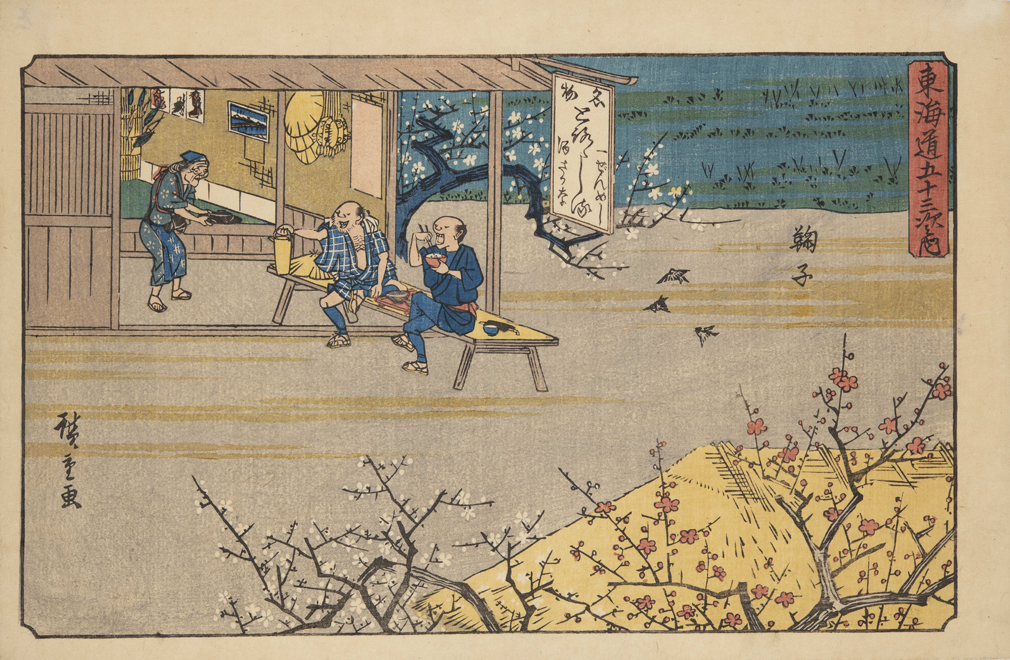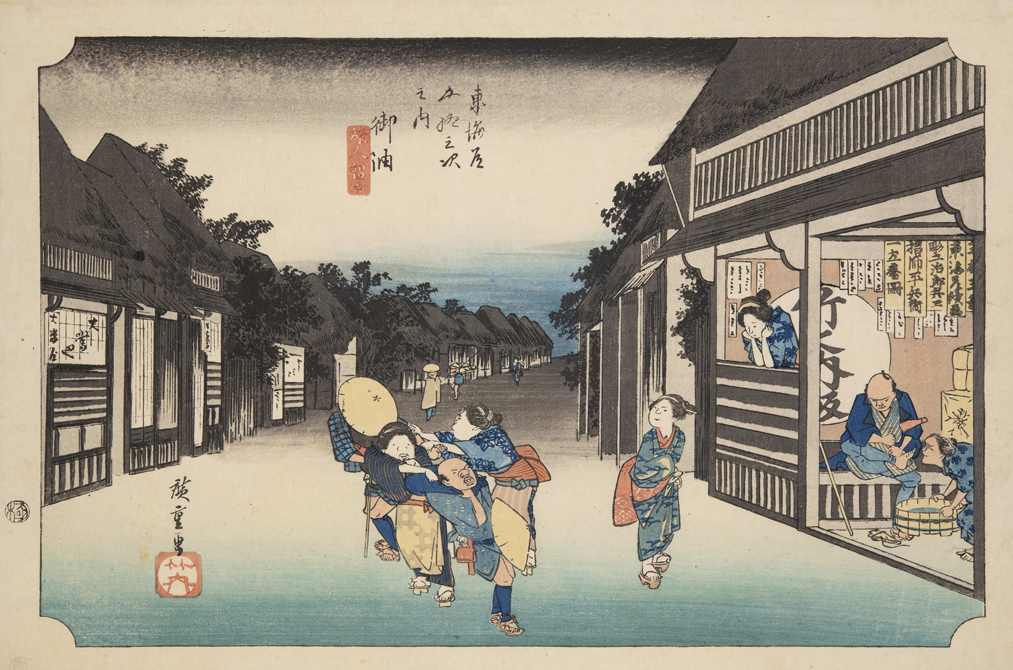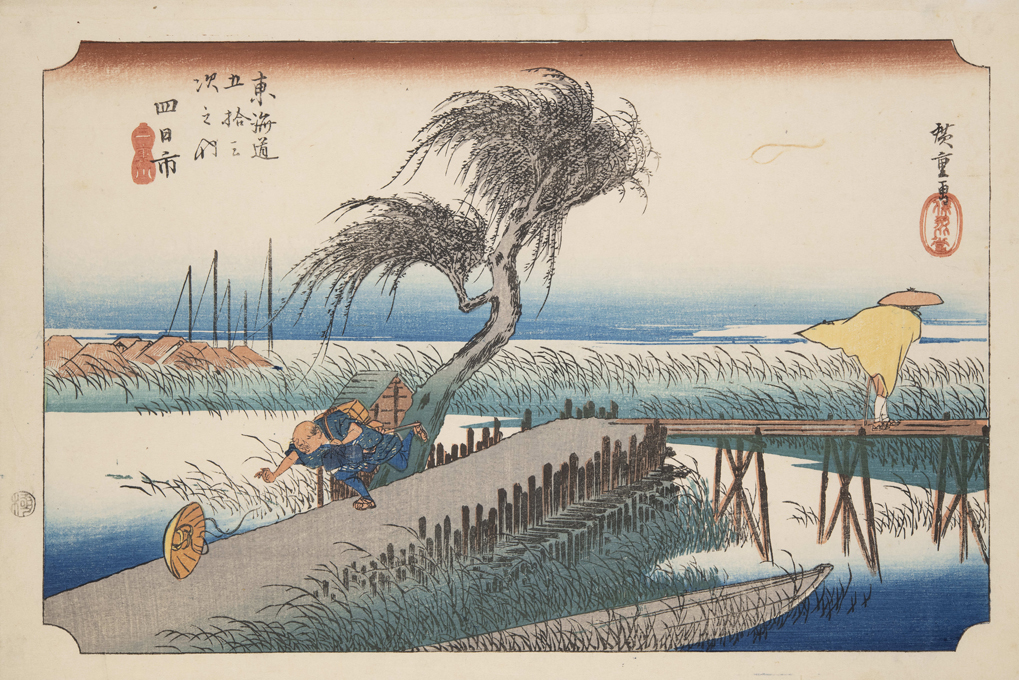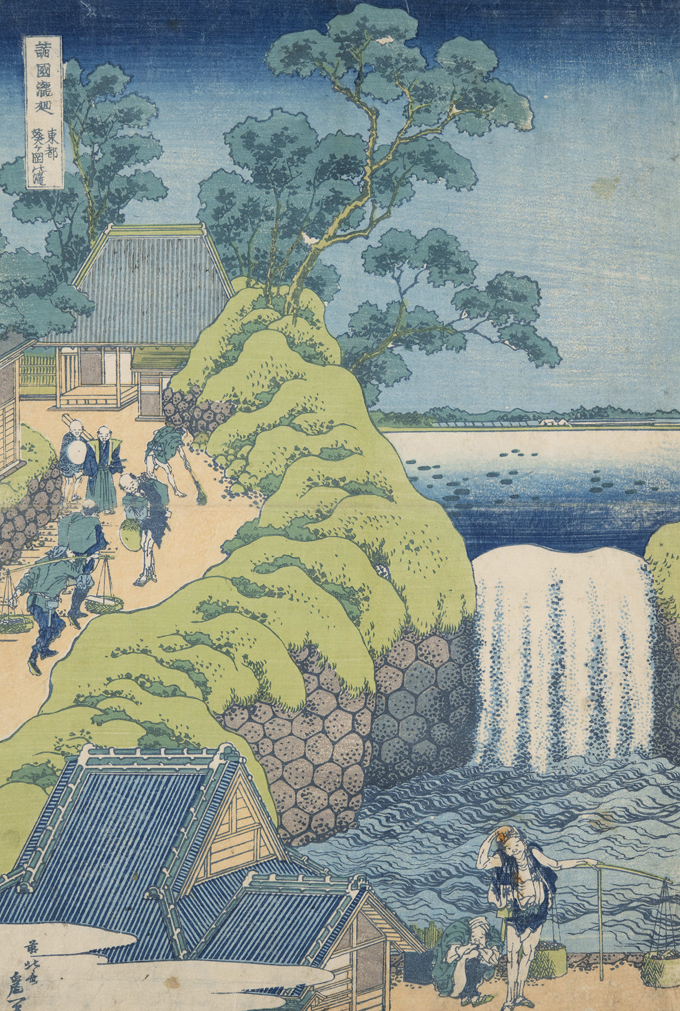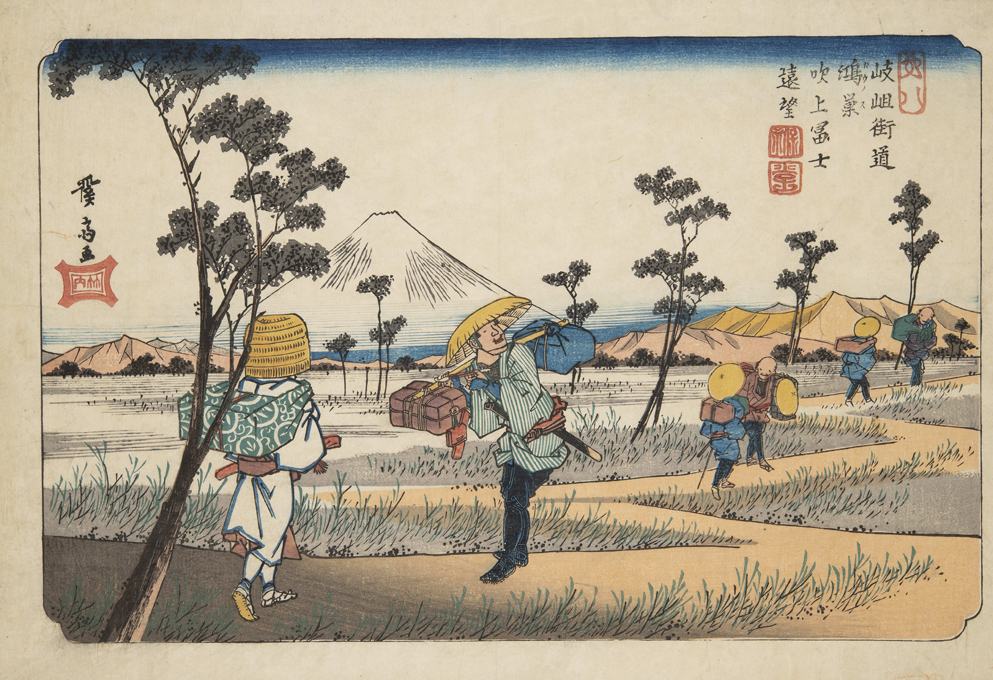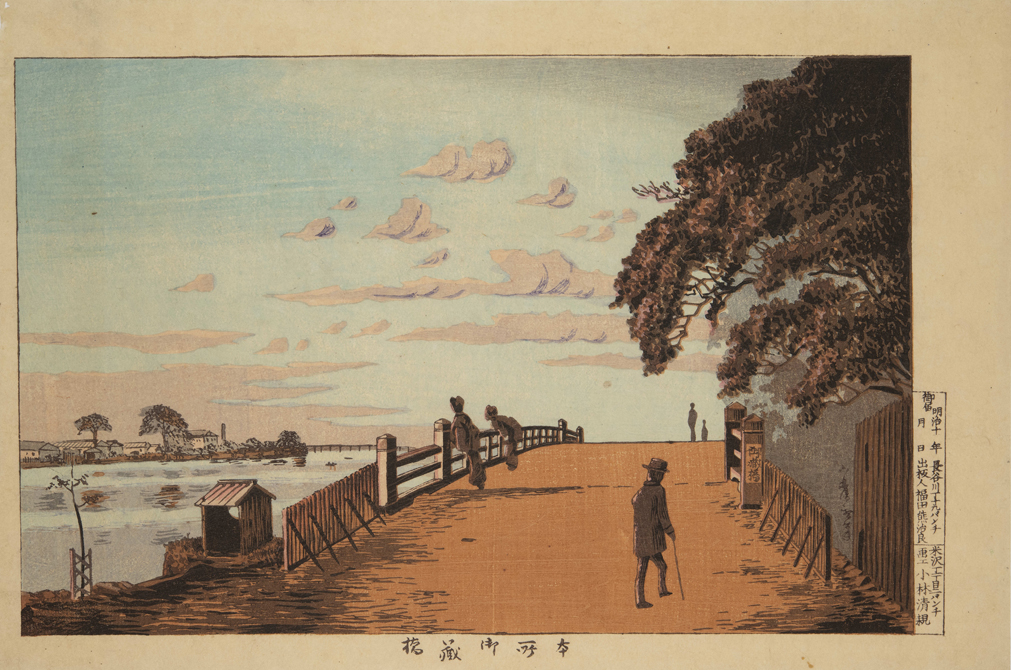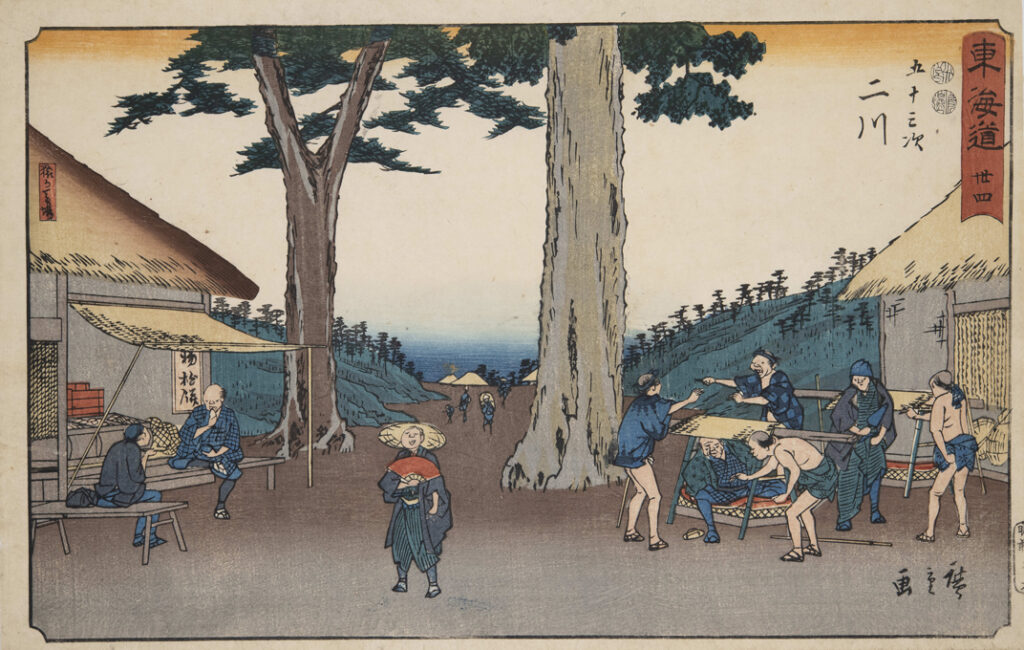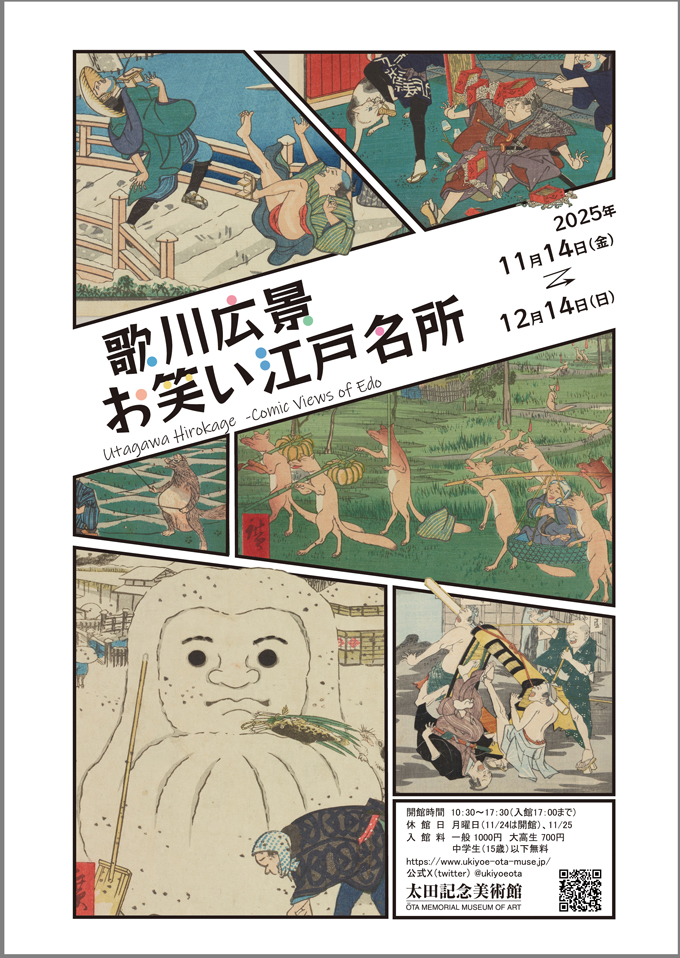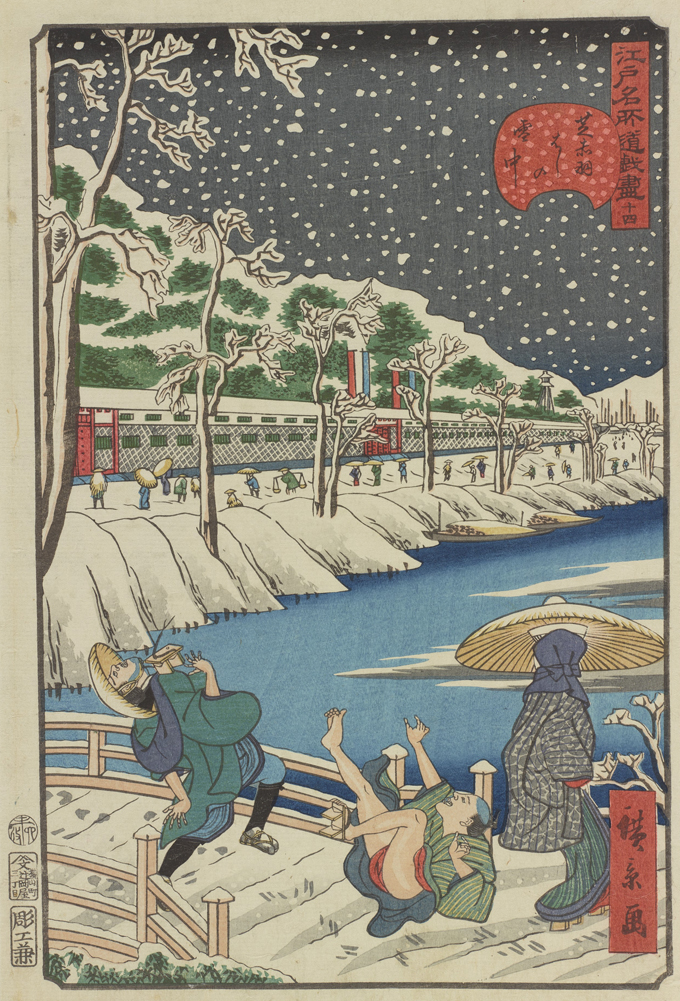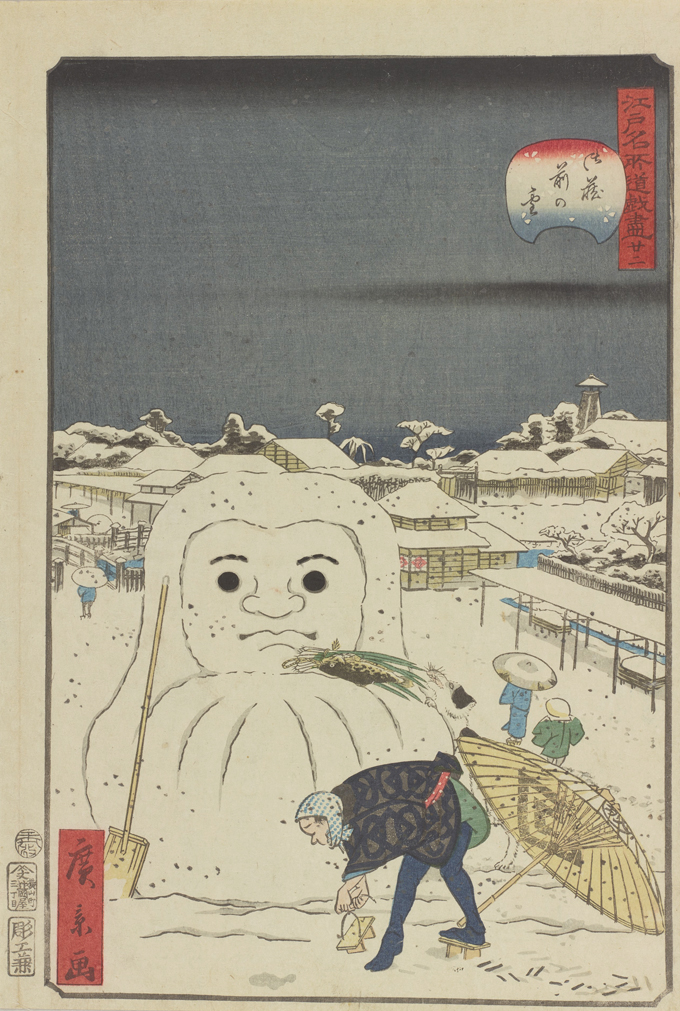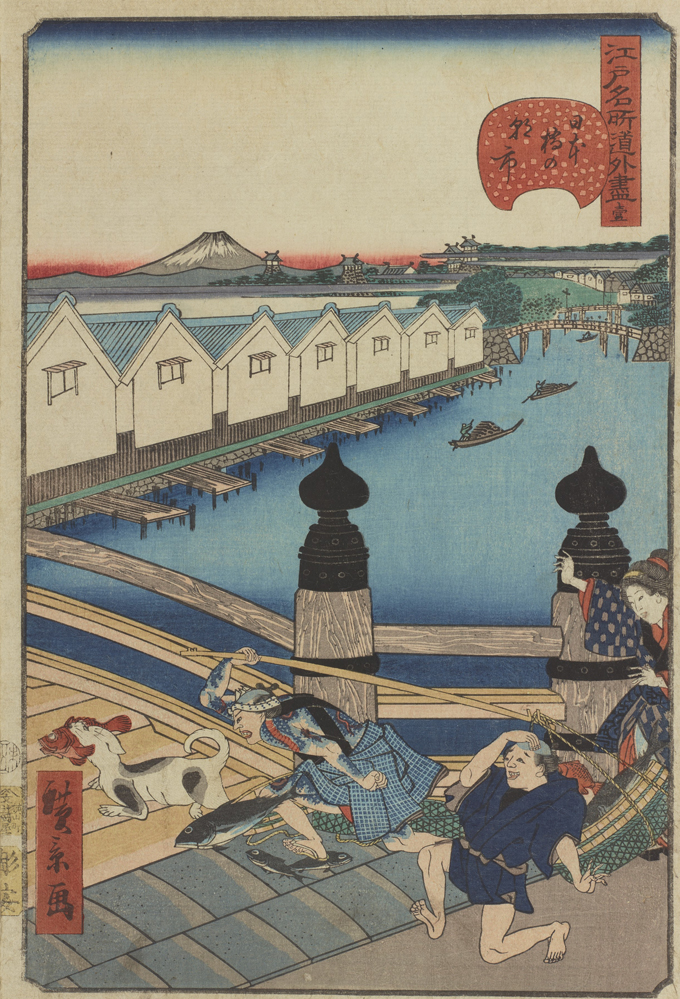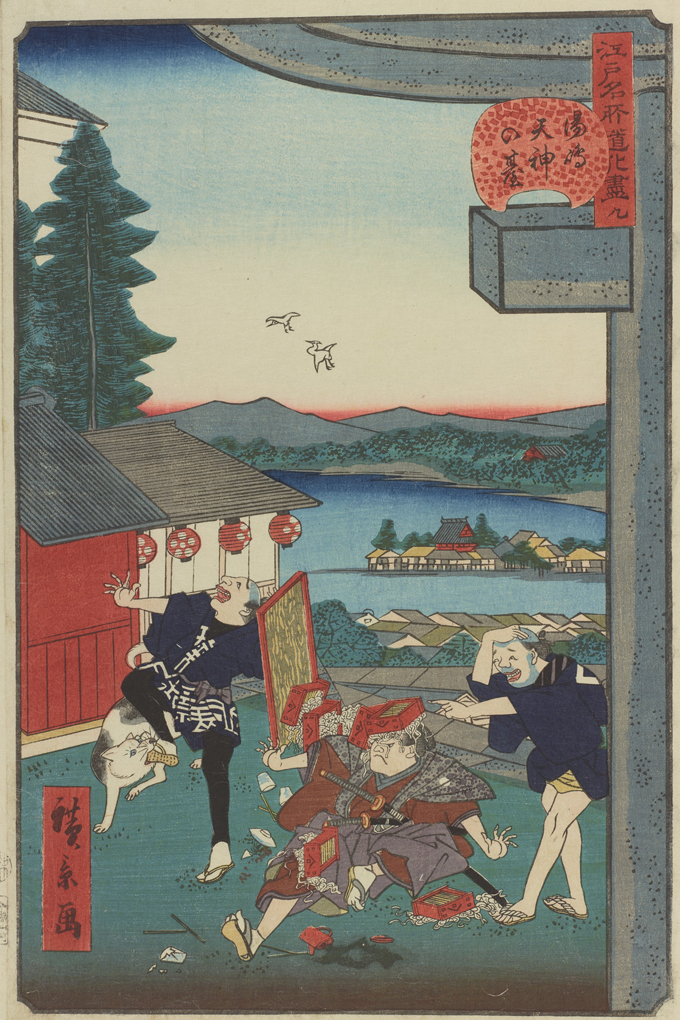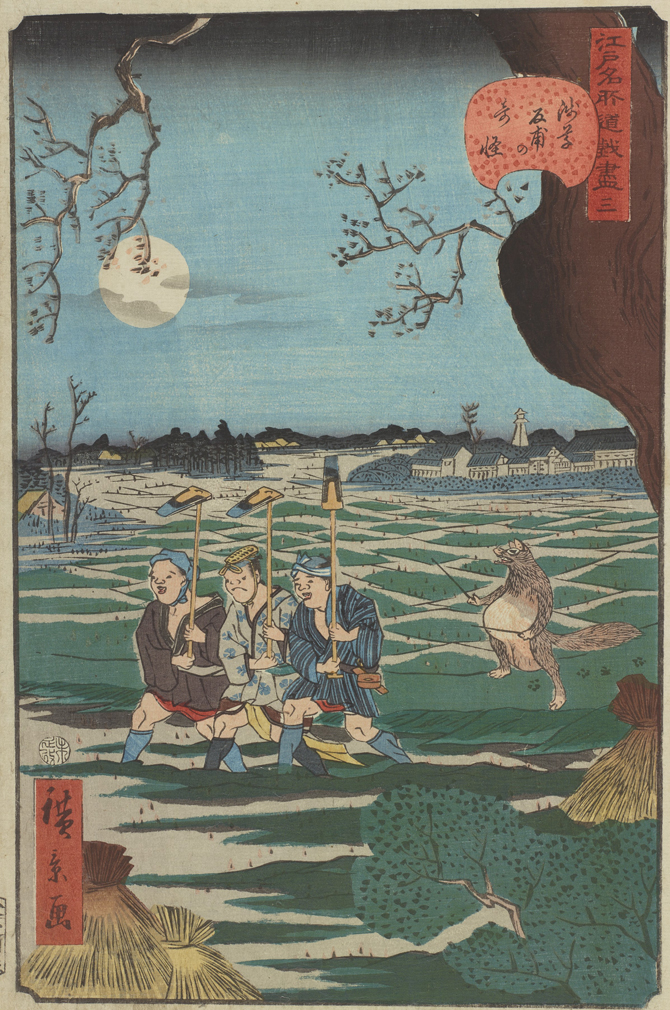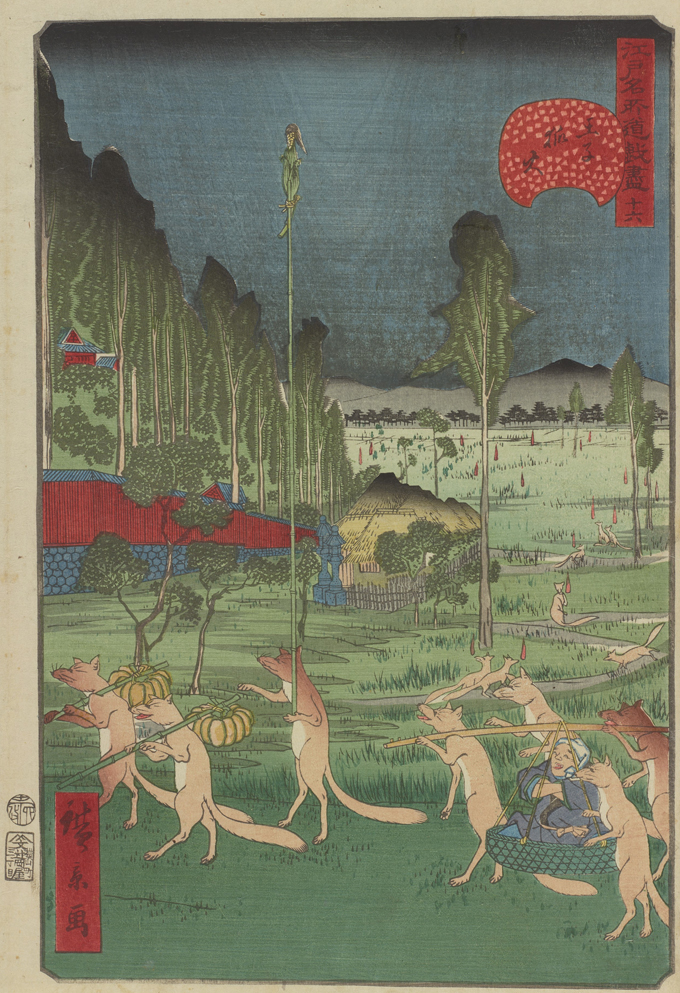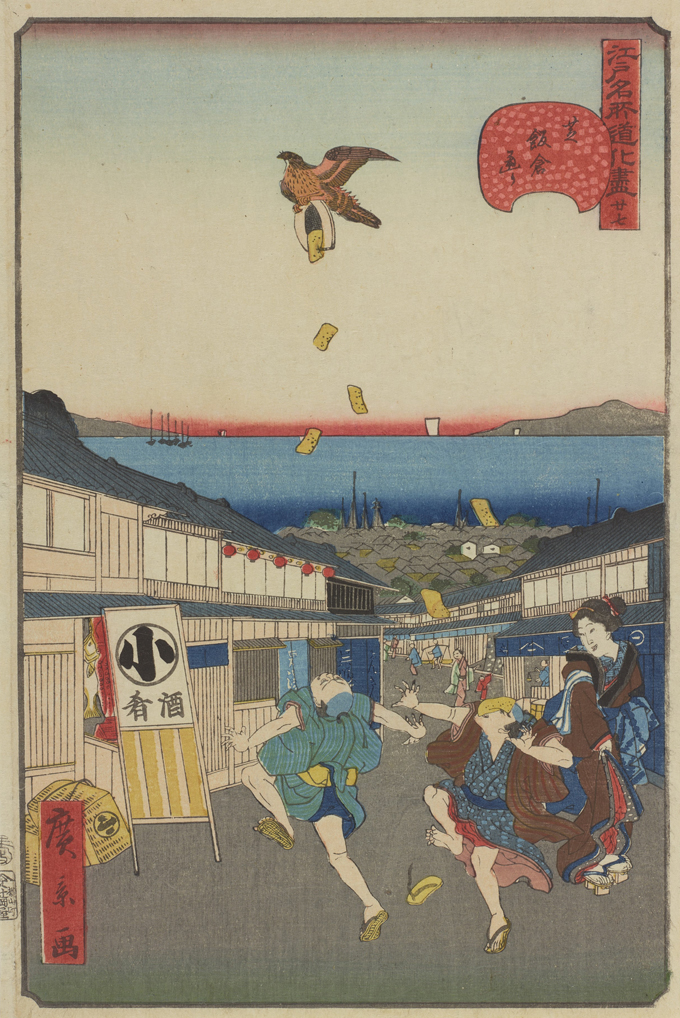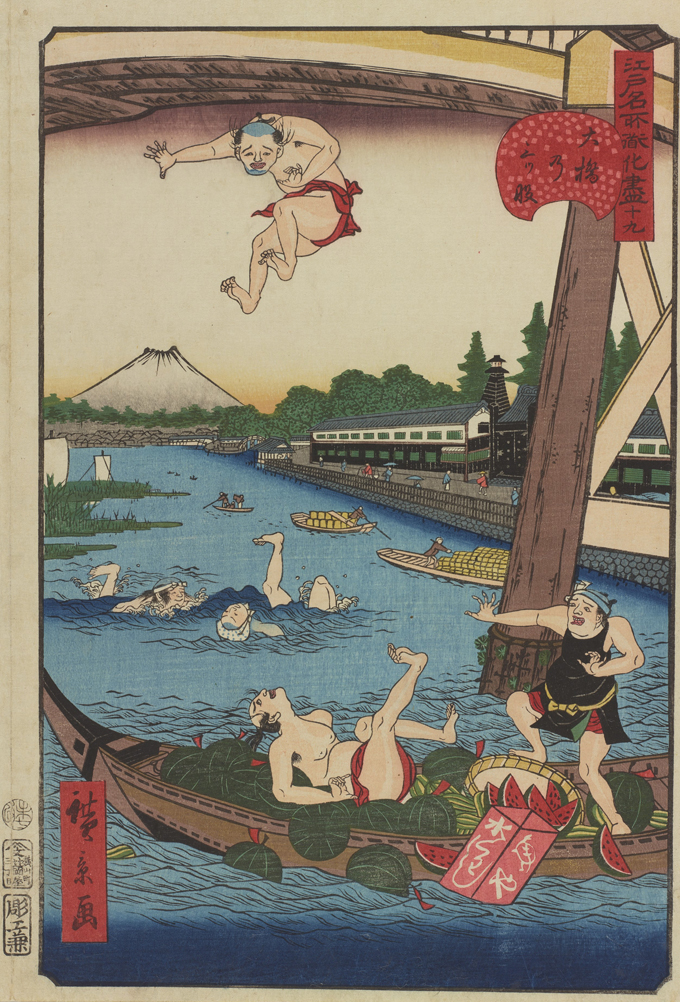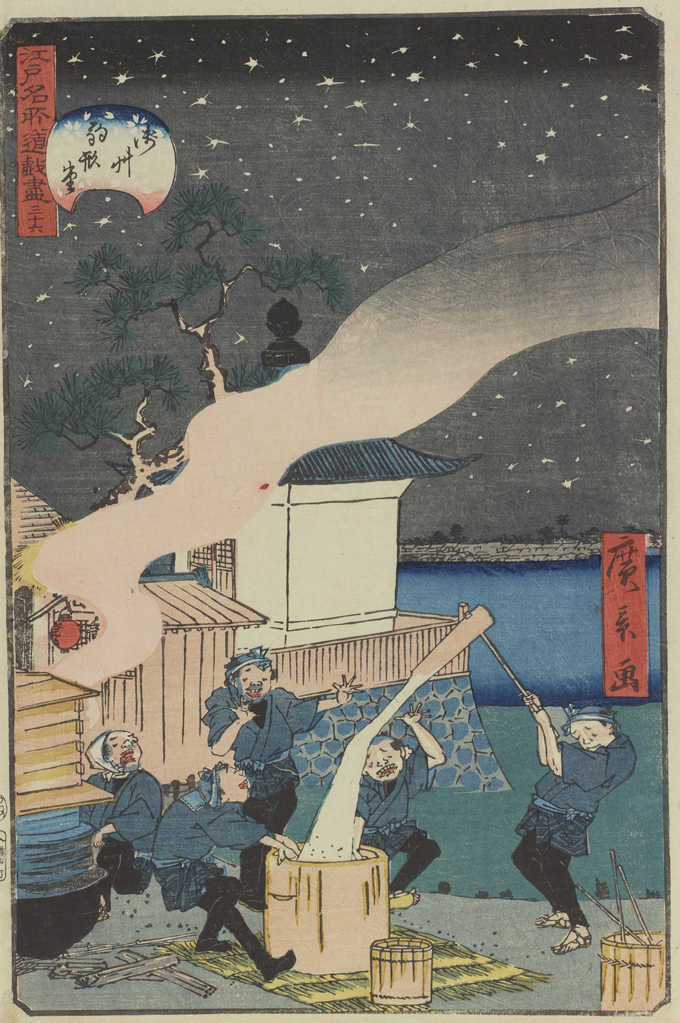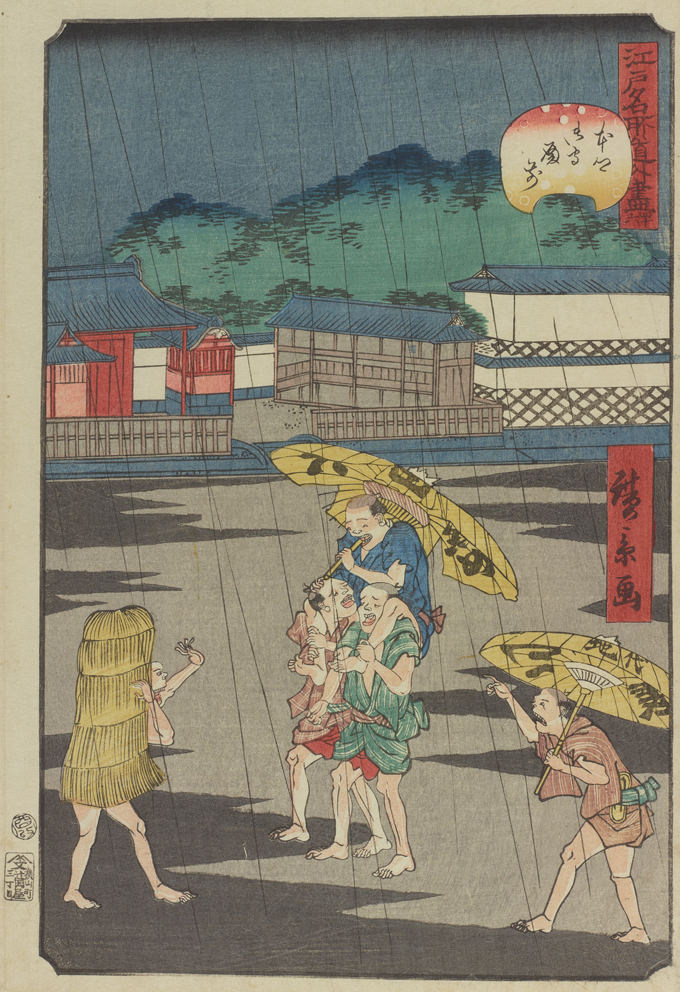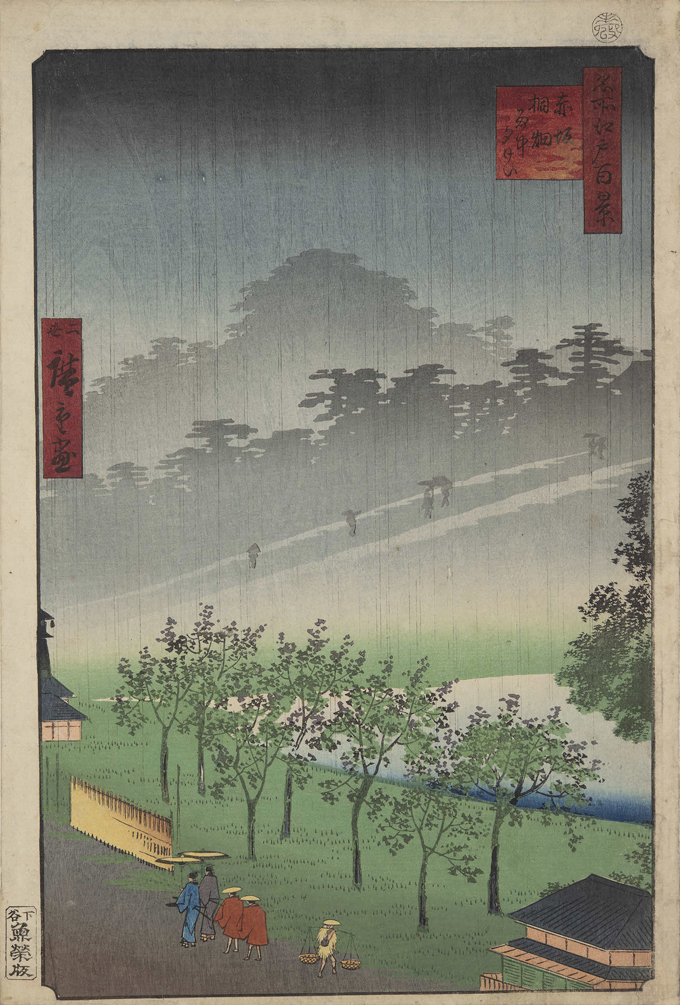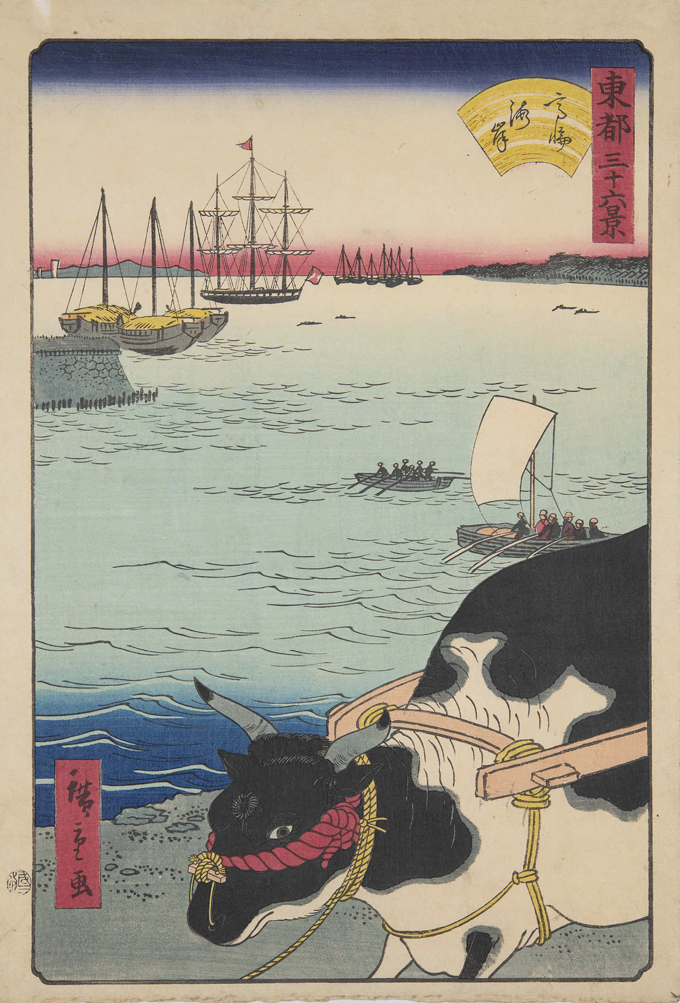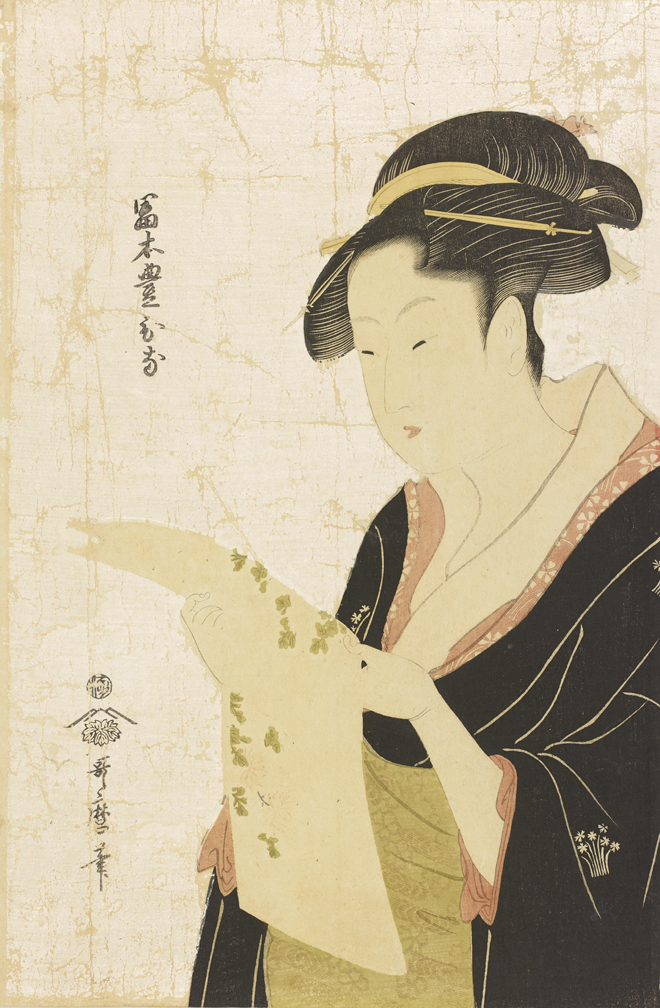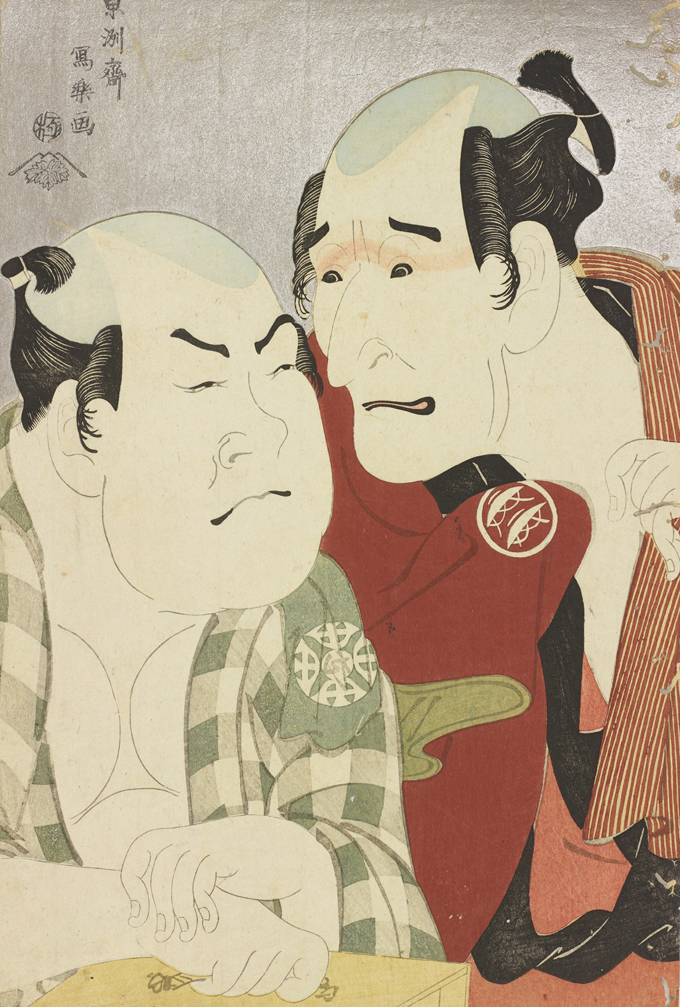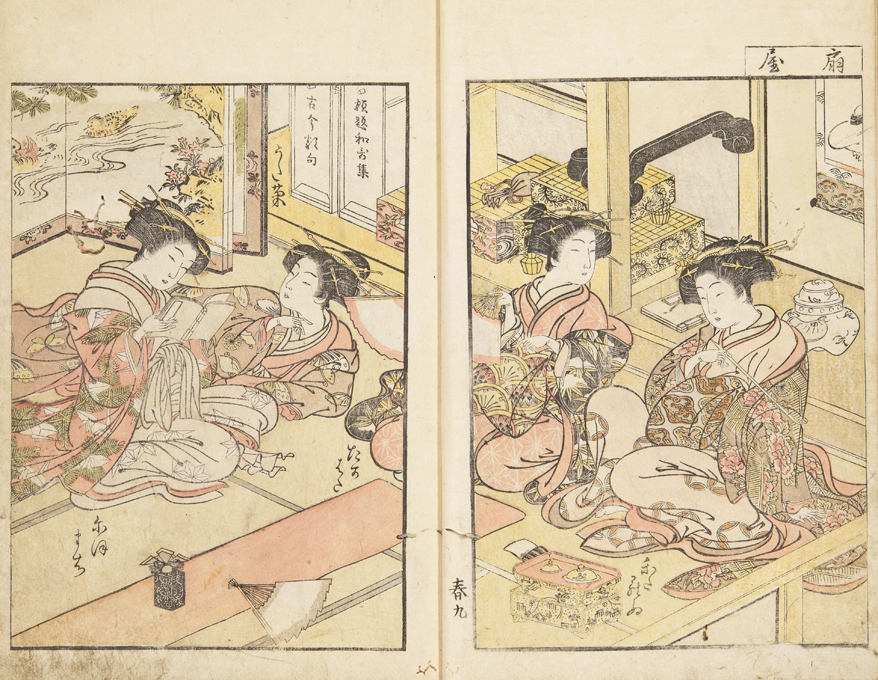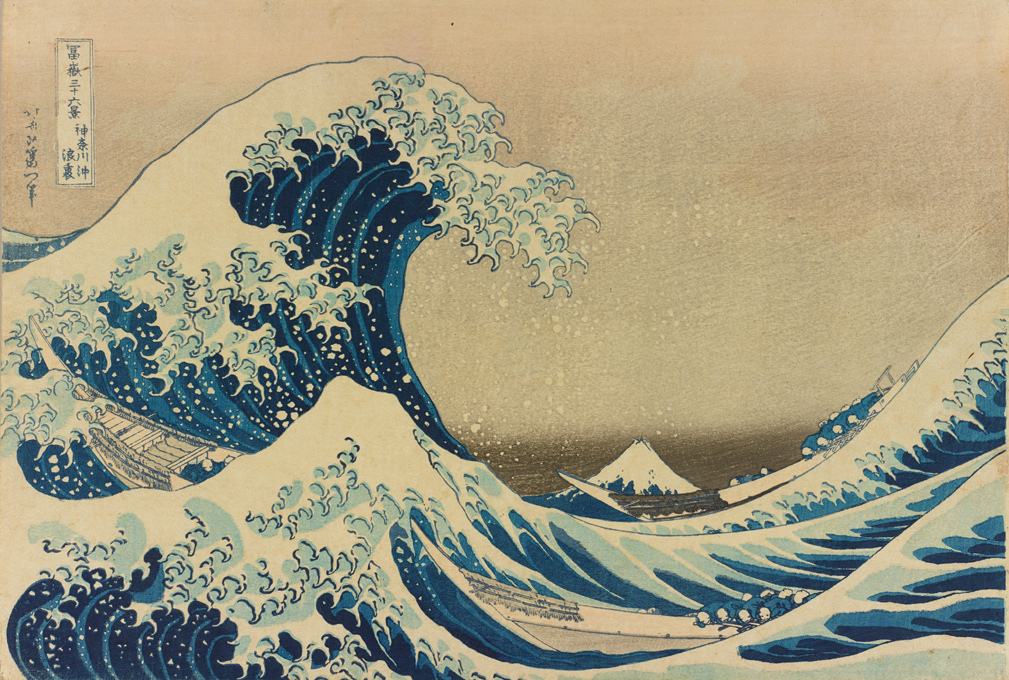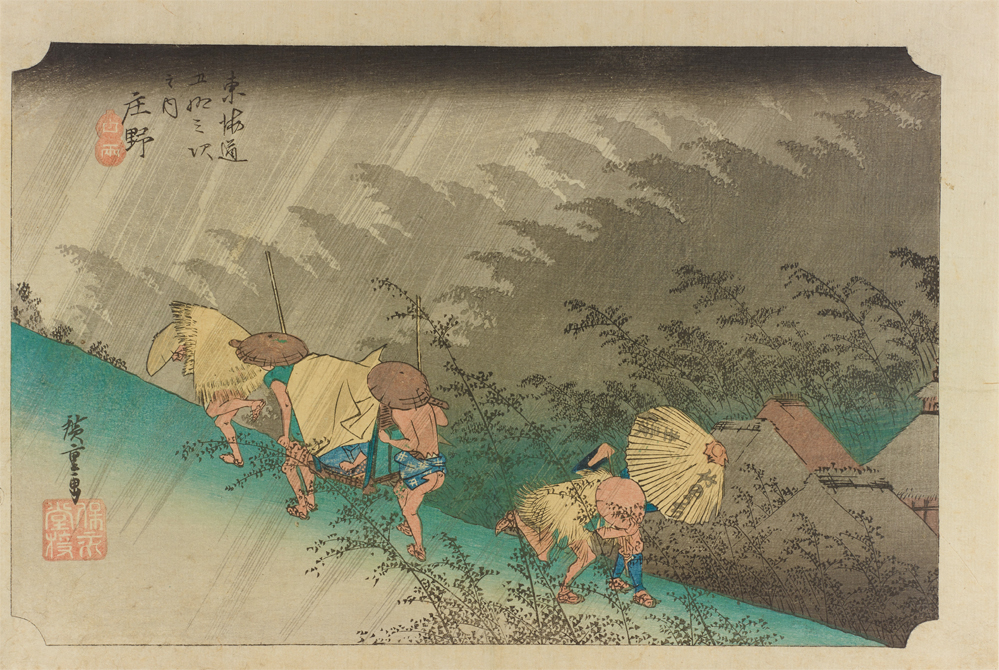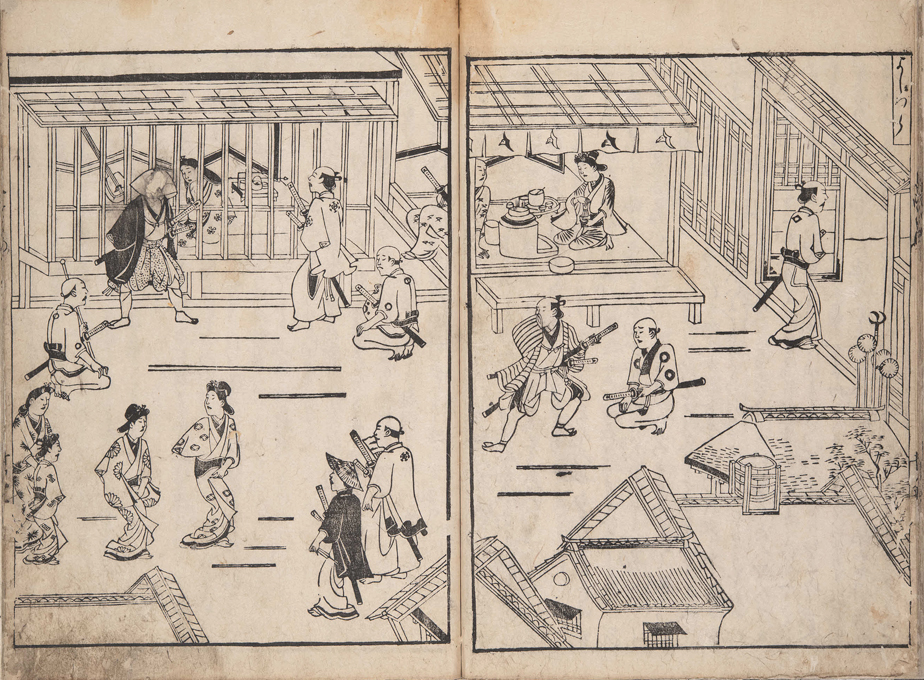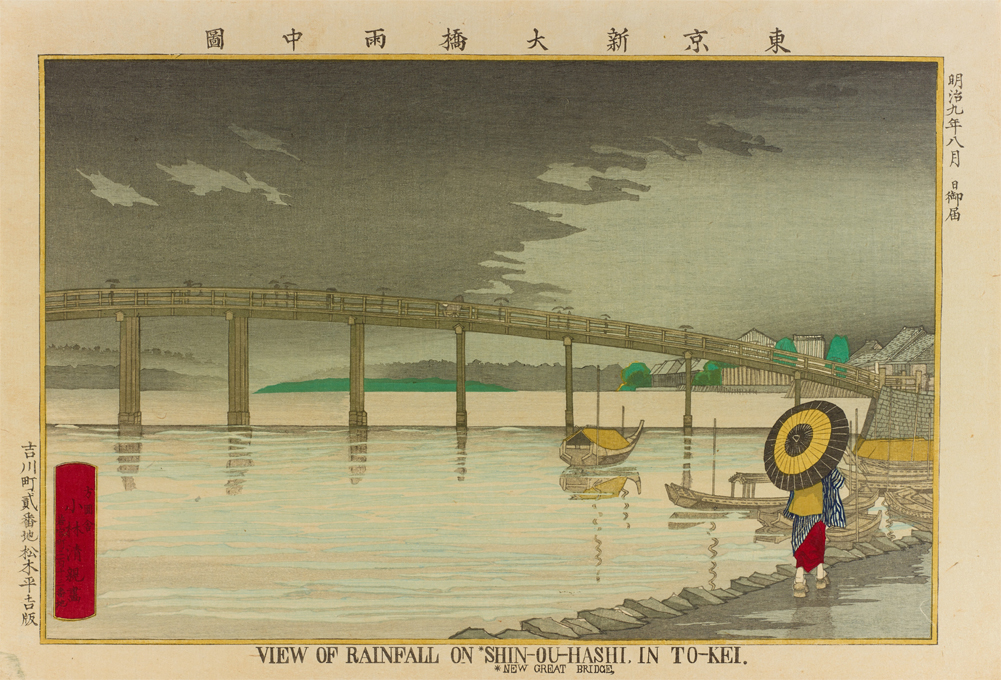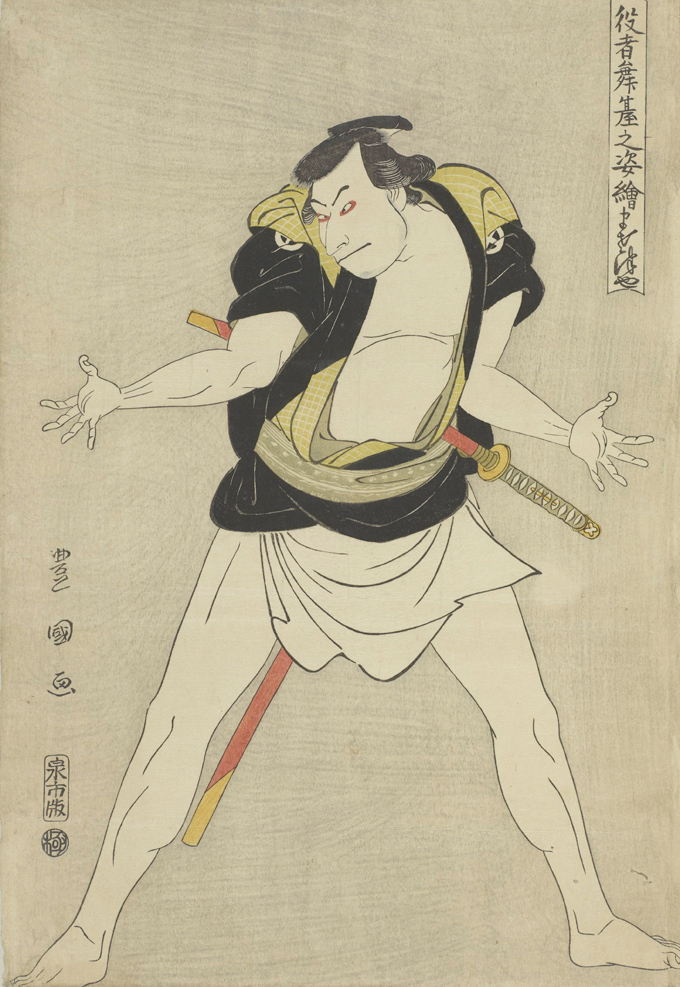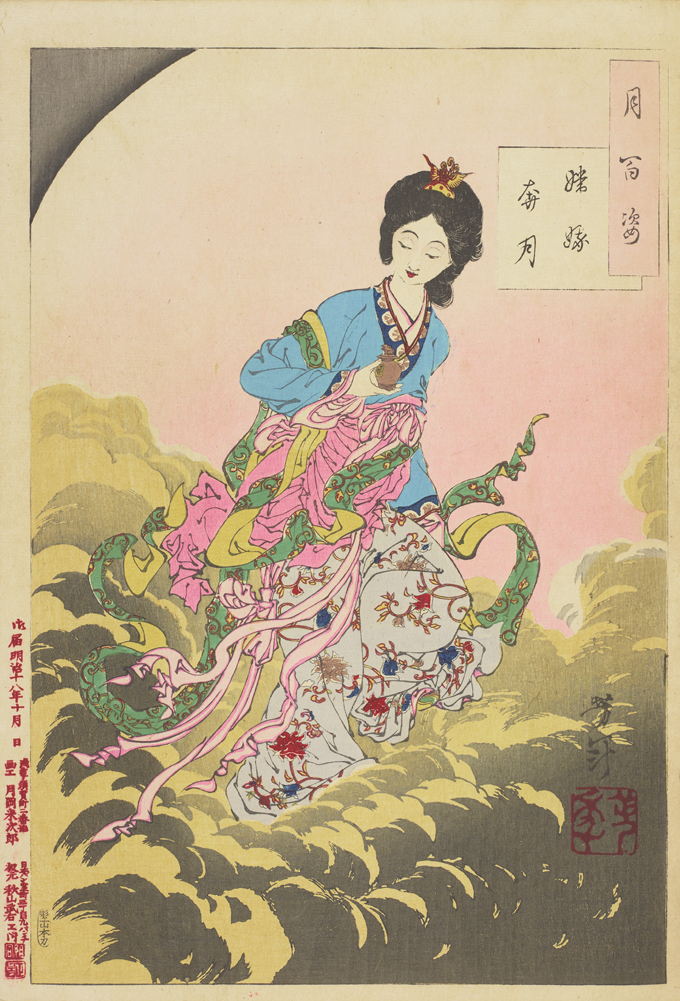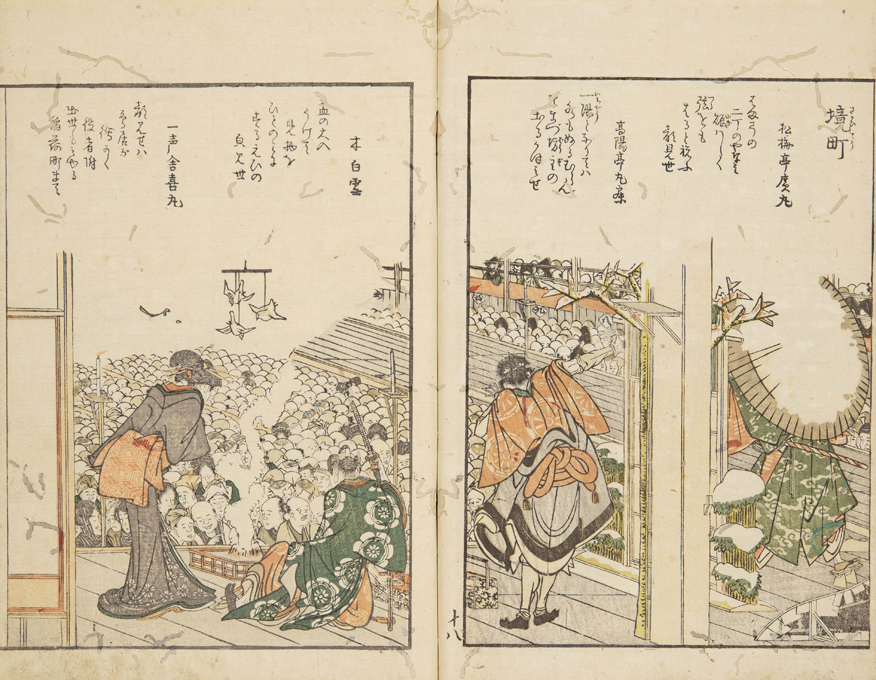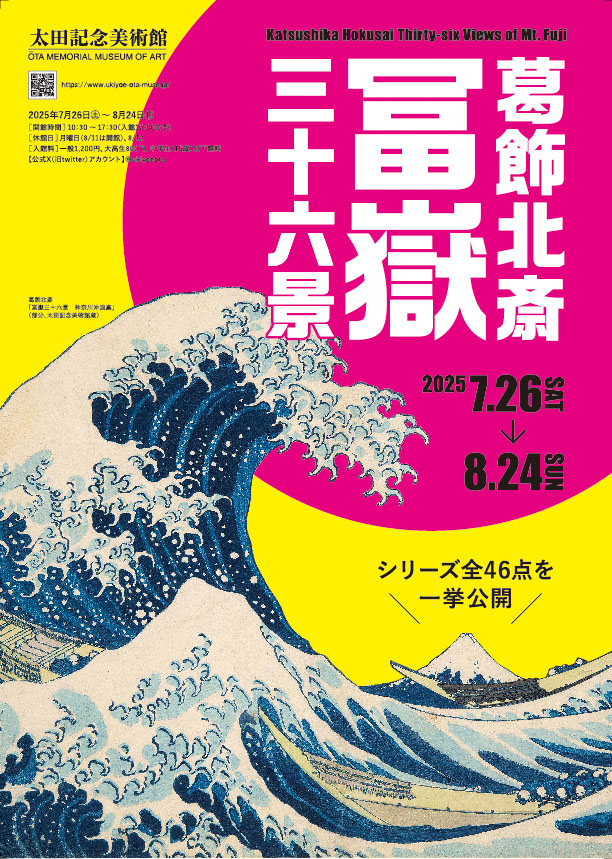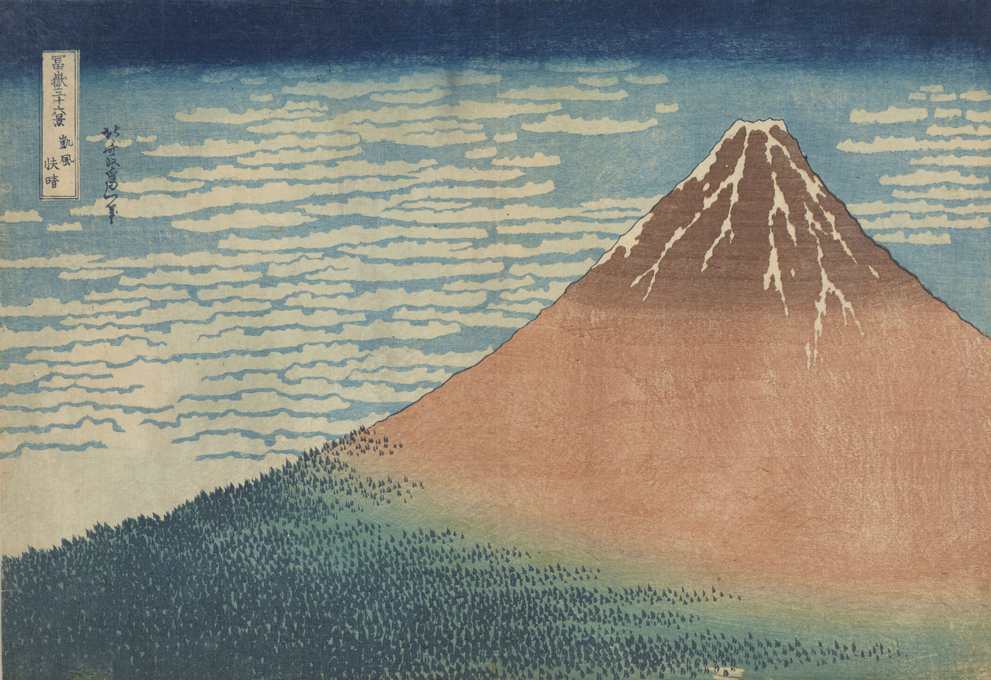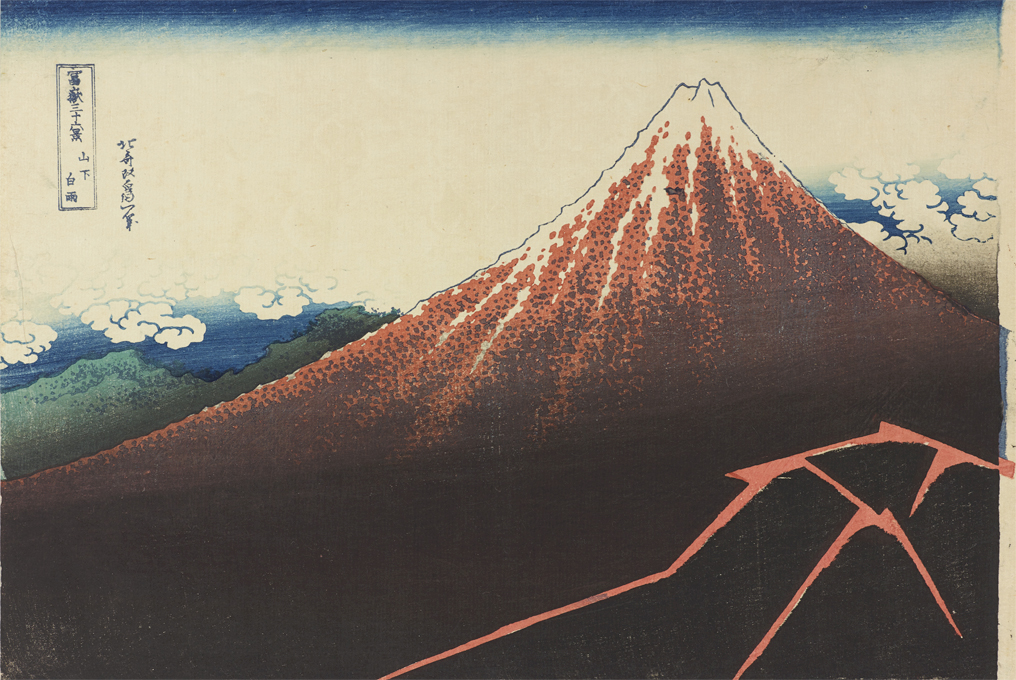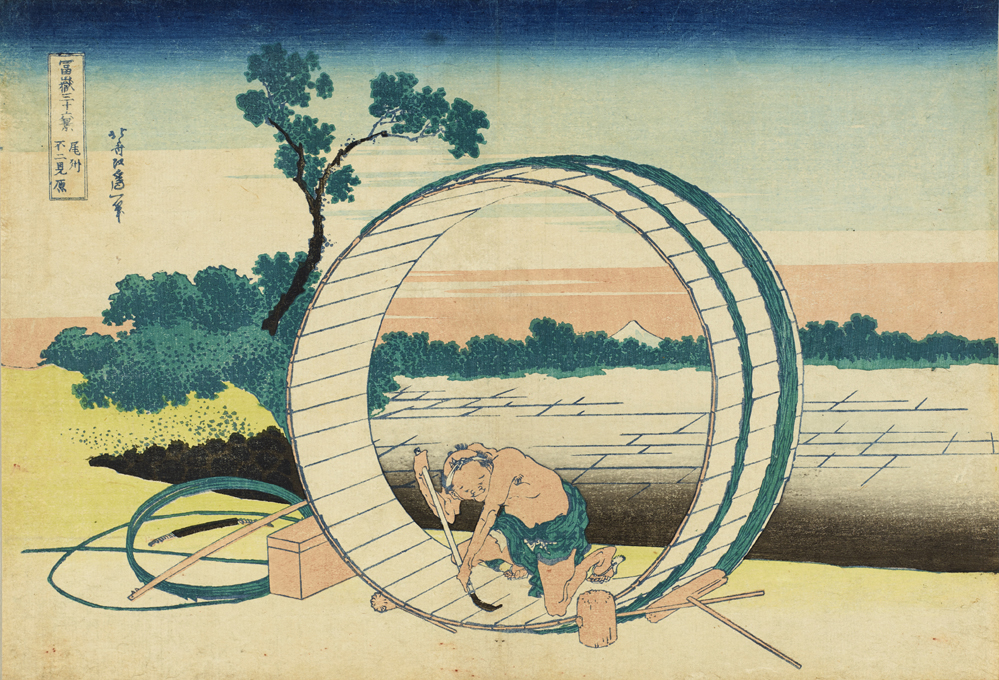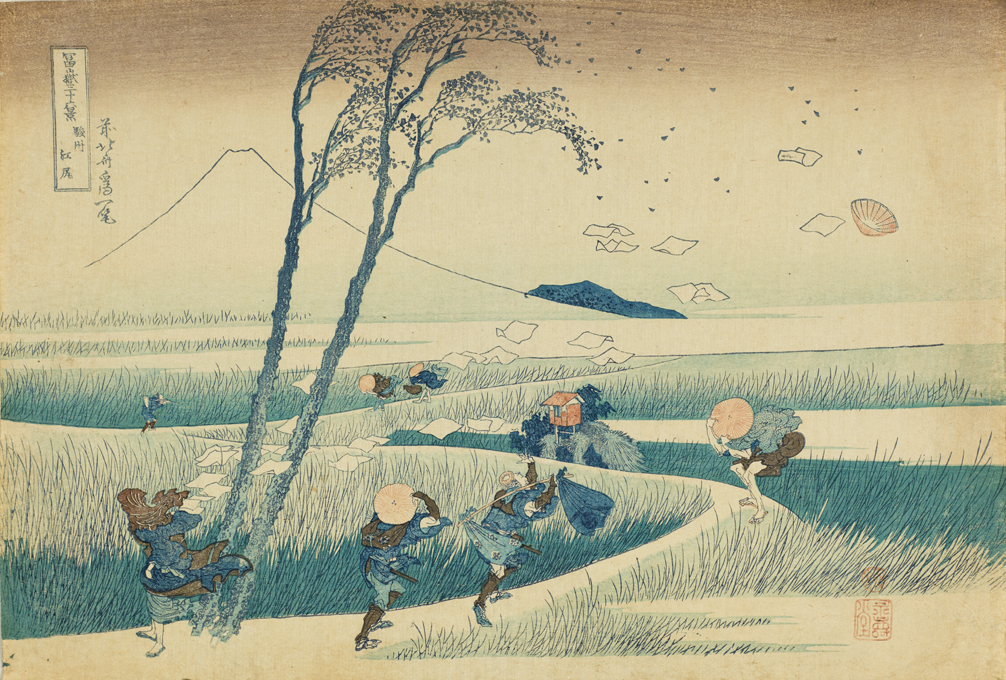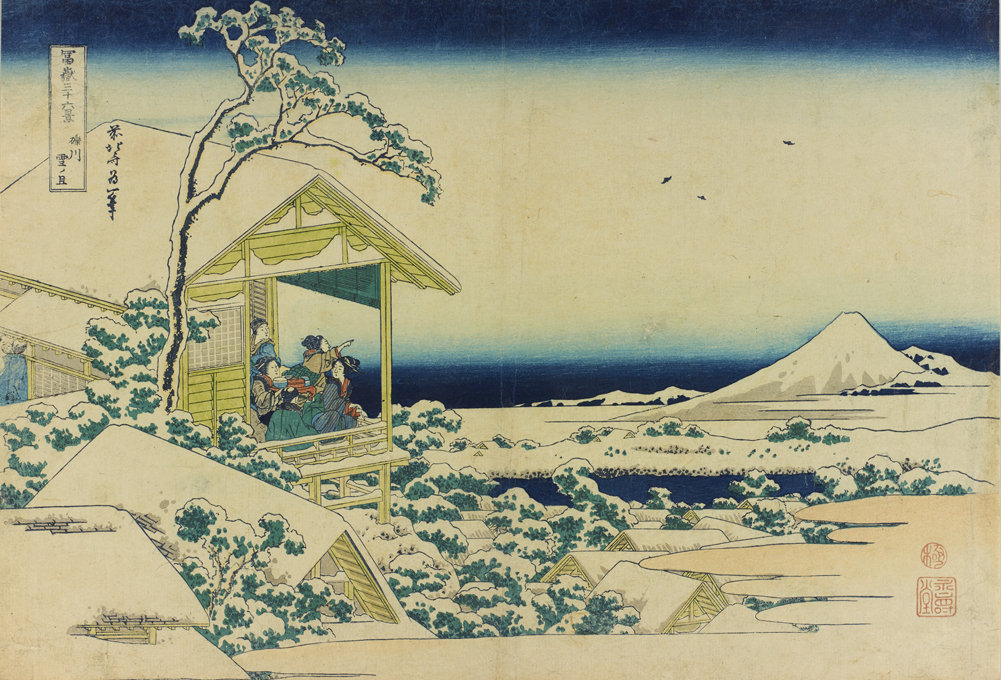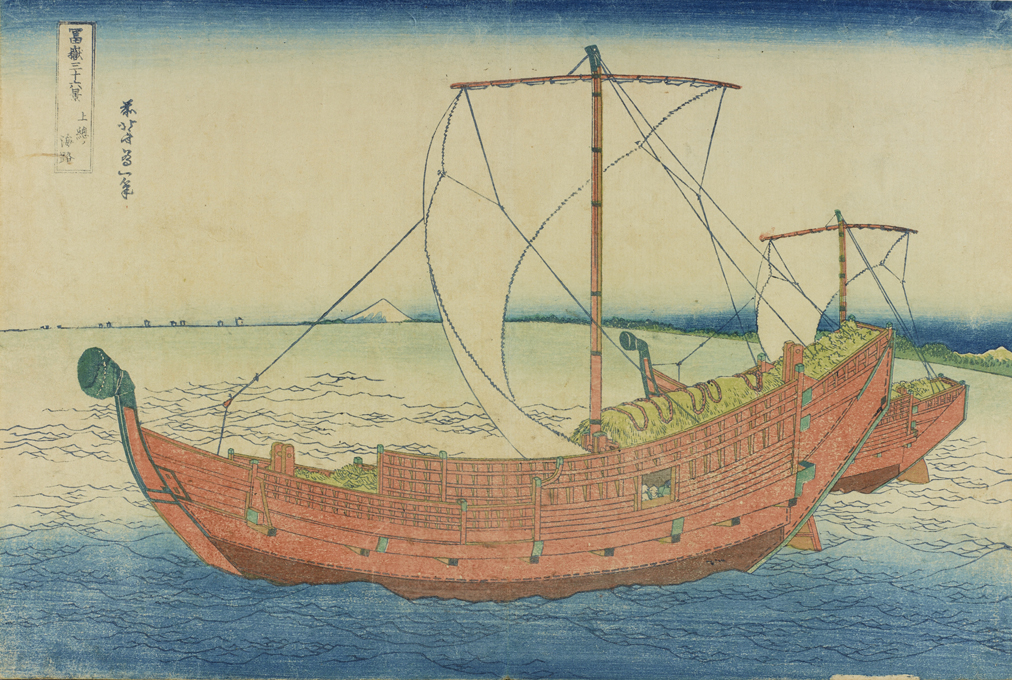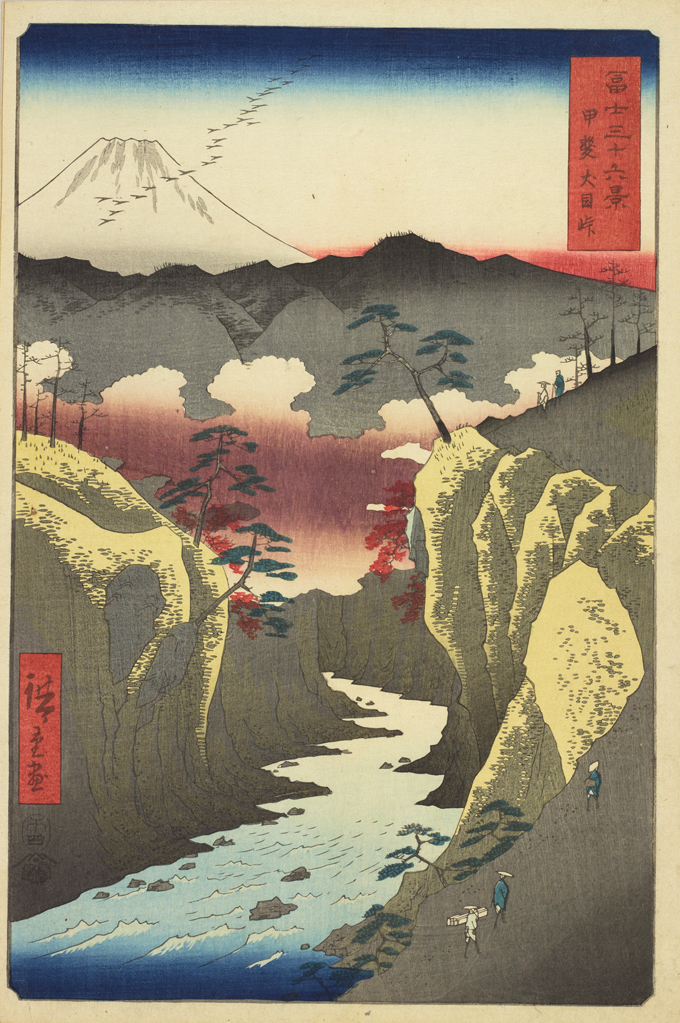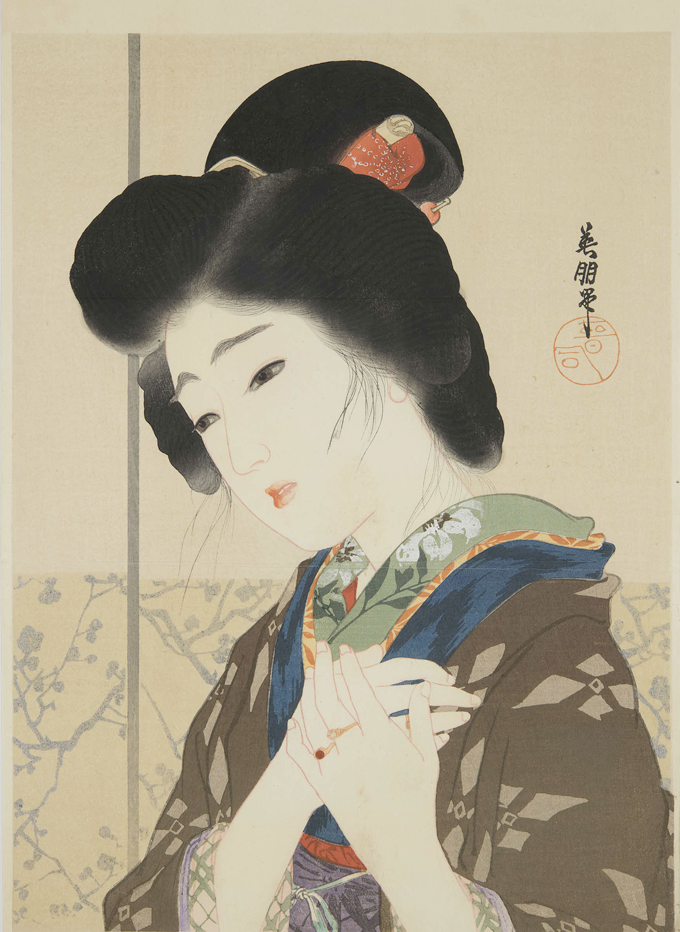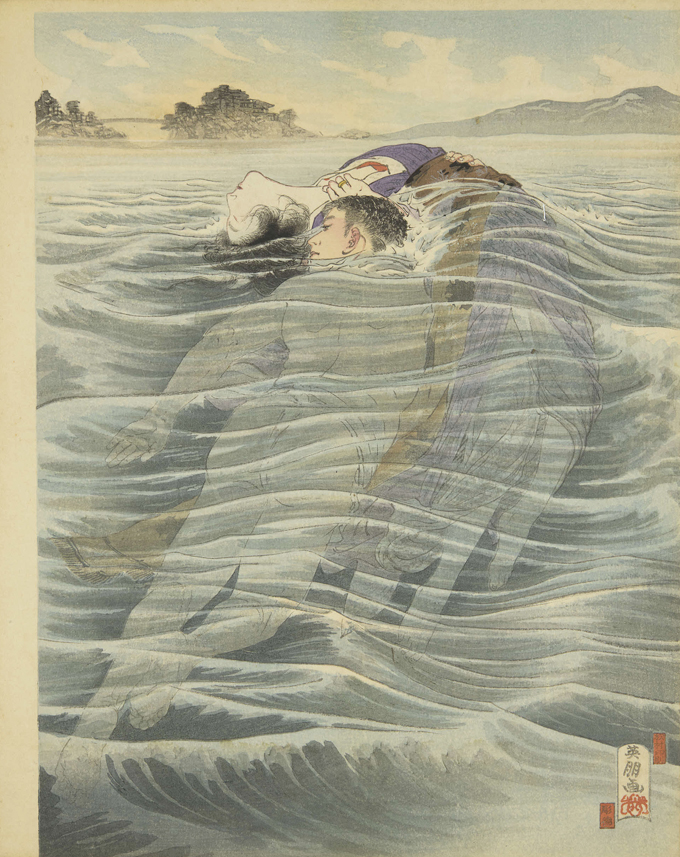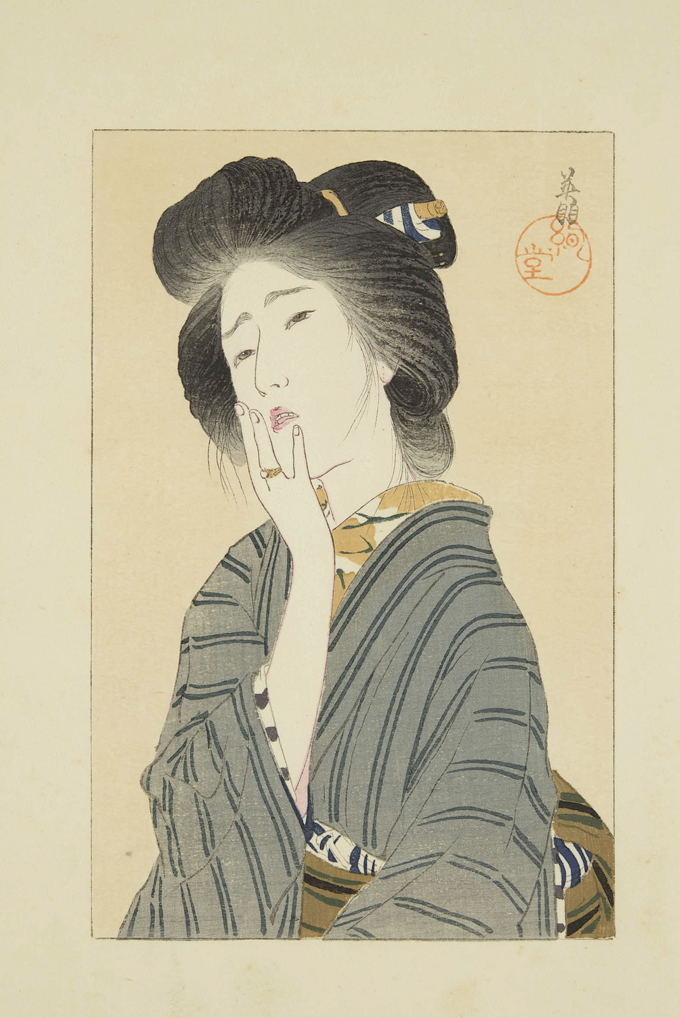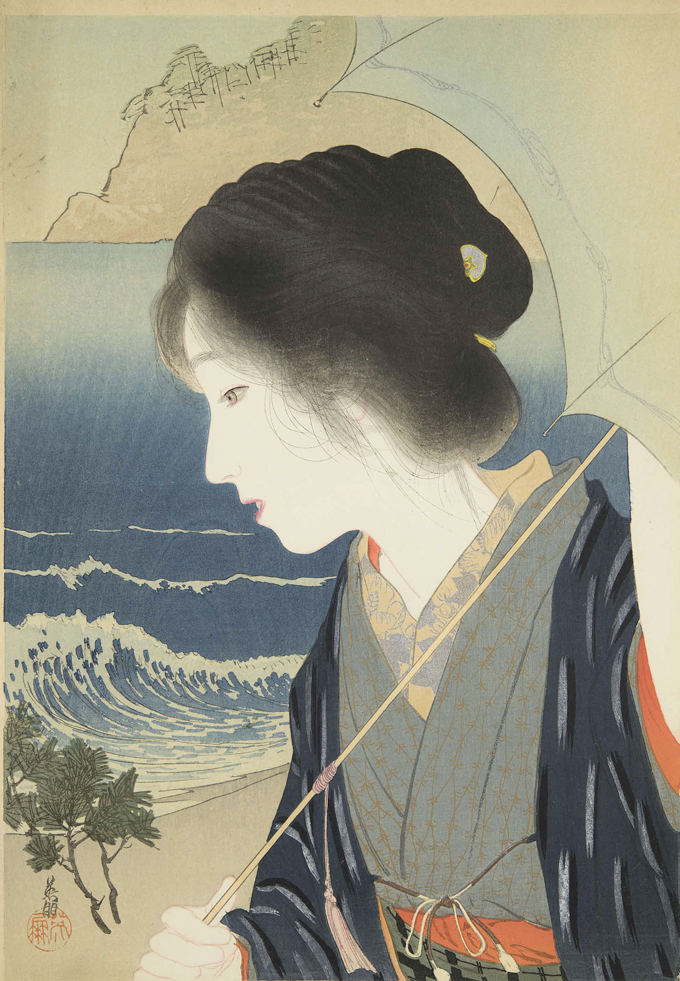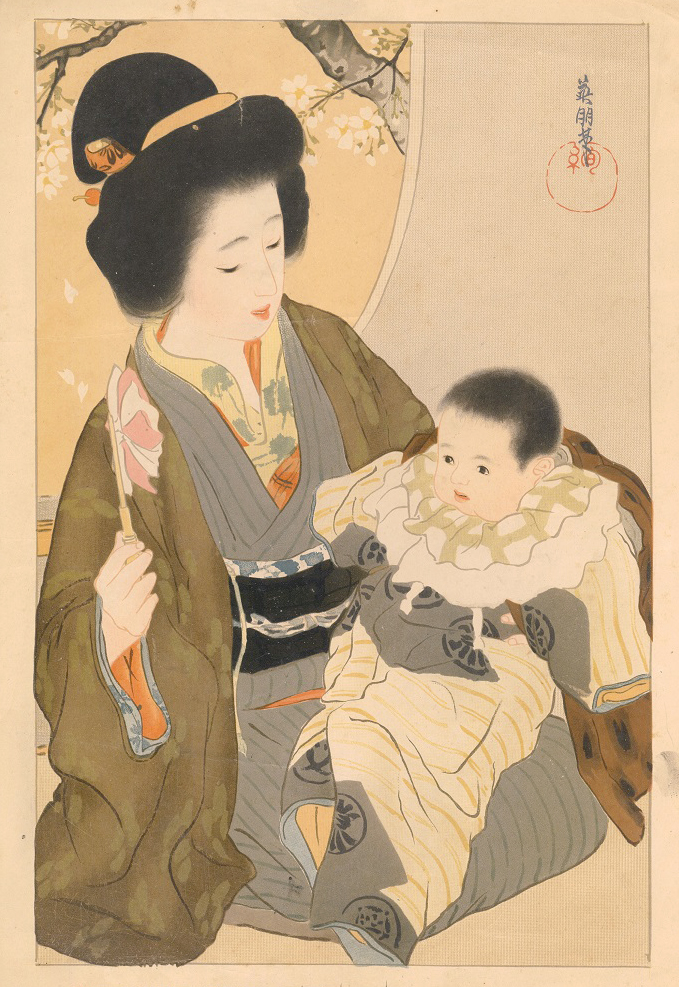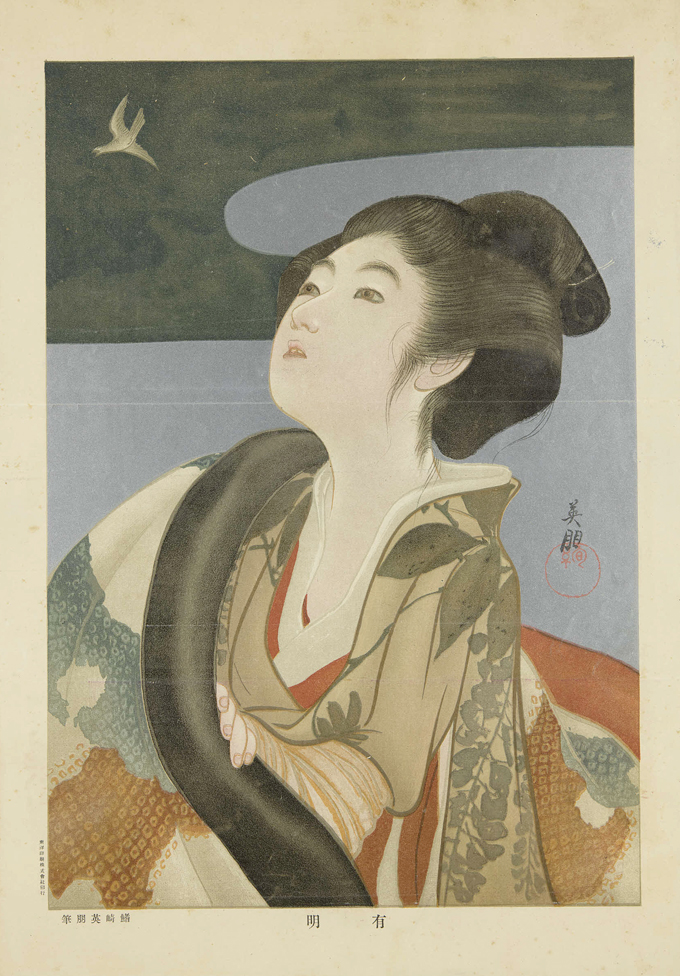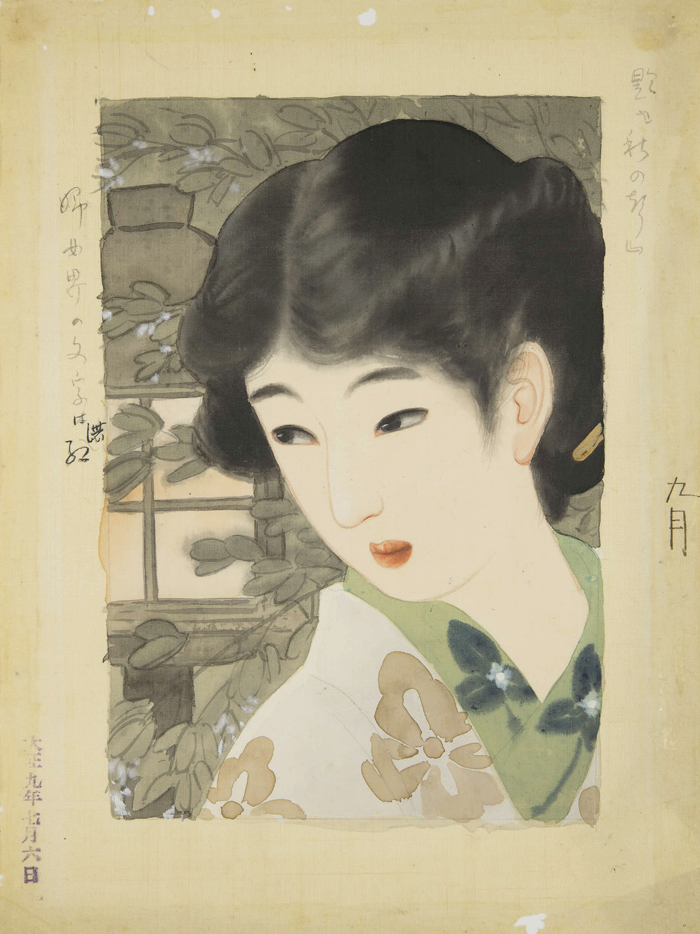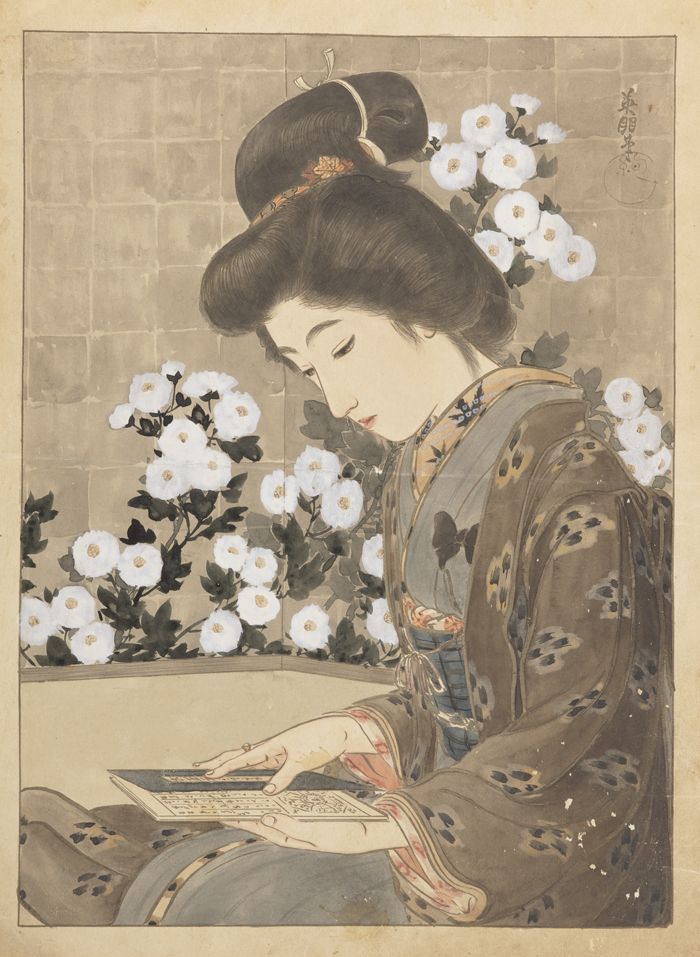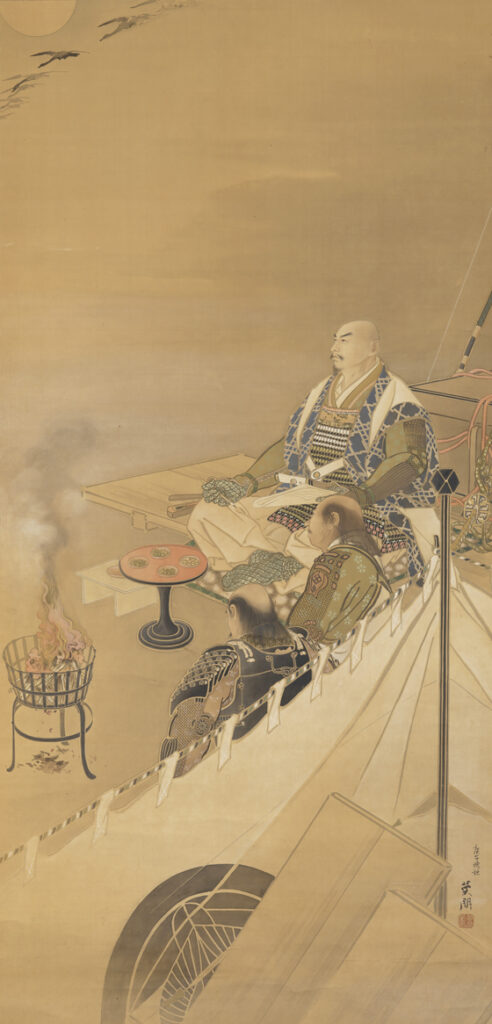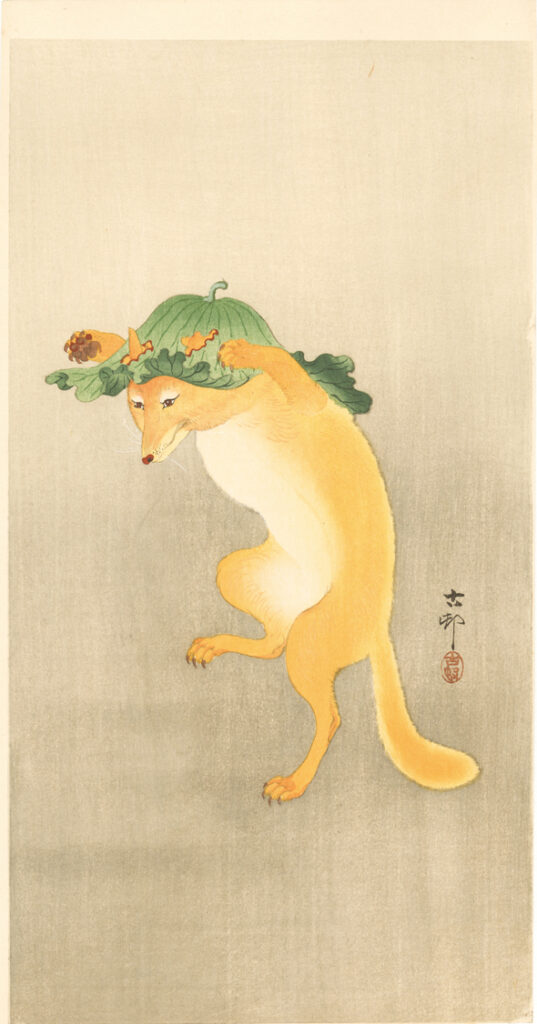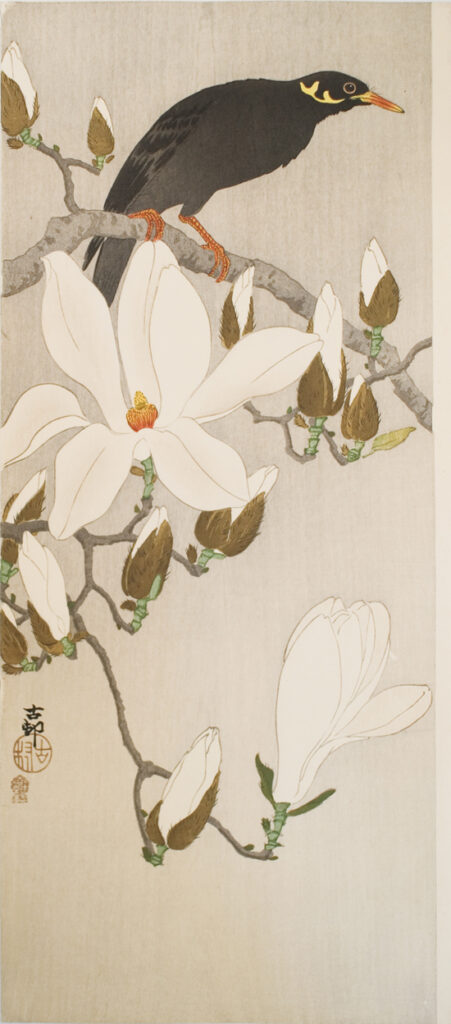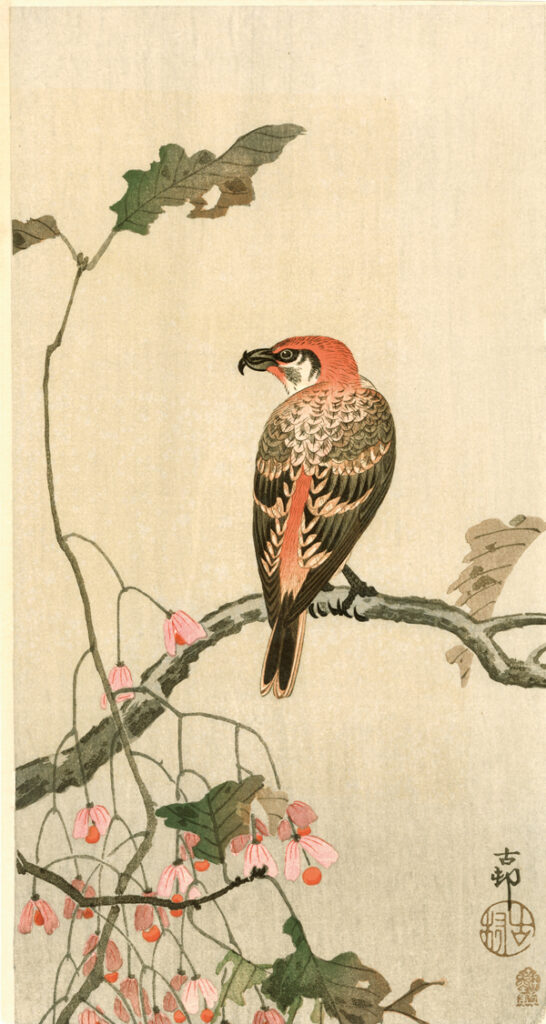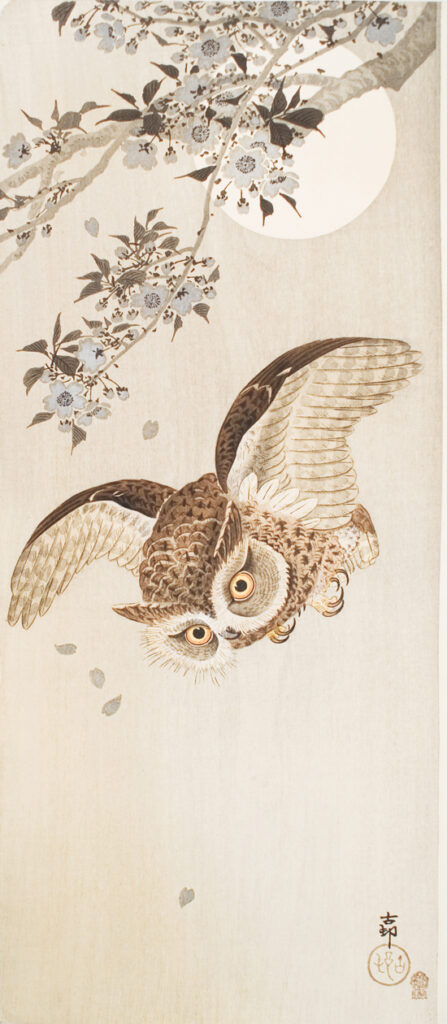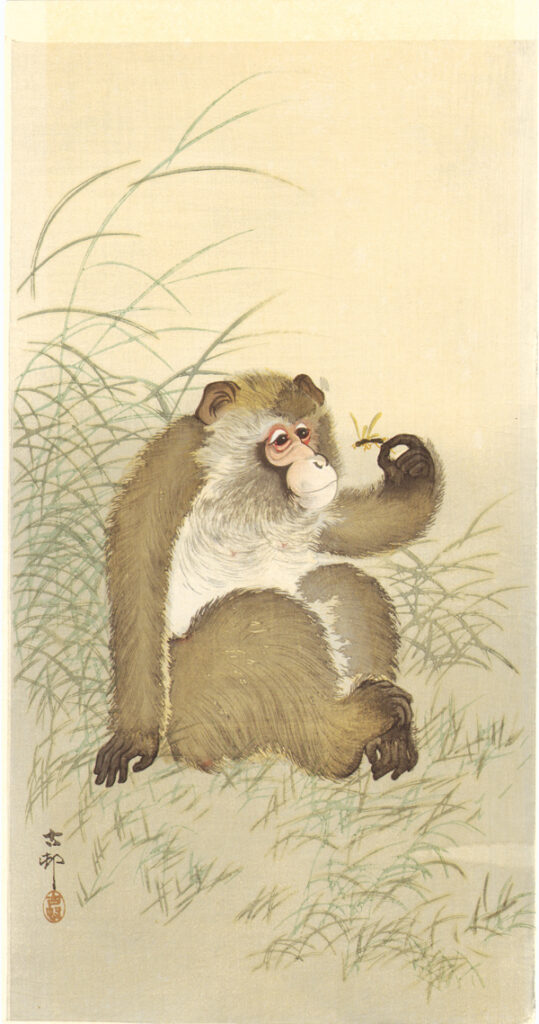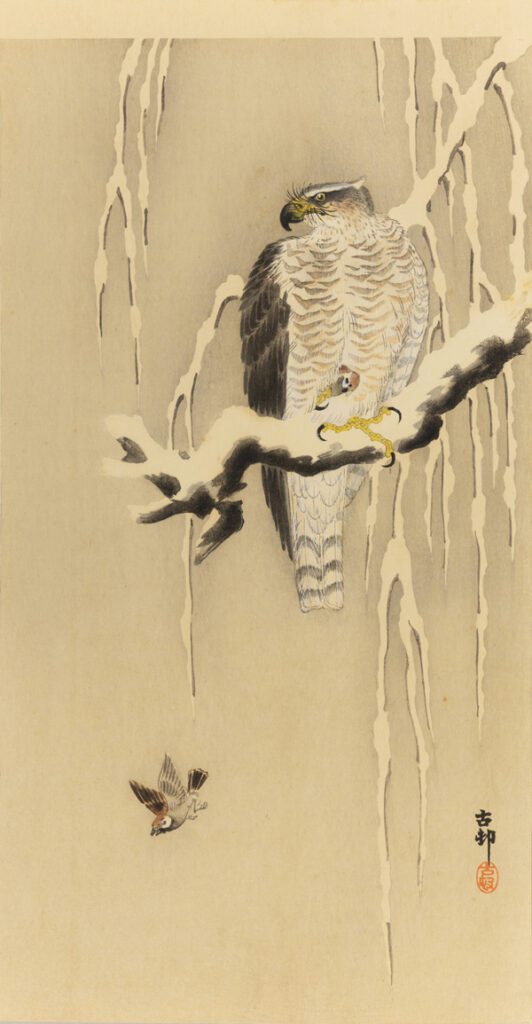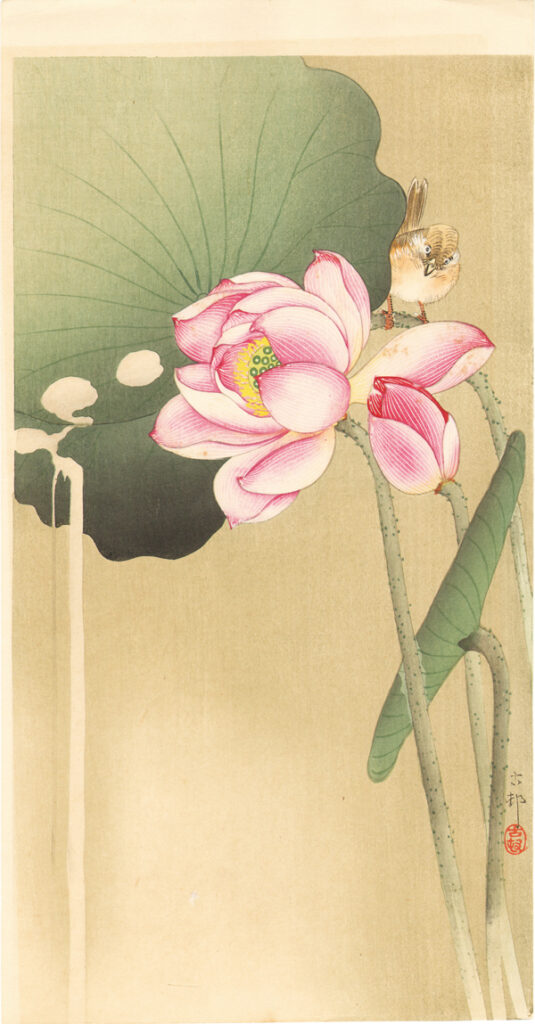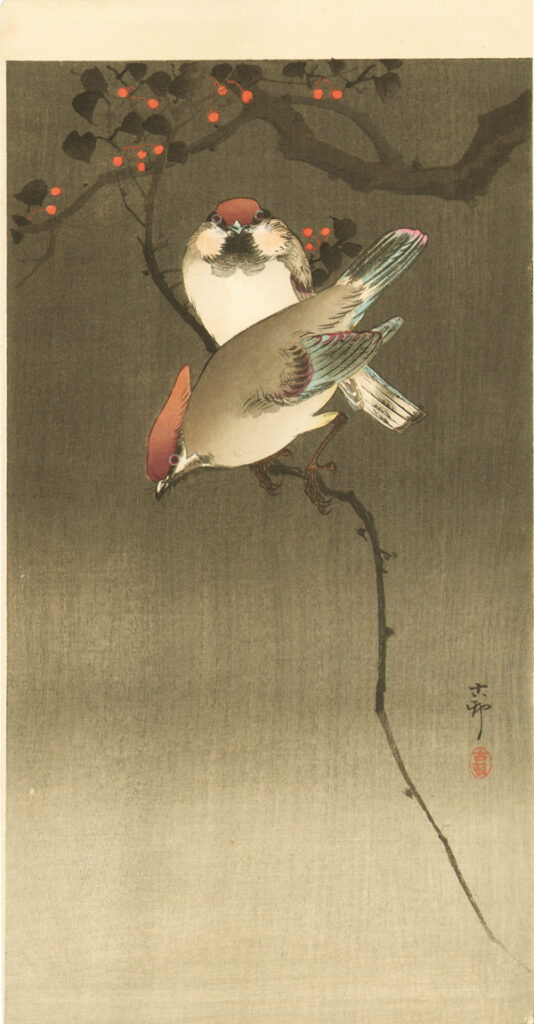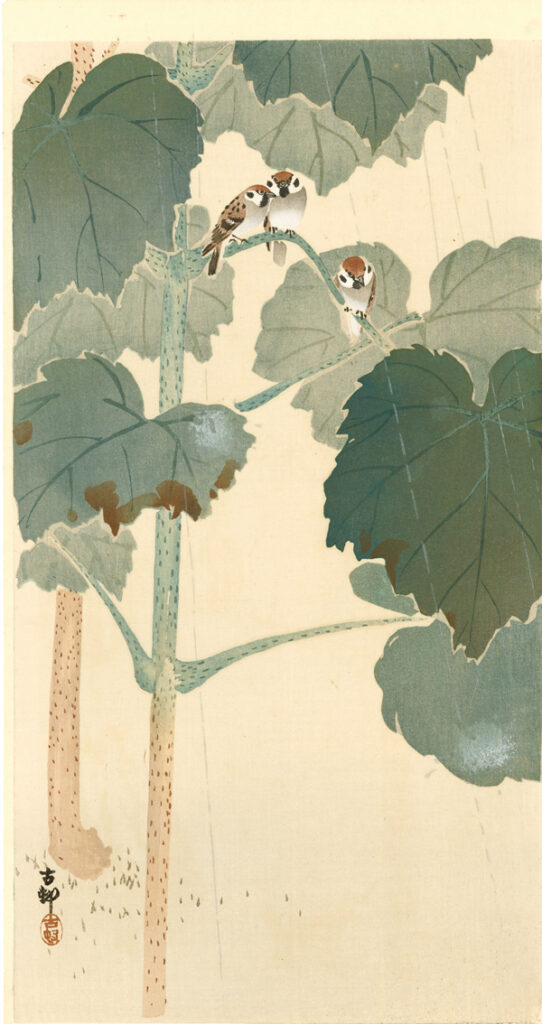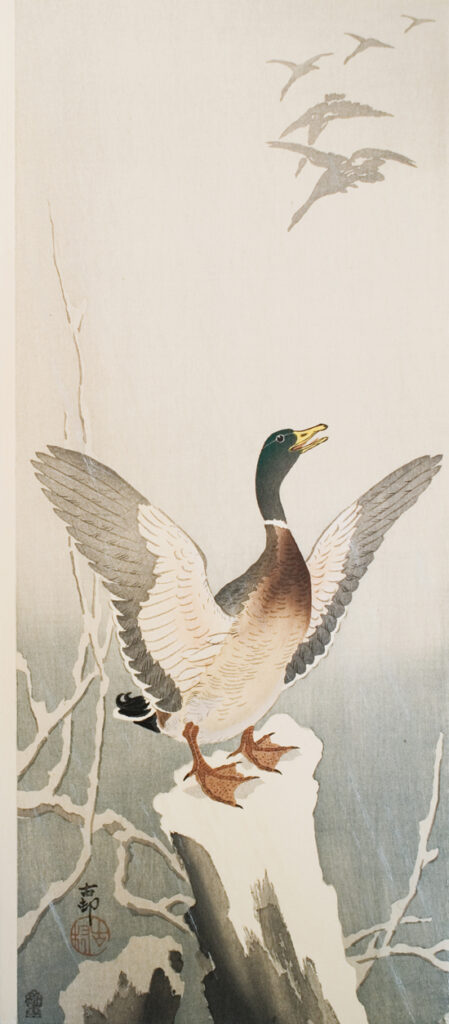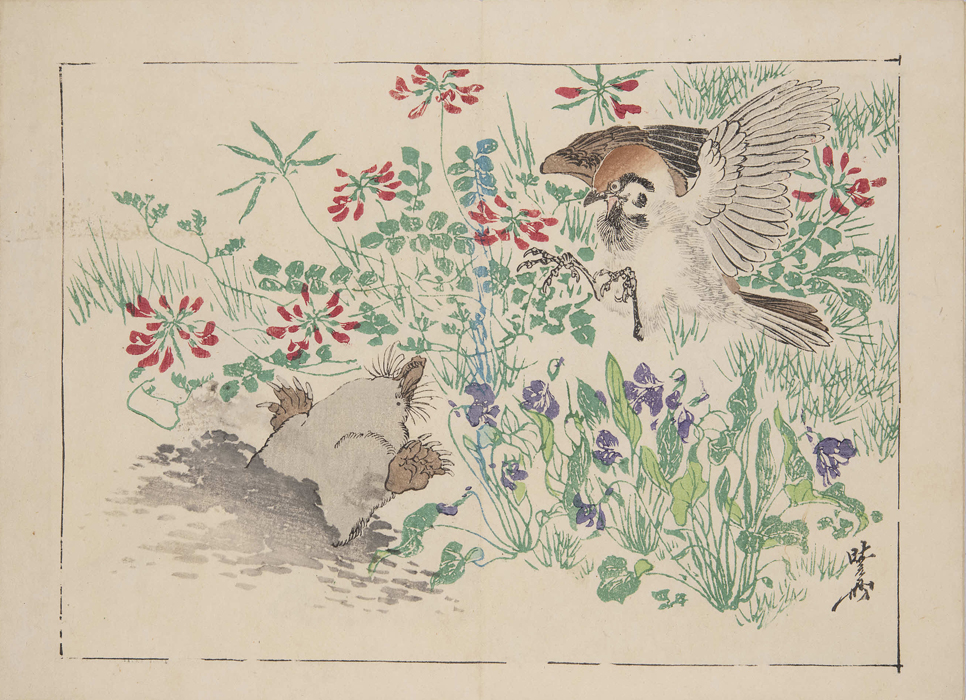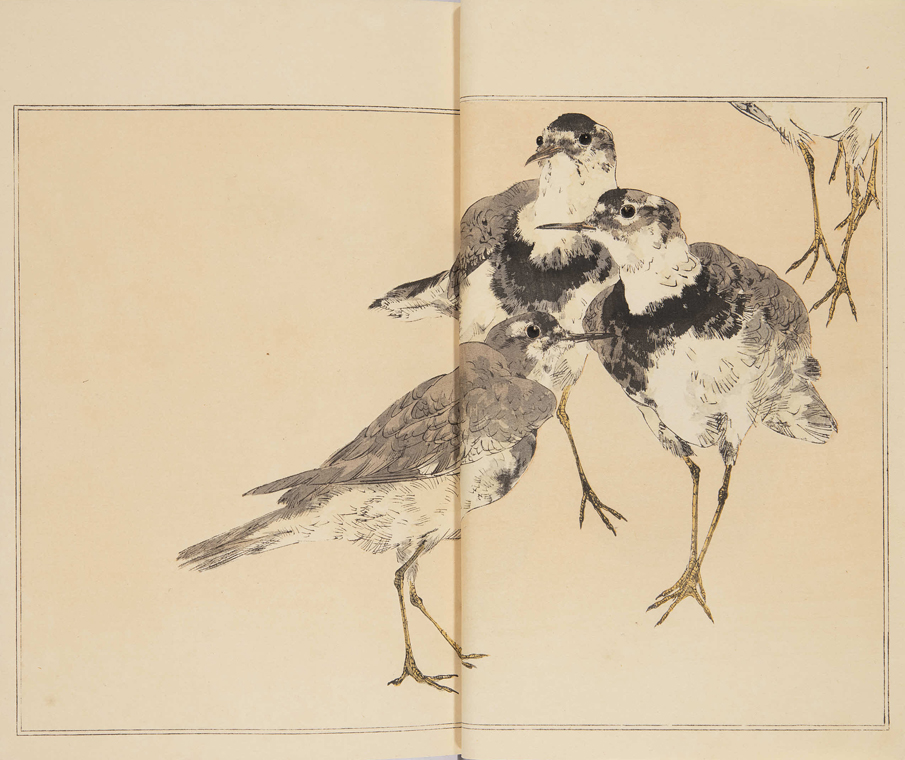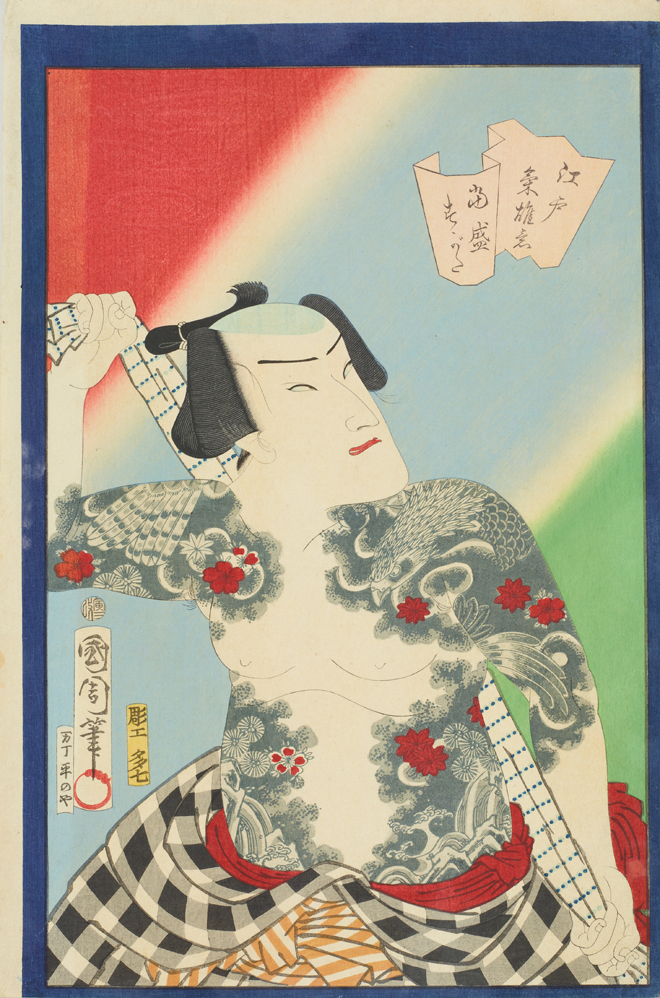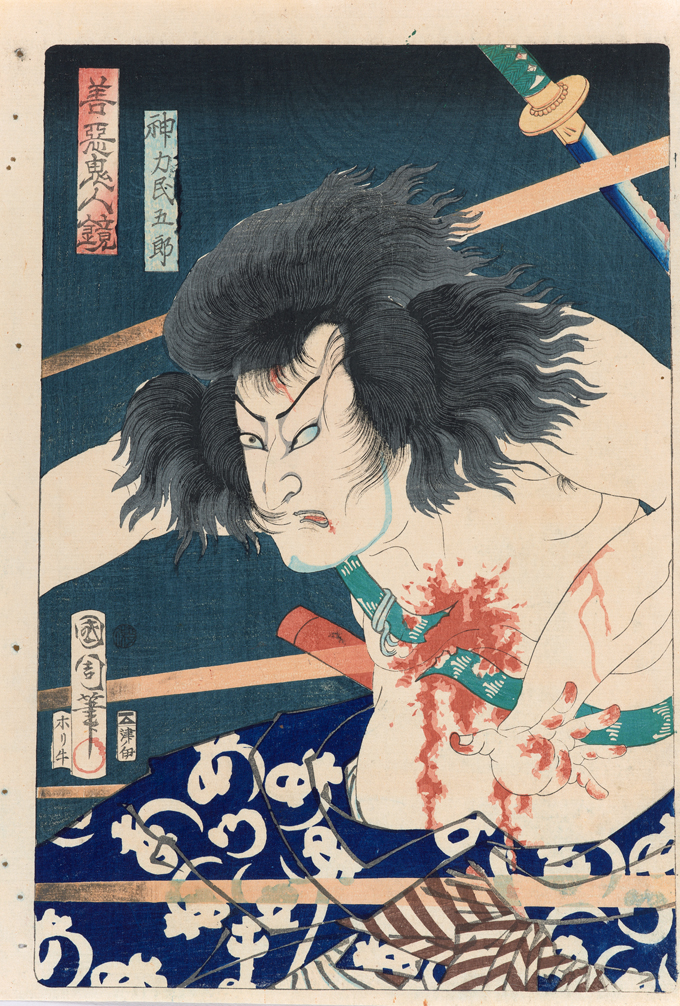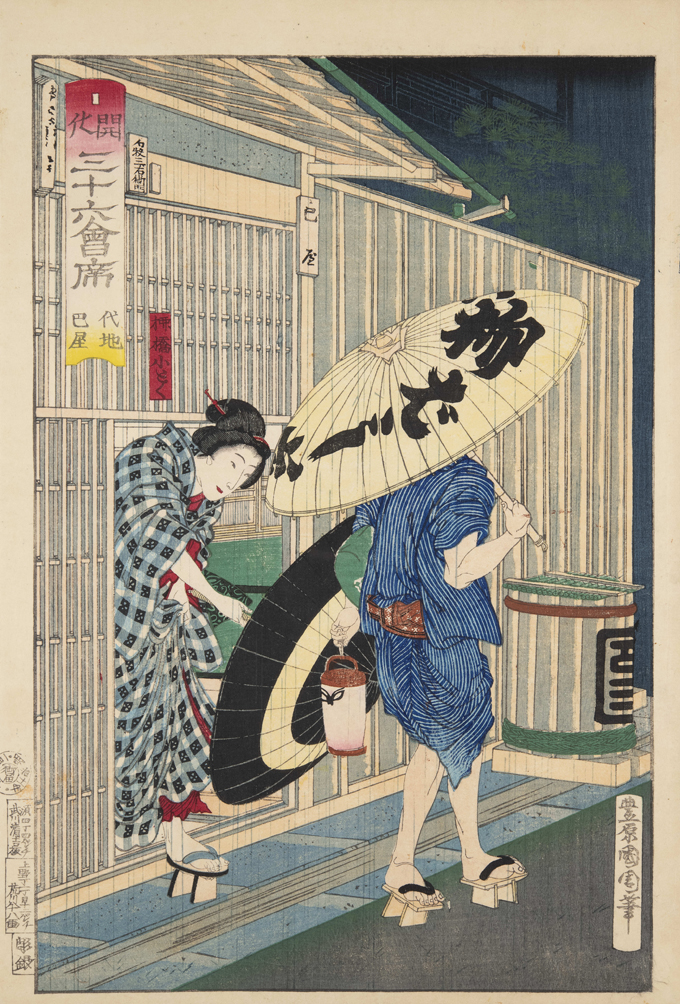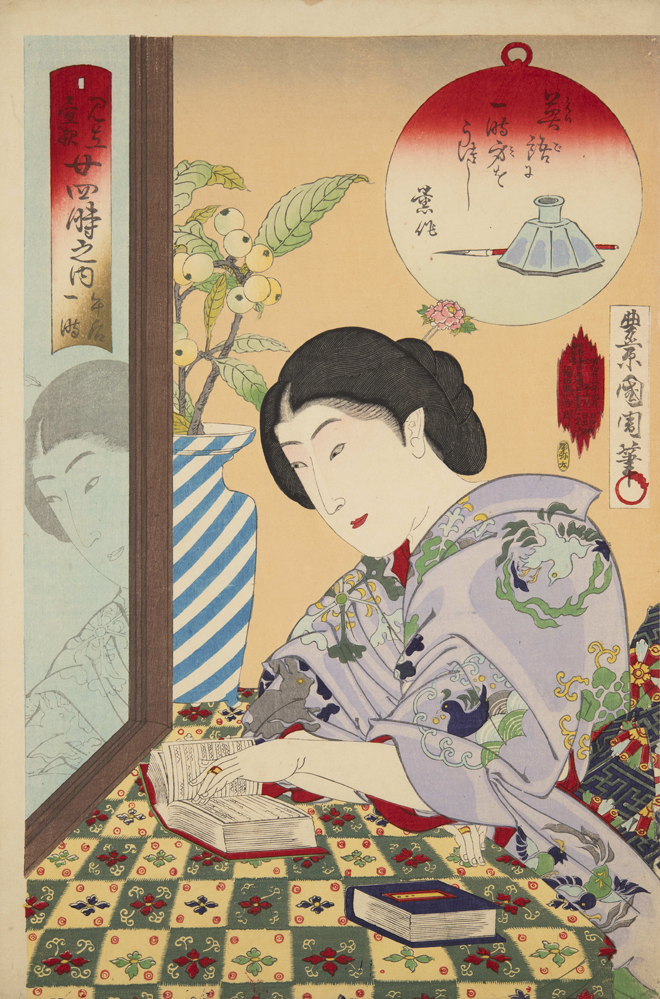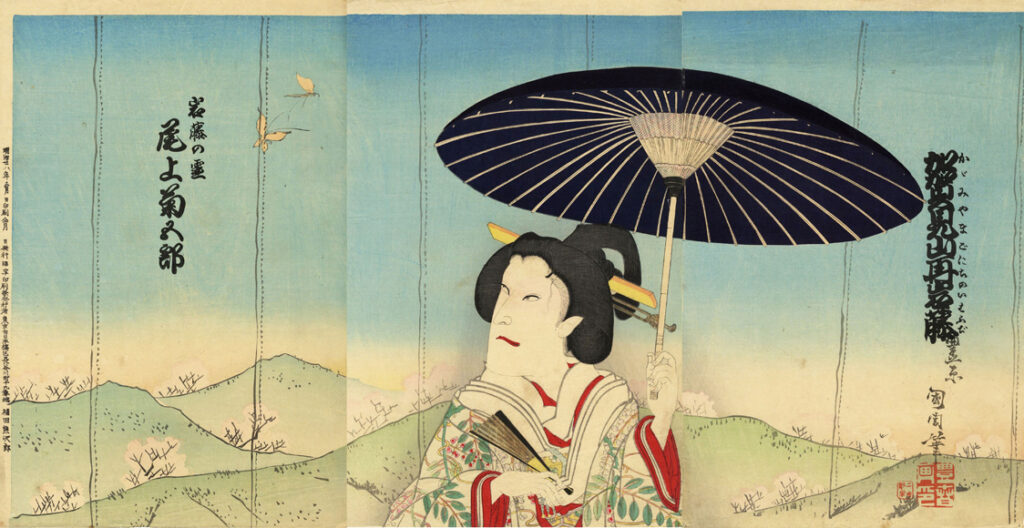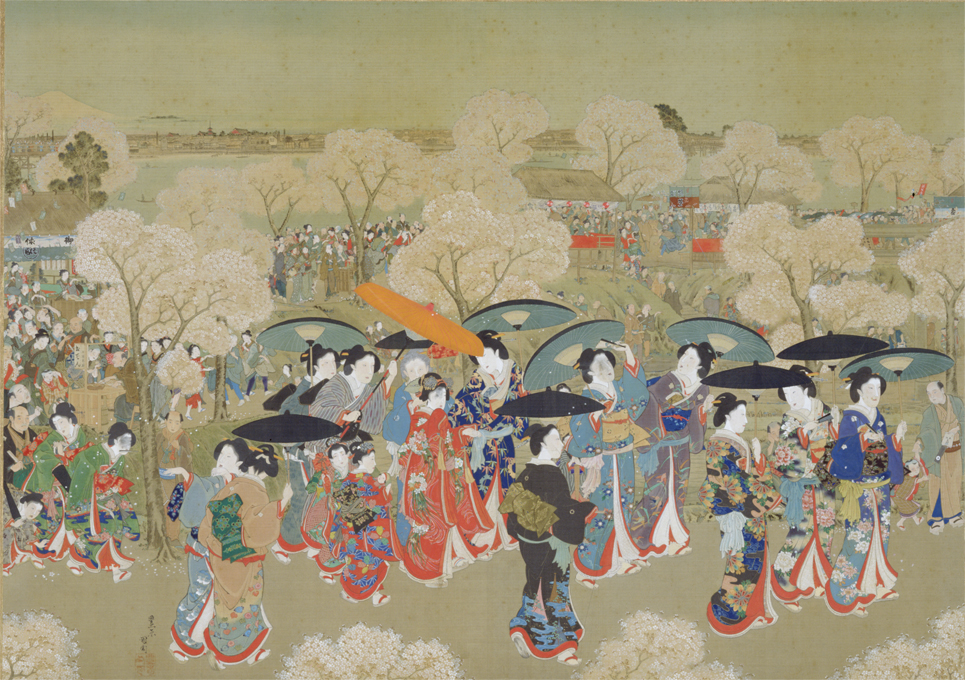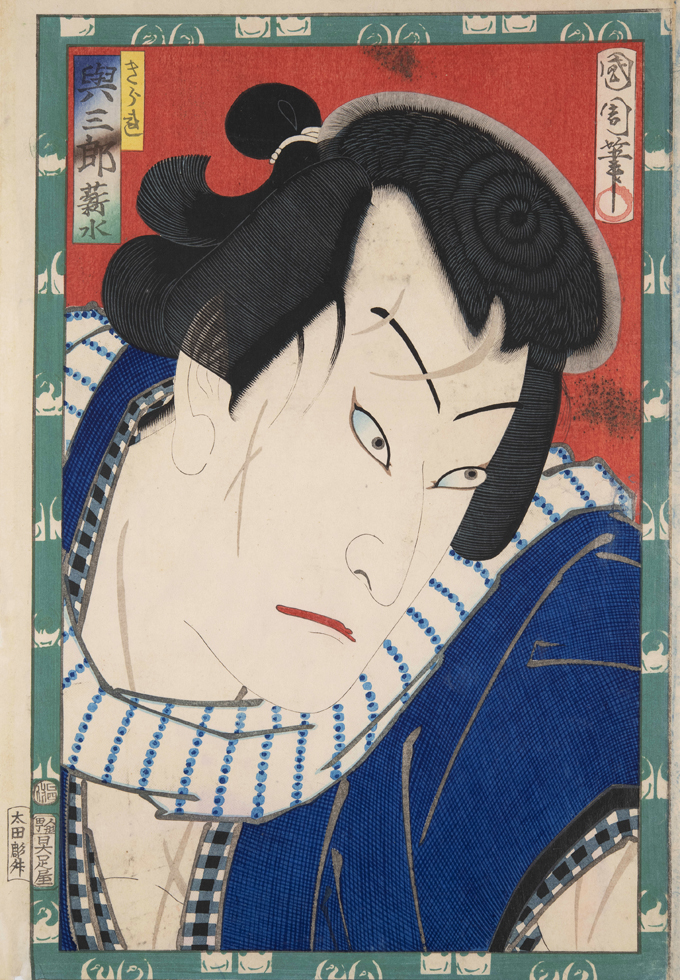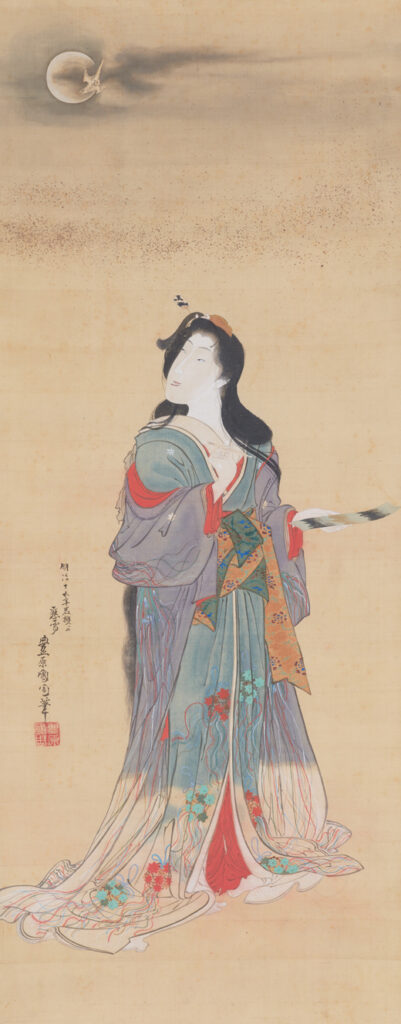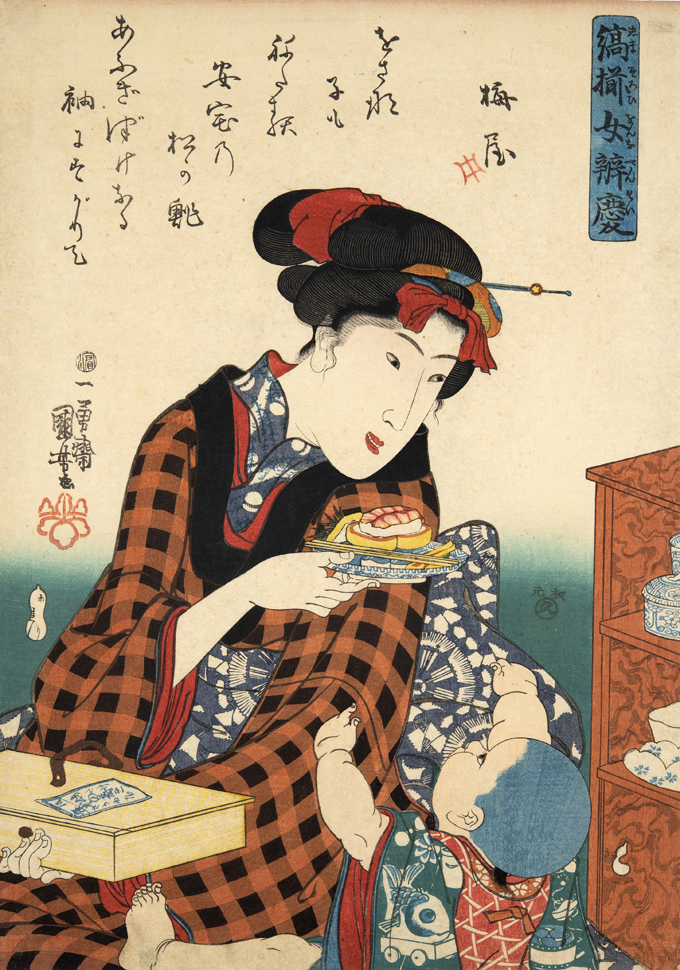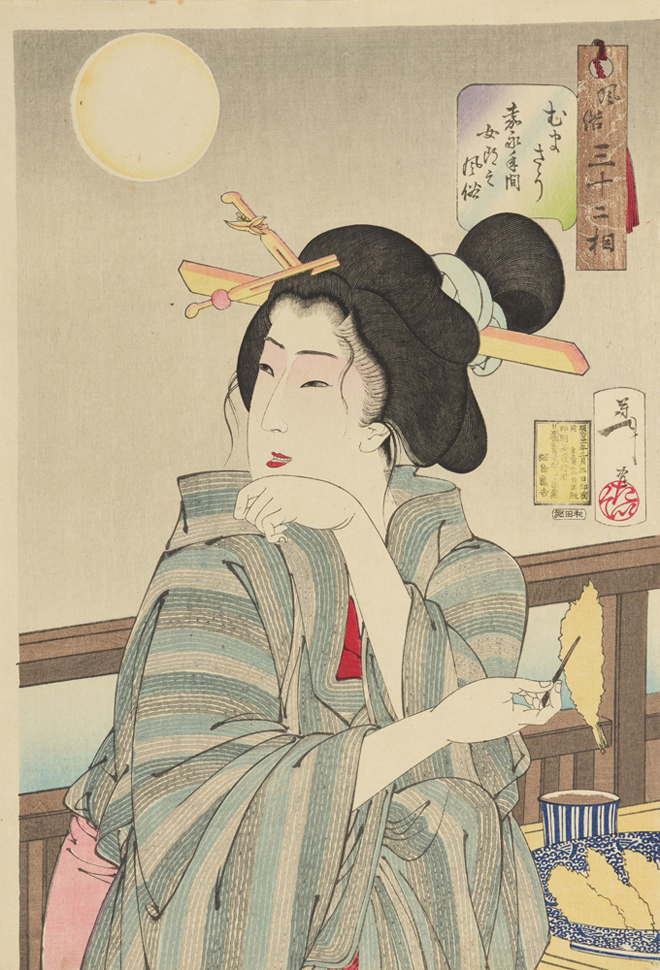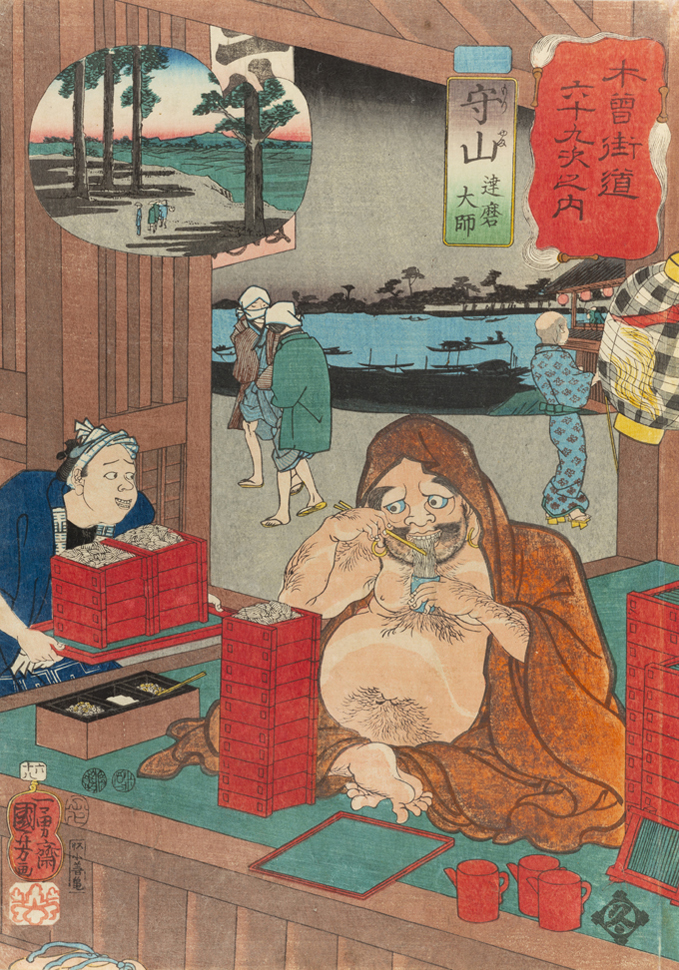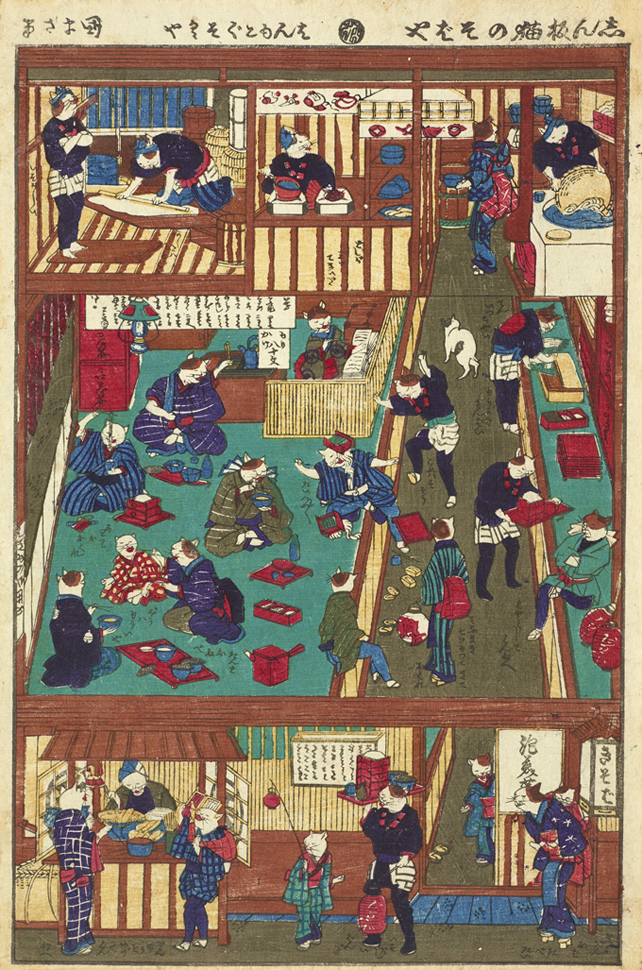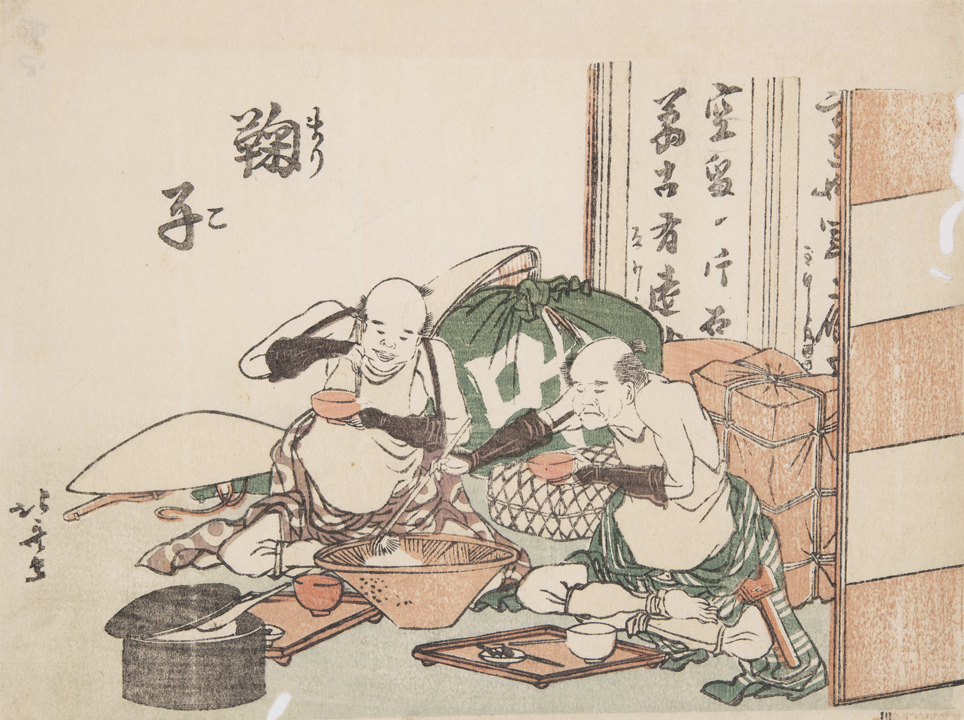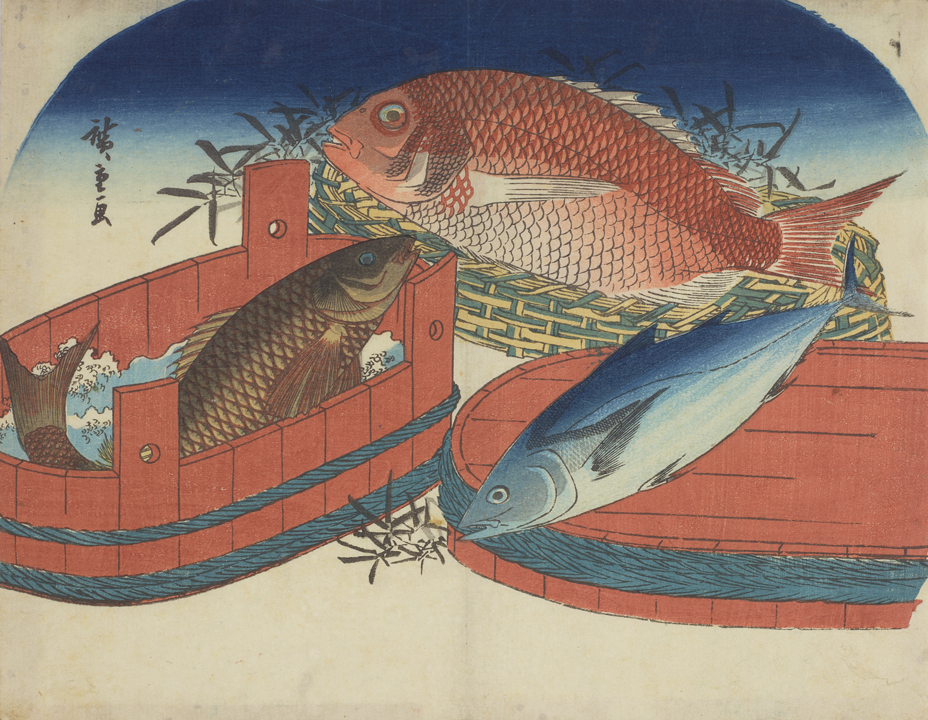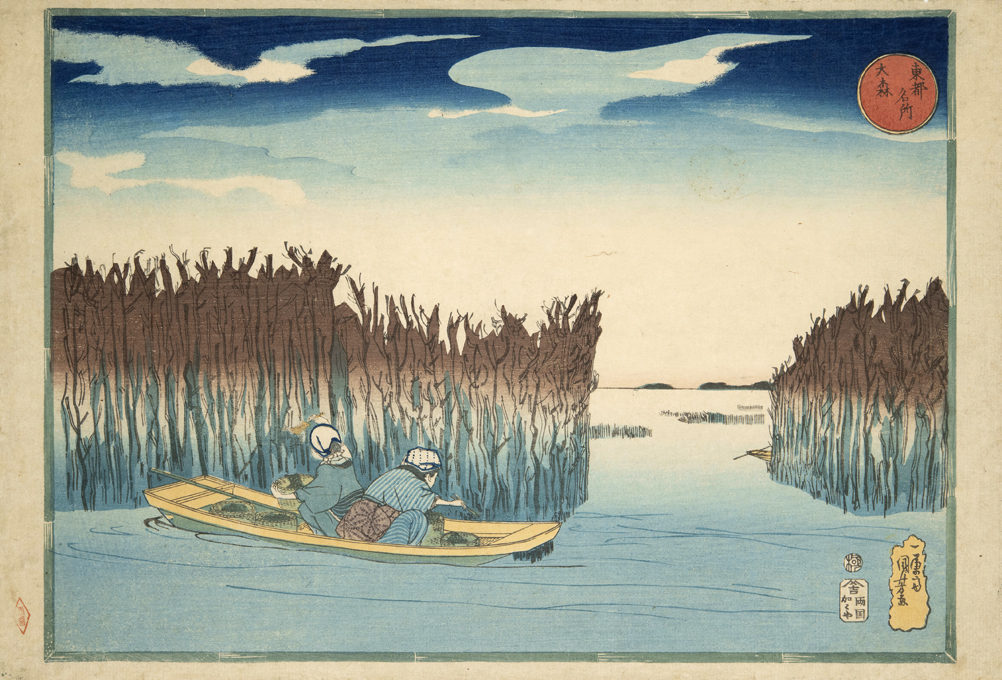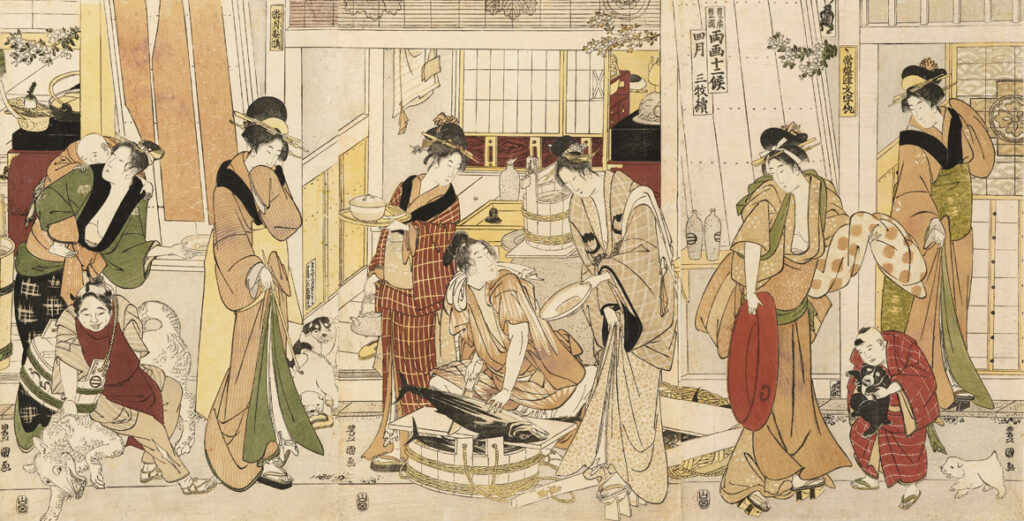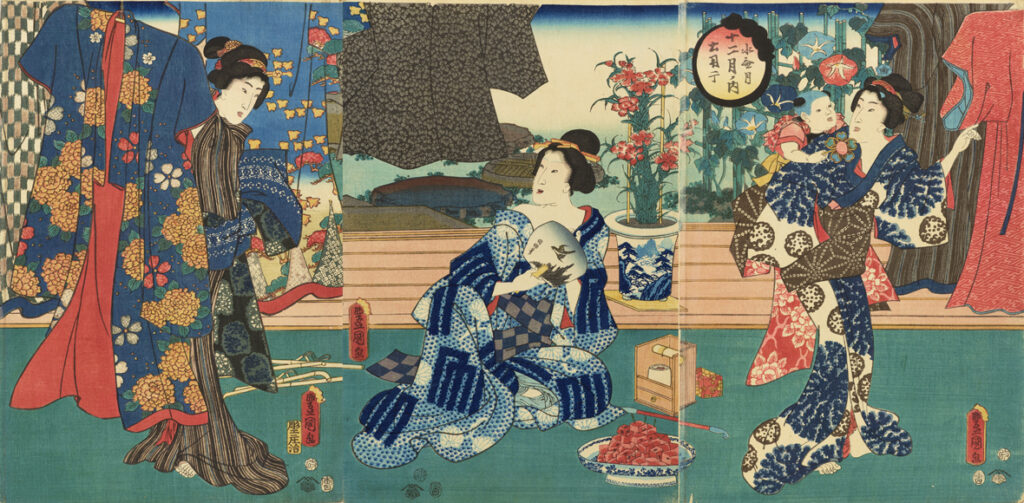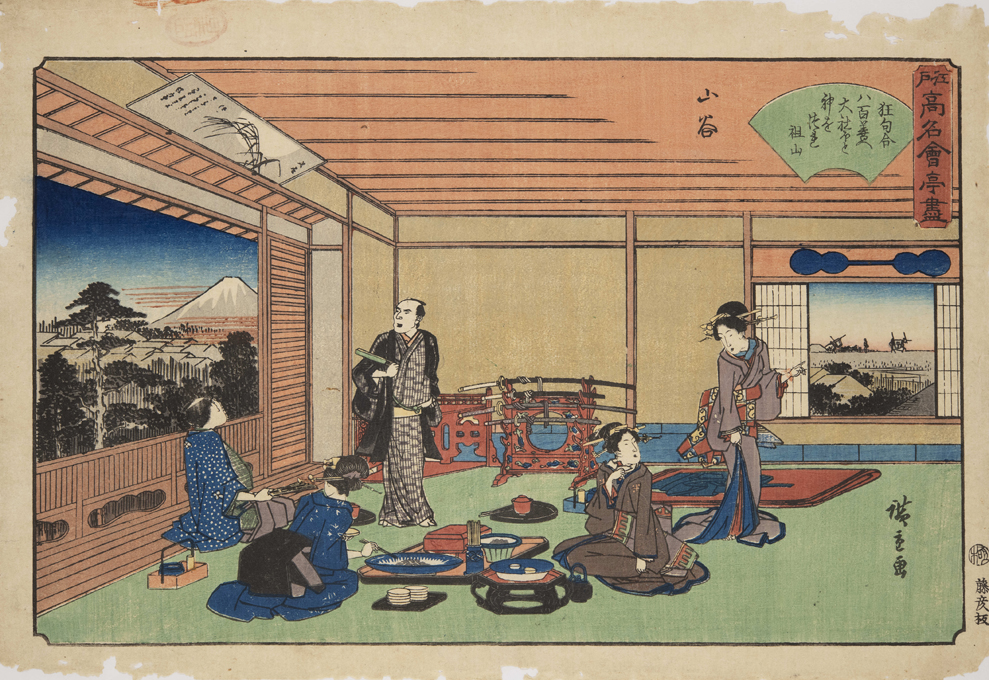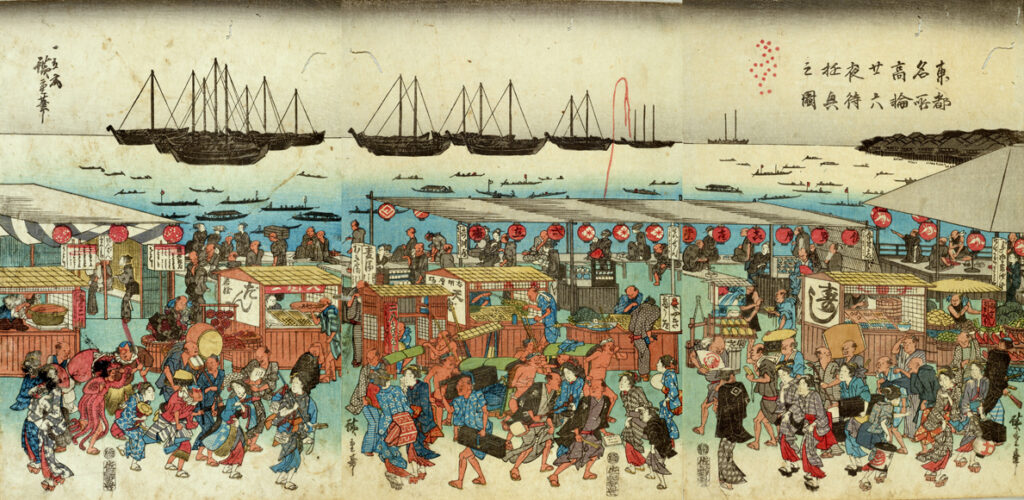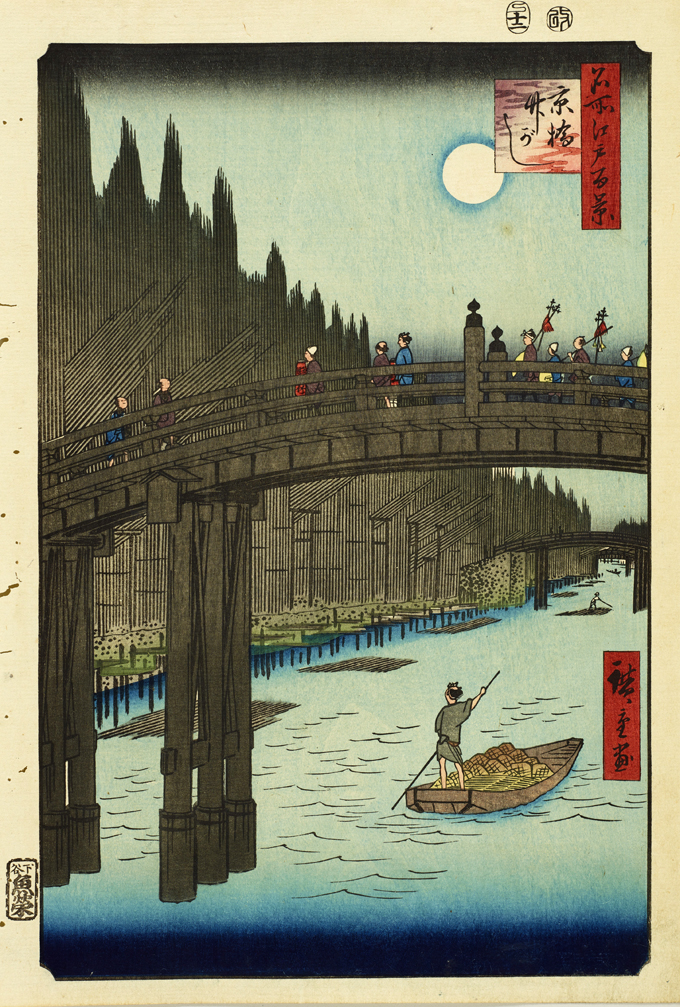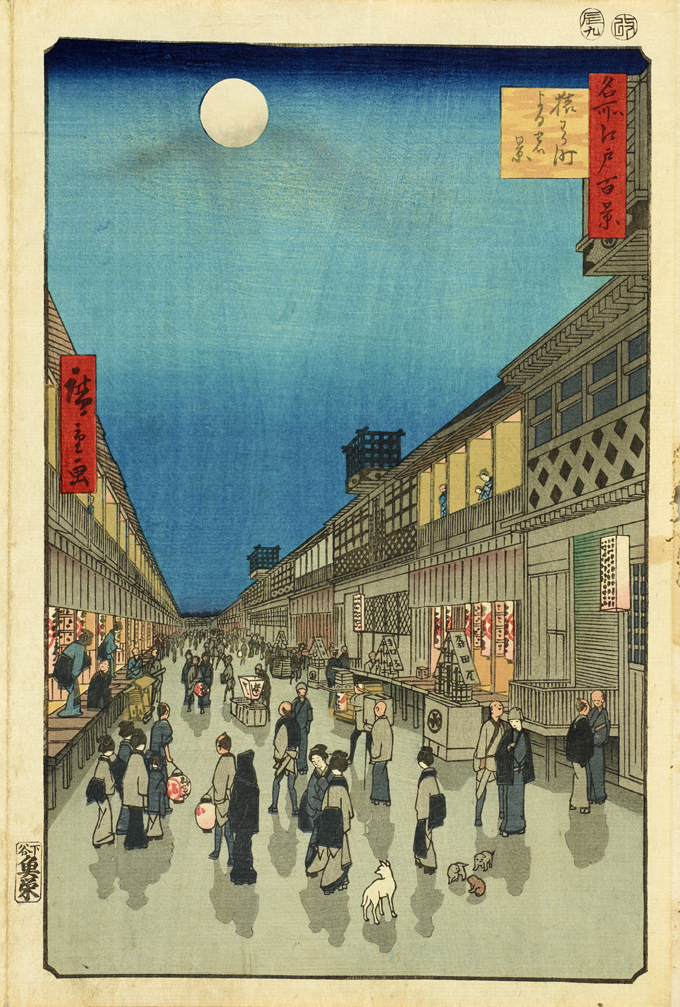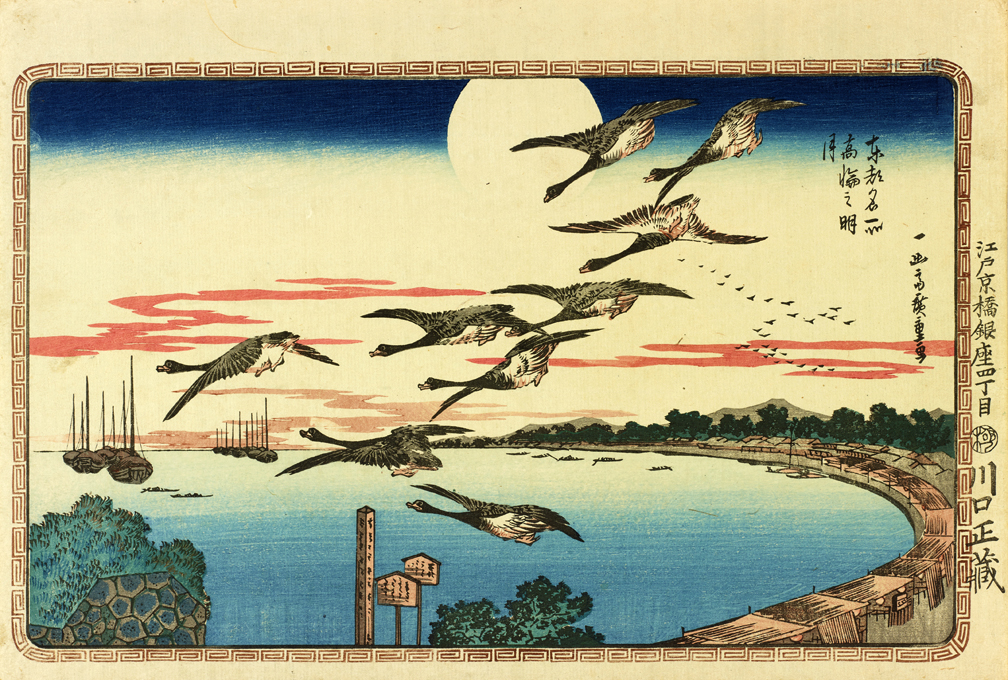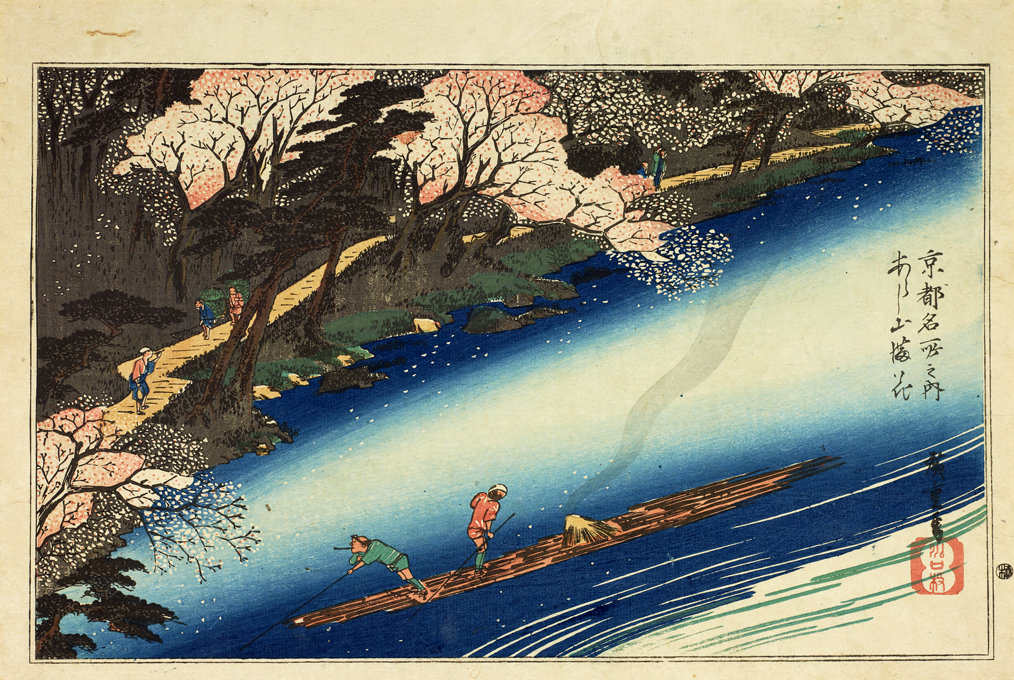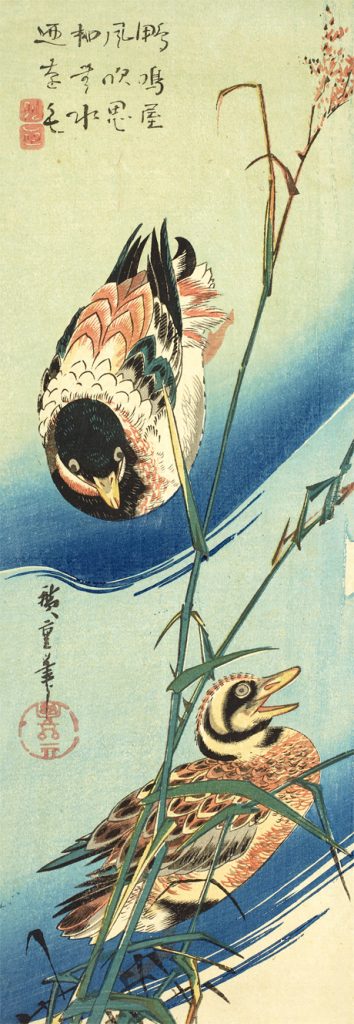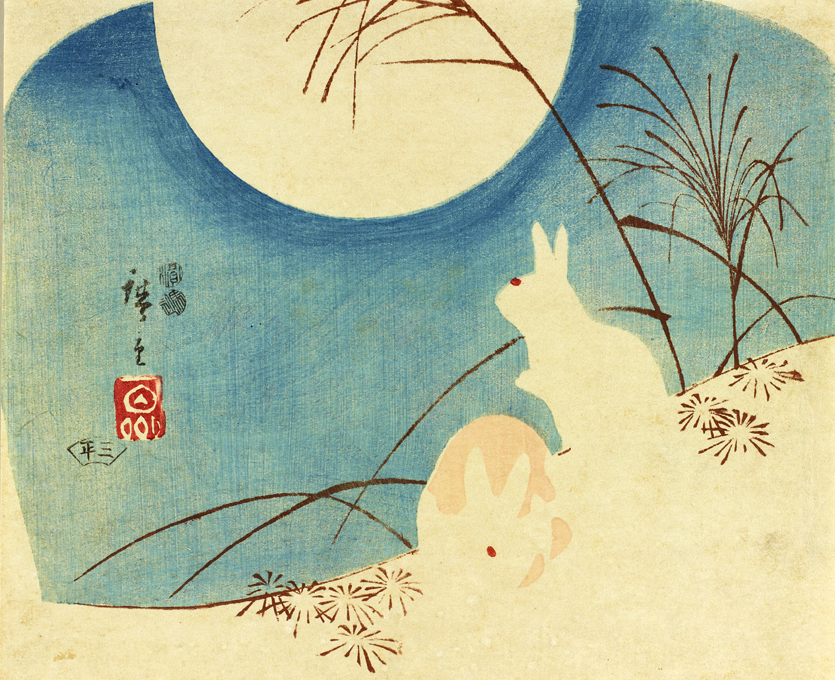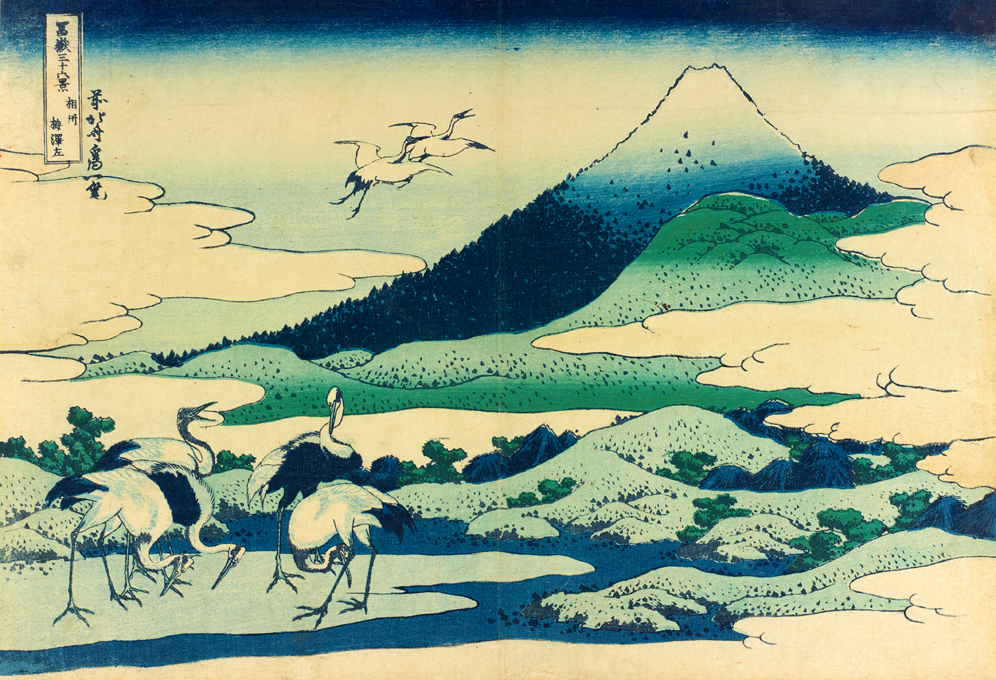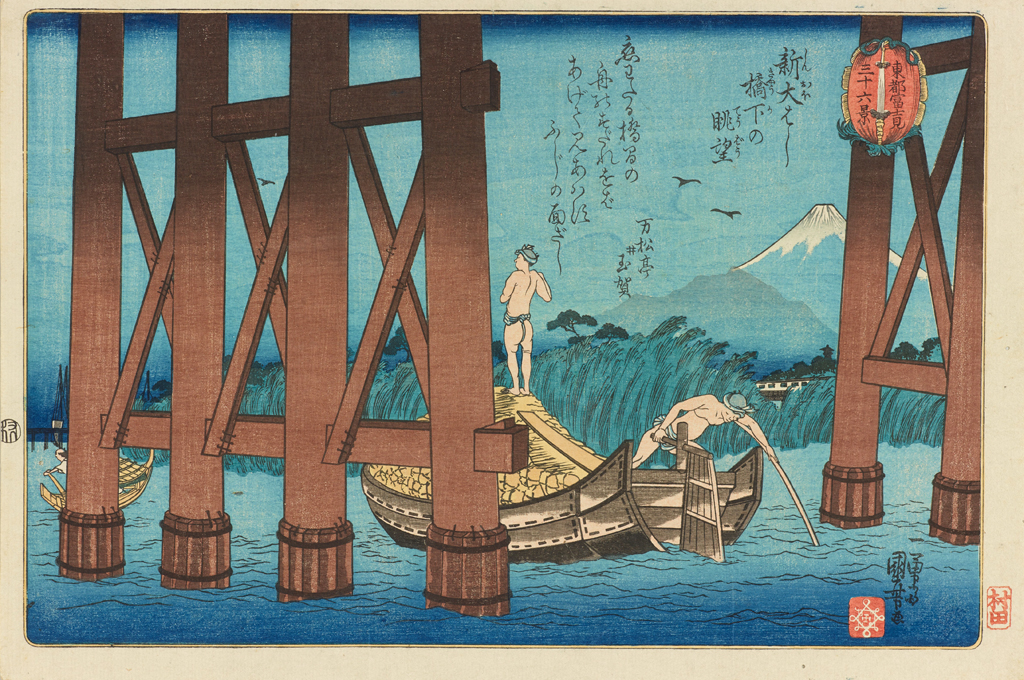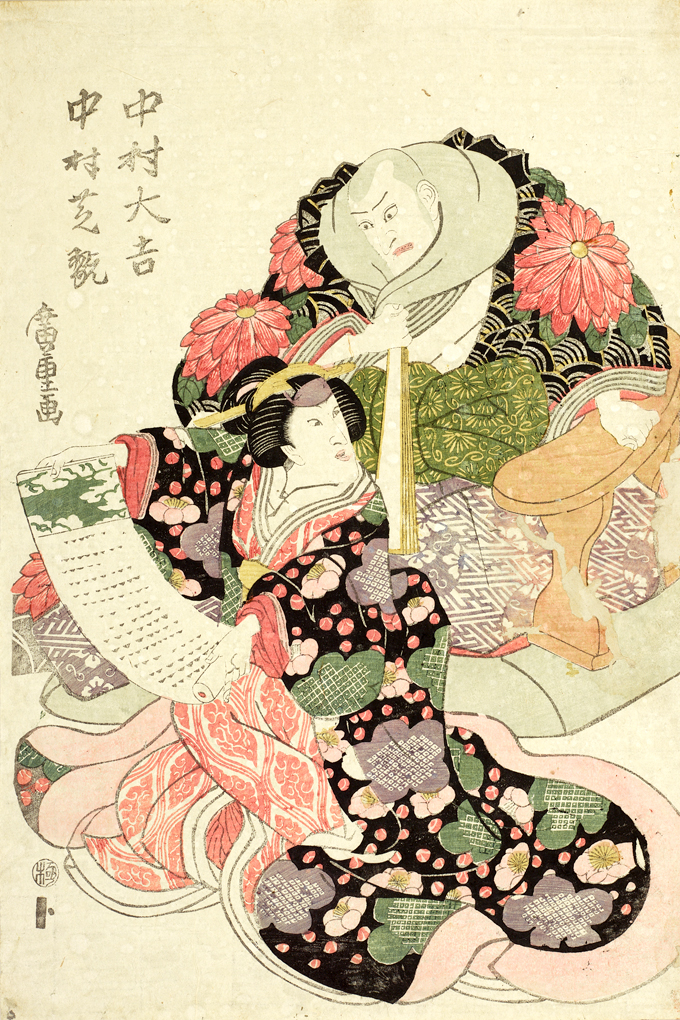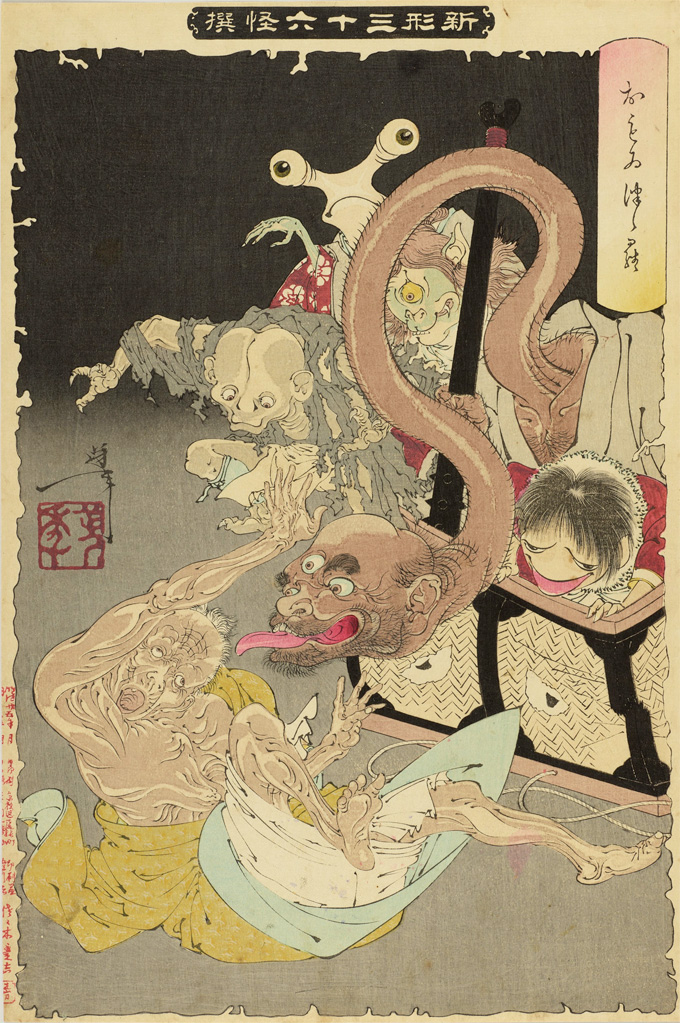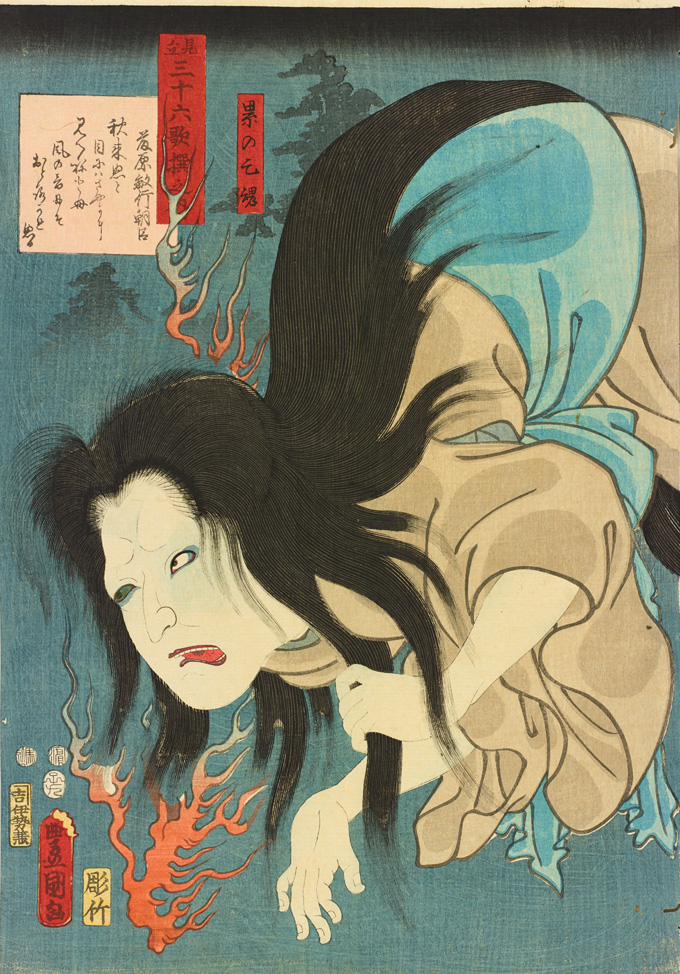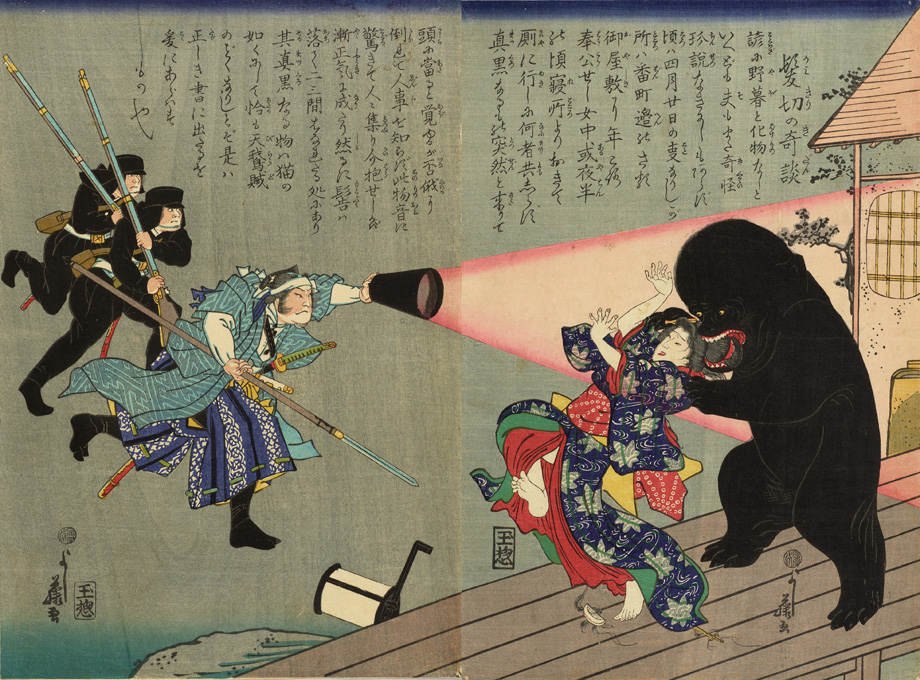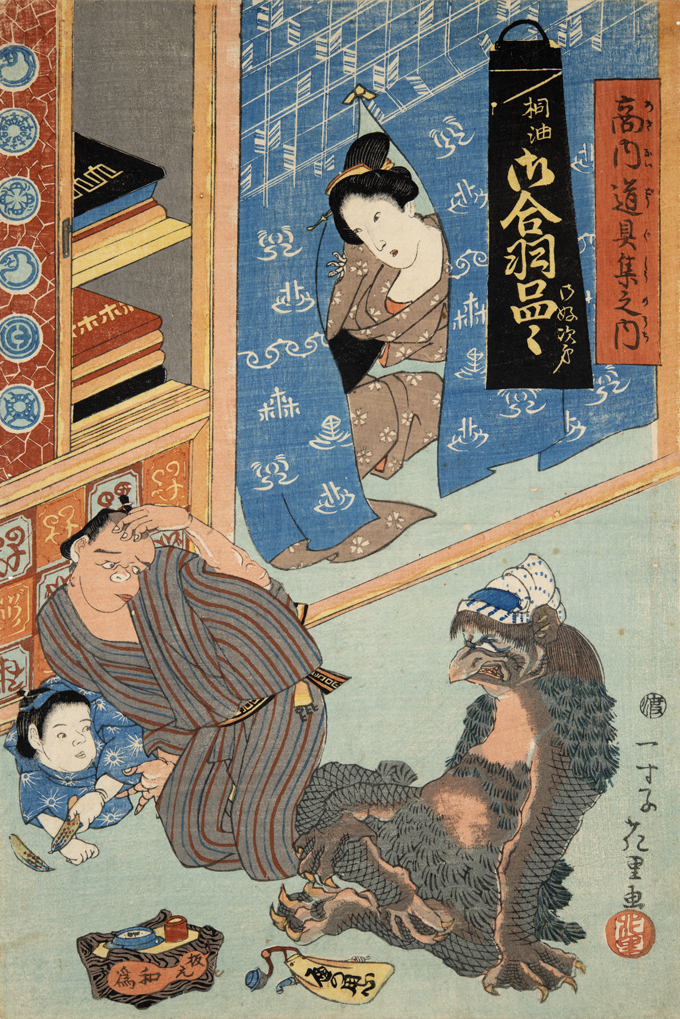Ukiyo-e Ojisan Festival
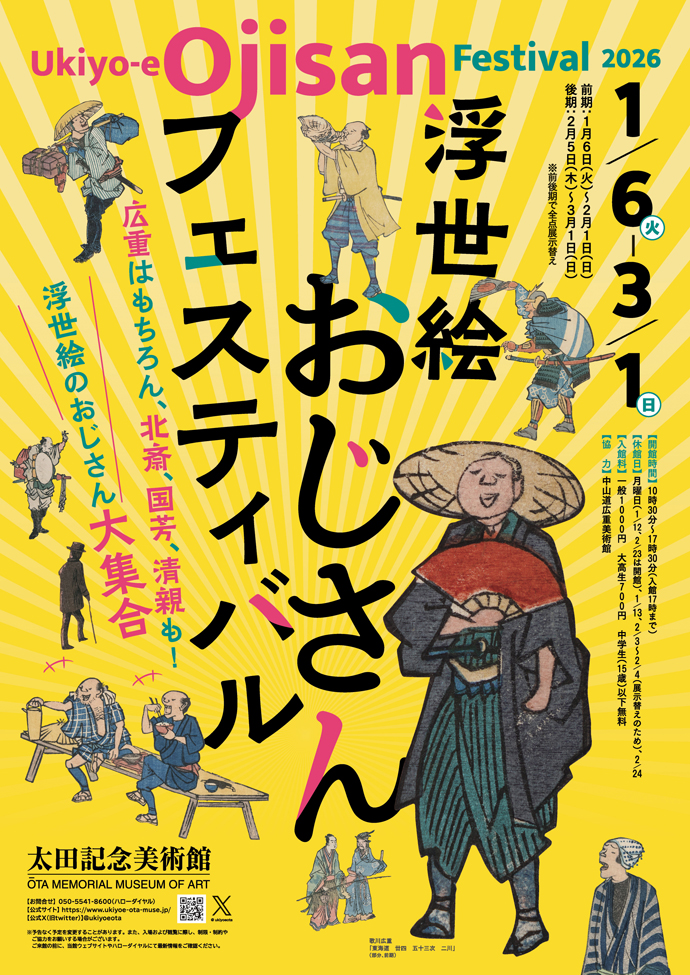
2026, January 6th-March 1st
1st Term January 6th-February 1st
2nd Term February 5th-March 1st
Will be closed on January 13, 19, 26, February 2-4 ,9, 16, 24.
Opening Hours : 10:30 a.m. – 5:30 p.m. (Last Admission: 5:00 p.m.)
Admission : Adult ¥1000 / University and High school students ¥700 / Junior High School Students and below(under 15 years old) FREE
Ukiyo-e “Ojisan Festival”: The main character in every work is the Ojisan!
Tucked away in the corner of many ukiyo-e landscape prints, you can often find figures full of character—”Ojisan” (middle-aged men). They are depicted joyfully traveling, diligently working, or savoring gourmet food. Far from being mere background figures, the more you look at them, the more you discover their unique personalities and charm.
This exhibition introduces the various of Ojisan depicted in ukiyo-e through more than 150 works, shown across the first and second terms. Featuring works by artists spanning different styles and eras, including Utagawa Hiroshige, this is truly an “Ojisan Festival.” Taking a closer look at the details of ukiyo-e through these Ojisan, you are sure to rediscover the works’ new charms and the unexpected individuality of the artist.
※This exhibition is a newly curated presentation based on the concept of the highly successful “Ukiyo-e Ojisan Festival” exhibition previously held at the Nakasendo Hiroshige Museum of Art.
Beyond Hiroshige! Discover numerous Ojisan created by Hokusai, Kuniyoshi, Kiyochika, and more.
In recent years, the fascinating figures often small and full of character, depicted in landscape prints, particularly those by Utagawa Hiroshige, have garnered attention. Exhibitions showcasing their appeal have been held in various locations across Japan.
The Ota Memorial Museum of Art presents an “Ojisan Exhibition” for the first time in about three years, following the successful “Hiroshige’s Ojisan Encyclopedia” exhibition in 2023. This time, in addition to the familiar Ojisan from Utagawa Hiroshige, the exhibition significantly expands the selection of works by a wider range of Ukiyo-e artists, including Katsushika Hokusai, Utagawa Kuniyoshi, and Kobayashi Kiyochika. This showcase presents a much deeper and richer “Ojisan World” to enjoy.
Rediscover the charm of Ukiyo-e by finding your “Oshi-Oji” (Favorite Middle-Aged Man)
When you deliberately focus on the Ojisan in well-known Ukiyo-e masterpieces, the appeal of details you might have previously overlooked emerges, such as the differentiation in the characters’ expressions, gestures, and clothing. The Ojisan subtly placed in the works were often subjects where the artist could relax and let the brush wield freely. Through them, the artist’s genuine individuality, keen observation skills, and reliable descriptive power become apparent. We invite you to find your own “Oshi-Oji” and rediscover the profound charm and depth of ukiyo-e.
Admission
| Adult | 1000 yen |
| University and High school students | 700 yen |
| Junior High School Students and below (under 15 years old) | Free |
Calendar
■CLOSED
休館日
1-5,13,19,26
2026 / 01
1-5,13,19,26
| SUN | MON | TUE | WED | THU | FRI | SAT |
|---|
休館日
2-4,9,16,24
2026 / 02
2-4,9,16,24
| SUN | MON | TUE | WED | THU | FRI | SAT |
|---|
休館日
2-5,9,16,23,30-31
2026 / 03
2-5,9,16,23,30-31
| SUN | MON | TUE | WED | THU | FRI | SAT |
|---|
Utagawa Hirokage -Comic Views of Edo
The unknown artist, Utagawa Hirokage
The ukiyo-e artist, Utagawa Hirokage, is rarely recognized, even among experts in the field. However, his work has recently garnered significant attention on the social media accounts of the Ota Memorial Museum of Art.
His pieces, like a man falling dramatically on a snowy road or a “yuki daruma” (snowman) literally shaped like a daruma doll, have a comical charm that makes them instantly shareable and popular, regardless of the artist’s fame.
“Comical Views of Famous Places in Edo,” a series full of comical happenings.
He was a pupil of Utagawa Hiroshige, who is also famous for his series The Fifty-three Stations of the Tōkaidō. However, his active period was short and his identity remains largely unknown. His masterpiece is “Comical Views of Famous Places in Edo,” a series of 50 prints. It is a series that can be said to be a “comedy ukiyo-e” set at the end of Edo period (around 1853-1868). It is full of funny events from the daily lives of Edo citizens, such as a stray dog stealing their fish, a person getting a bowl of soba dumped on their head, or being tricked by a tanuki or foxes. These works are easy even for ukiyo-e beginners to enjoy.
All 50 works are exhibited at once, and the work of HiroshigeⅡare also introduced.
The Ota Memorial Museum of Art is holding a special exhibition, showcasing all 50 pieces from the series “Comical Views of Famous Places in Edo” for the first time in eight years. Explore Hirokage’s hilarious world, from the works that went viral on social media to rare pieces you have never seen before. To provide an even richer experience, we also exhibit 20 works by another of Hiroshige’s pupils, Utagawa Hiroshige II. This exhibition will be a precious opportunity to experience the diverse world of the Hiroshige school.
Admission
| Adult | 1000 yen |
| University and High school students | 700 yen |
| Junior High School Students and below (under 15 years old) | Free |
Calendar
■CLOSED
休館日
4-13,17,25
2025 / 11
4-13,17,25
| SUN | MON | TUE | WED | THU | FRI | SAT |
|---|
休館日
1,8,15-31
2025 / 12
1,8,15-31
| SUN | MON | TUE | WED | THU | FRI | SAT |
|---|
Tsutaya Jūzaburō and the Chronicles of Publishers

2025, August 30th-November 3rd
1st Term August 30th-September 28th
2nd Term Octber 3rd-Nobember 3rd
Will be closed on September 1, 8, 16, 22, 29, 30, Octber 1, 2, 6, 14, 20, 27
Opening Hours : 10:30 a.m. – 5:30 p.m. (Last Admission: 5:00 p.m.)
Admission : Adult ¥1200 / University and High school students ¥800 / Junior High School Students and below(under 15 years old) FREE
・LIST
During the Edo period (1603–1868), Hanmoto (publishers) oversaw ukiyo-e production by managing ukiyo-e artists and craftsmen, and directed the planning, creation, and sales of the prints. Among them, Tsutaya Jūzaburō(Tsutajū) played a major role in the history of ukiyo-e, such as producing Kitagawa Utamaro and Tōshūsai Sharaku with outstanding talent, garnering a golden age for ukiyo-e.
Publishing culture flourished during the Edo period; not only Tsutaya Jūzaburō, several other publishers played active roles. Therefore, this exhibition will feature twelve publishers who were prominent over approximately 230 years, from the dawn to the decline of ukiyo-e, spanning from the Edo period through the Meiji era (1868–1912). Through a selection of works, we invite you to enjoy this glimpse into the publishers’ dedication hidden in the shadow of the masterpieces and human drama with the artists.
Tsutaya Jūzaburō is famous for producing works by Kitagawa Utamaro and Tōshūsai Sharaku, but he also worked with other leading artists of the time, such as Kitao Shigemasa, Katsukawa Shunshō, and Torii Kiyonaga. A highlight of this exhibition is the collection of masterpieces created by Jūzaburō and these top artists. Among them, Utamaro’s works include beautiful kyōka (humorous poems) picture books and masterpieces of the ” Head shot portraits of beautiful women” (bijin ōkubi-e) that became huge hit with their close-up portrayals of women’s faces. In addition, you can see all 15 works of Sharaku in the first and second periods, including the ” Kabuki Actor Kataoka Nizaemon Ⅶ as Kino Natora”, which is only held by the Ota Memorial Museum of Art in the world.
Tsutaya Jūzaburō wasn’t the only brilliant publisher who nurtured top artists whose names would be remembered by later generations. There was also Tsuruya Kiemon and Urokogataya, who teamed up with Hishikawa Moronobu, the first ukiyo-e artist. Nishimuraya Yohachi recognized the talent of Katsushika Hokusai and produced the renowned “Thirty-Six Views of Mt. Fuji” series, while the up-and-coming publisher Takeuchi Magohachi succeeded with Utagawa Hiroshige’s “Fifty-three Stations of the Tōkaidō Road” series. In the Meiji era, seeking new forms of expression, Matsuki Heikichi collaborated with Kobayashi Kiyochika to release “Kōsen-ga” (light-ray paintings), and Akiyama Buemon produced masterpieces by Tsukioka Yoshitoshi one after another, such as the “One Hundred Views of the Moon” series. This exhibition will introduce the achievements of these publishers who released masterpieces that have been passed down through history.
Tsutaya Jūzaburō was not just one person, but actually continued until the fifth generations. In this exhibition, we will introduce the works published by the second generation in collaboration with Katsushika Hokusai.
Admission
| Adult | 1200 yen |
| University and High school students | 800 yen |
| Junior High School Students and below (under 15 years old) | Free |
Calendar
■CLOSED
休館日
4,12,18,25-29
2025 / 08
4,12,18,25-29
| SUN | MON | TUE | WED | THU | FRI | SAT |
|---|
休館日
1,8,16,22,29,30
2025 / 09
1,8,16,22,29,30
| SUN | MON | TUE | WED | THU | FRI | SAT |
|---|
休館日
1,2,6,14,20,27
2025 / 10
1,2,6,14,20,27
| SUN | MON | TUE | WED | THU | FRI | SAT |
|---|
Katsushika Hokusai Thirty-six Views of Mt. Fuji
2025, July 26th-August 24th
Will be closed on July 28, August 4, 12, 18.
Opening Hours : 10:30 a.m. – 5:30 p.m. (Last Admission: 5:00 p.m.)
Admission : Adult ¥1200 / University and High school students ¥800 / Junior High School Students and below(under 15 years old) FREE
・LIST
Masterpieces by Katsushika Hokusai on Full Display for the First Time in Approximately Eight Years
“Thirty-six Views of Mt. Fuji” is a series consisting of 46 prints created by Katsushika Hokusai when he was in his seventies. This masterpiece depicts various views of Mt. Fuji seen from a wide area extending from Edo (Tokyo) to the Tokai region. This series is not only Hokusai’s most famous work, but also a symbol of ukiyo-e, which continues to captivate audiences worldwide.
In this exhibition, we will display the entire series together for the first time in approximately eight years. Rare proof prints and later impressions will also be shown, along with works that inspired this series such as “Hokusai Manga,” Hokusai’s early prints, and related pieces by Utagawa Hiroshige and Utagawa Kuniyoshi. While recent research has focused on Hiroshige’s works from geographical and topographical perspectives, this exhibition highlights the relationship between Hokusai’s depictions of Mt. Fuji and the actual geography. Using photos and maps, we explore the geographical elements that influenced his compositions to better understand his creative intent.

①Hokusai’s Diverse Views of Mt. Fuji: Presenting All 46 Prints
Hokusai captured Mt. Fuji from various perspectives across a wide region, from Edo (Tokyo) to Tokai. The exhibition features 46 prints, allowing visitors to appreciate Hokusai’s innovative ideas and diverse compositions. Highlights include the so-called “Three Masterpieces”: the dynamic waves of “The Great Wave off Kanagawa,” “South Wind, Clear Sky,” and “Rainstorm beneath the Summit.” Other notable works are “Fujimigahara in Owari Province,” which captures Mt. Fuji from the unusual perspective of inside a barrel, and “Ejiri in Suruga Province,” which skillfully depicts a sudden gust of wind. In addition, valuable materials, such as early and later impressions, are displayed.
②Deciphering the “Thirty-six Views of Mount Fuji” through Topography
When Hokusai created the “Thirty-six Views of Mt. Fuji,” the actual topography of the depicted locations significantly influenced his compositions. The key elements to note are elevational differences and waterscapes. Many works capture Mt. Fuji seen from the edges of plateaus or mountains or across the waterfronts of rivers or the sea, skillfully incorporating terrain into the viewpoint and composition. In this exhibition, we examine his works using local photographs and topographical maps to reveal his ingenious techniques and details, which are not apparent at first glance.
③From Hokusai Manga to Hiroshige and Kuniyoshi: A Wealth of Related Works
Hokusai began creating landscape prints from his youth, when he went by the name Katsukawa Shunrō. Even in his famous “Hokusai Manga,” he drew several images that would later serve as the basis for the “Thirty-six Views of Mt. Fuji.” That series, completed in his seventies, is considered the culmination of his artistic career. This exhibition presents not only these masterpieces and Hokusai’s earlier works, but also related materials, including works by Utagawa Hiroshige and Utagawa Kuniyoshi that depict the same famous sites as the “Thirty-six Views of Mt. Fuji.”
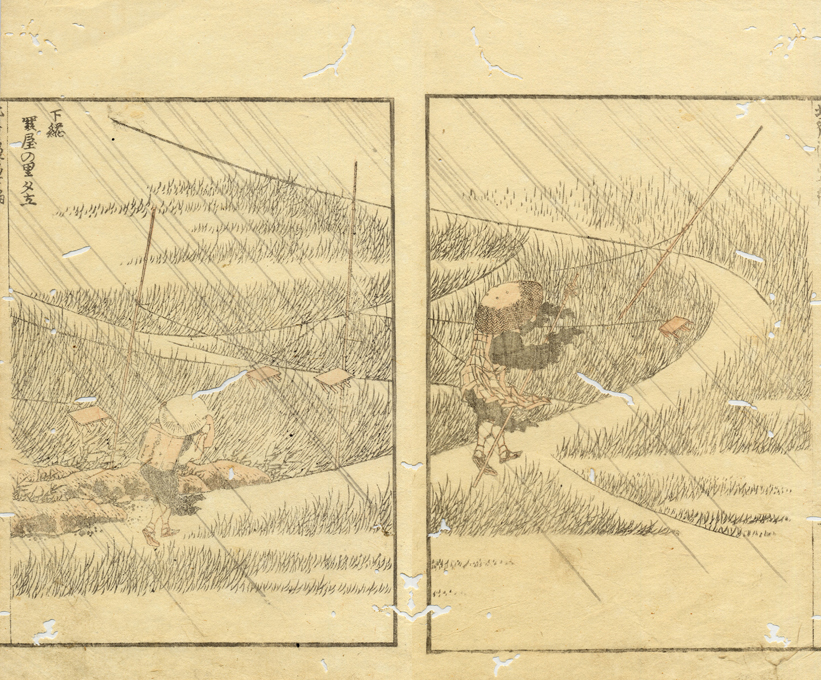
Admission
| Adult | 1200 yen |
| University and High school students | 800 yen |
| Junior High School Students and below (under 15 years old) | Free |
Calendar
■CLOSED
休館日
7,14,22-25,28
2025 / 07
7,14,22-25,28
| SUN | MON | TUE | WED | THU | FRI | SAT |
|---|
休館日
4,12,18,25-29
2025 / 08
4,12,18,25-29
| SUN | MON | TUE | WED | THU | FRI | SAT |
|---|
Hirezaki Eiho
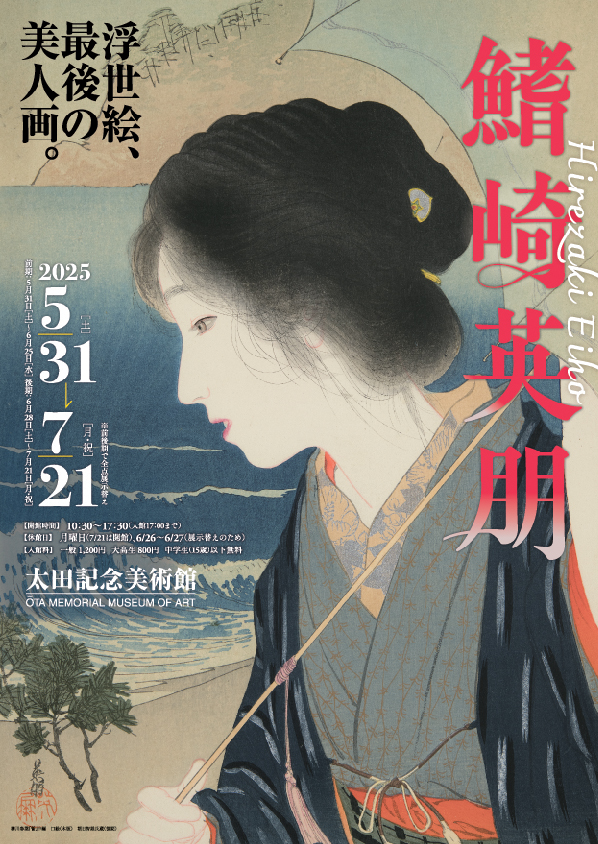
2025, May 31st-July 21st
1st Term May 31st-June 25th
2nd Term June 28th-July
Will be closed on June 2, 9, 16, 23, 26, 27, 30, July 7, 14.
Opening Hours : 10:30 a.m. – 5:30 p.m. (Last Admission: 5:00 p.m.)
Admission : Adult ¥1200 / University and High school students ¥800 / Junior High School Students and below(under 15 years old) FREE
・LIST
Hirezaki Eihō, the “last ukiyo-e artist” who disappeared between eras.
Hirezaki Eihō (1880-1968) was an artist who flourished from the late Meiji to the Shōwa era. He studied under Migita Toshihide, a pupil of the ukiyo-e artist Tsukioka Yoshitoshi, and created kuchi-e (frontispieces: multicolored woodblock prints inserted at the beginning of books), covers, and illustrations for novels and literary magazines, capturing the hearts of the general public. However, his achievements are rarely mentioned. This exhibition shines a light on the little-known “last ukiyo-e artist,” exploring how Eihō was flourished during the final era when ukiyo-e prints were a part of everyday life.
The last ukiyo-e beauty painting: Approaching Eihō’s bewitching beauty.
Hirezaki Eihō painted many women with bewitching beauty in the kuchi-e of novels and literary magazines. His popularity rivaled that of Kaburaki Kiyokata, a renowned modern painter of beautiful women. During the Taisho era, when ukiyo-e prints were nearing the end of their role as mass media, Eihō was the last artist to depict beautiful women through woodblock prints. We will explore the charm of his fascinating beauties, which marks the end of the history of ukiyo-e prints.
The unknown charm of lithographs that took the place of ukiyo-e prints.
Hirezaki Eihō has created many lithograph frontispieces as well as woodblock prints. However, his lithograph frontispieces have rarely been introduced until now. Therefore, in this exhibition, to reveal the full scope of his works, we will introduce not only his woodblock prints but also his lithographs in great volume. Please enjoy the unknown appeal of lithographs, which took the place of entertainment for the masses from ukiyo-e prints.
A large retrospective exhibition showcasing 187 pieces, including woodblock prints, lithographs, and original paintings.
In addition to published woodblock and lithograph prints, this exhibition will also feature works that reveal the production process, such as original drawings and paintings with coloring instructions (presentations). This large-scale retrospective will also feature rare hanging scrolls and sketches that reflect Eihō’s spirit. (All works will be rotated between the 1st and 2nd terms of the exhibition).
Portrait of Uesugi Kenshin — the oldest surviving hand-painted work by Eihō, painted when he was 20.
Until now, the oldest known original painting by Eihō was believed to have been made when he was 22 years old. However, this time, an original painting of Uesugi Kenshin, painted when he was 20 years old, two years older than that, has been discovered.
This work won second prize at a major exhibition and offers a glimpse into the artist’s talent in his younger days. It will be on public display for the first time during the exhibition (May 31 to June 25).
Admission
| Adult | 1200 yen |
| University and High school students | 800 yen |
| Junior High School Students and below (under 15 years old) | Free |
Calendar
■CLOSED
休館日
1,2,7,12,19,26-30
2025 / 05
1,2,7,12,19,26-30
| SUN | MON | TUE | WED | THU | FRI | SAT |
|---|
休館日
2,9,16,23,26,27,30
2025 / 06
2,9,16,23,26,27,30
| SUN | MON | TUE | WED | THU | FRI | SAT |
|---|
休館日
7,14,22-25,28
2025 / 07
7,14,22-25,28
| SUN | MON | TUE | WED | THU | FRI | SAT |
|---|
Ohara Koson
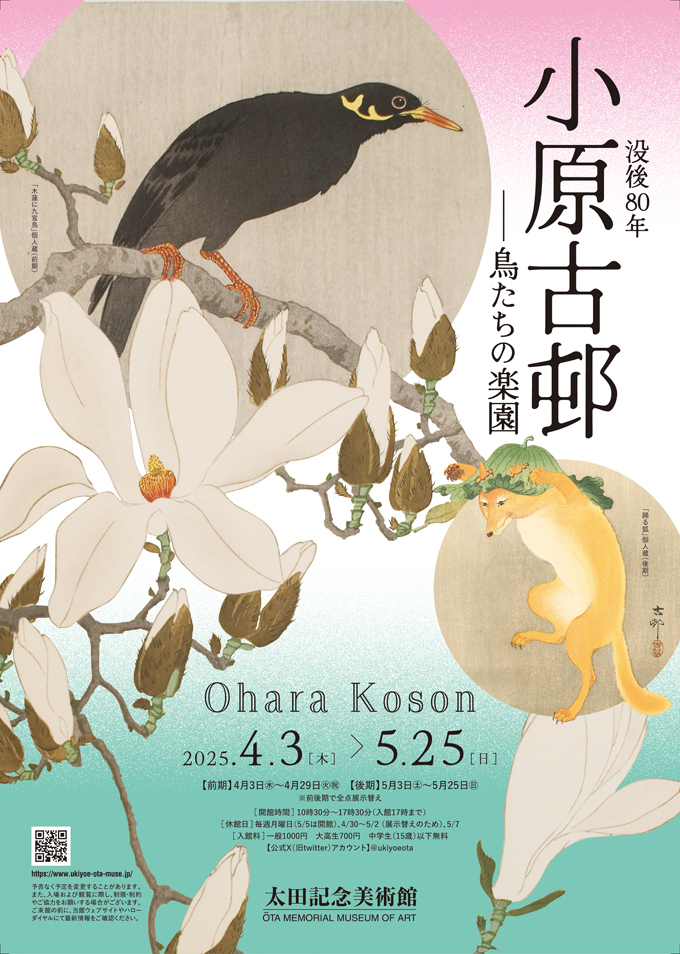
2025, April 3rd-May 25th
1st Term April 3rd-29th
2nd Term May 3rd-25th
Will be closed on April 7, 14, 21, 28, 30, May 1, 2, 7, 12, 19.
Opening Hours : 10:30 a.m. – 5:30 p.m. (Last Admission: 5:00 p.m.)
Admission : Adult ¥1000 / University and High school students ¥700 / Junior High School Students and below(under 15 years old) FREE
・LIST
Ohara Koson (1877-1945) was a master of kachō-ga (bird-and-flower pictures) and flourished from the late Meiji to early Shōwa era. Koson’s work has recently gained recognition in Japan after being overlooked for a long time. “Ohara Koson” was an exhibition held in 2019 at the Ota Memorial Museum of Art that was unexpectedly successful. This year marks the 80th anniversary of Koson’s death, so the museum will host the first exhibition on his work in six years.
Using ukiyo-e woodblock printing techniques inherited from the Edo period, he created numerous works of birds, flowers, and animals. His works are characterized by their delicate, subtle colors, which belie their origins as woodblock prints. In this exhibition, works bearing Koson’s seal will be shown that were published by publishers such as Matsuki Heikichi and Akiyama Buemon. These works were published between the late Meiji and Taisho periods. The exhibition will showcase about 130 works, with a complete change in the exhibits between the first and second halves. About a quarter will not have been shown in the previous Koson exhibition.
The exhibition will also feature kachō-ga by artists active from the Edo period to the Meiji era, such as Katsushika Hokusai, Utagawa Hiroshige, Kawanabe Kyosai, and Watanabe Seitei. Visitors are invited to enjoy the birds’ paradise depicted by Ohara Koson and the others.
Admission
| Adult | 1000 yen |
| University and High school students | 700 yen |
| Junior High School Students and below (under 15 years old) | Free |
Calendar
■CLOSED
休館日
1,2,7,14,21,28,30
2025 / 4
1,2,7,14,21,28,30
| SUN | MON | TUE | WED | THU | FRI | SAT |
|---|
休館日
1,2,7,12,19,26-30
2025 / 05
1,2,7,12,19,26-30
| SUN | MON | TUE | WED | THU | FRI | SAT |
|---|
Toyohara Kunichika
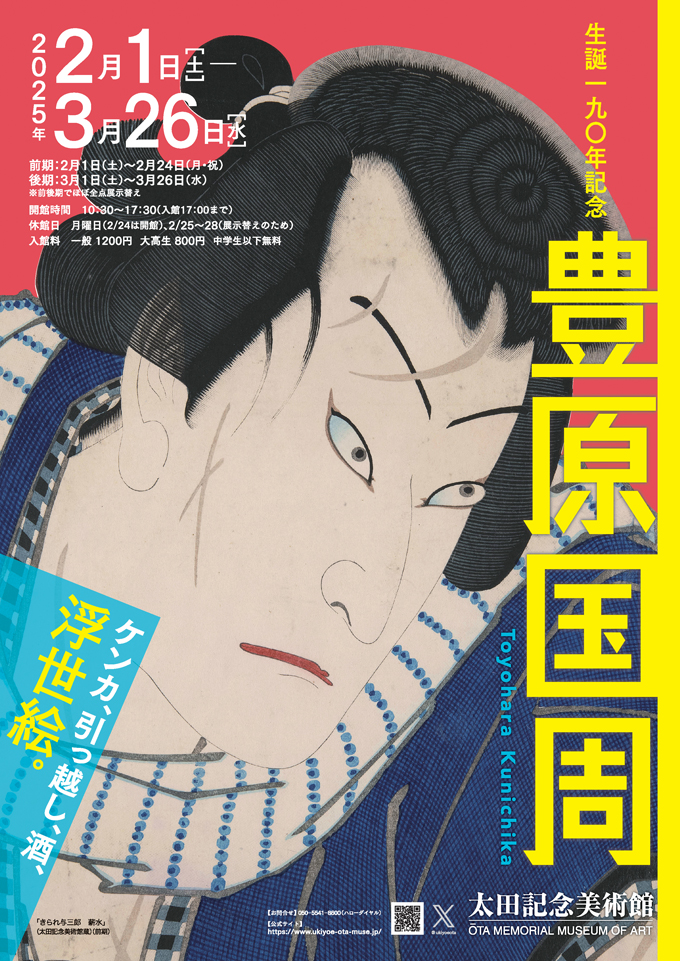
2025, February 1st-March 26th
1st Term February 1st-24th
2nd Term March 1st-26th
Will be closed on February 3, 10, 17, 25-28, March 3, 10, 17、24.
Opening Hours : 10:30 a.m. – 5:30 p.m. (Last Admission: 5:00 p.m.)
Admission : Adult ¥1200 / University and High school students ¥800 / Junior High School Students and below(under 15 years old) FREE
The year 2025 marks the 190th anniversary of the birth of Toyohara Kunichika (1835–1900), an ukiyo-e artist of the Bakumatsu (final years the Tokugawa shogunate) and Meiji era. With his vivid yakusha-e (ukiyo-e pictures depicting kabuki actors), Kunichika prevailed for many years as the foremost artist of his generation. After earning acclaim for his bijinga (ukiyo-e pictures depicting female beauty), Kunichika became a rival of Tsukioka Yoshitoshi and Yoshitoshi’s protégé Yōshū Chikanobu. Kunichika has been hailed as deemed the most prolific ukiyo-e artist of the Meiji period. A number of Toyohara Kunichika exhibitions have already been held in Japan, but these exhibitions generally limited their scope to his yakusha-e pieces. This exhibition differs from these. Drawing from the latest scholarly findings, it presents the largest ever retrospective on Kunichika’s works, with a 210-strong selection that avoids focusing excessively on any particular genre or time period. As well as showcasing his signature yakusha-e prints, the selection also includes his bijinga, which represented another of his artistic avenues. It also includes his nikuhitsu-ga (ukiyo-e pictures that were paintings rather than woodblock prints) and the genres he dabbled during his early years as a painter, namely musha-e (ukiyo-e pictures depicting warriors) and landscapes. We hope this varied selection offers new insights into Toyohara Kunichika.
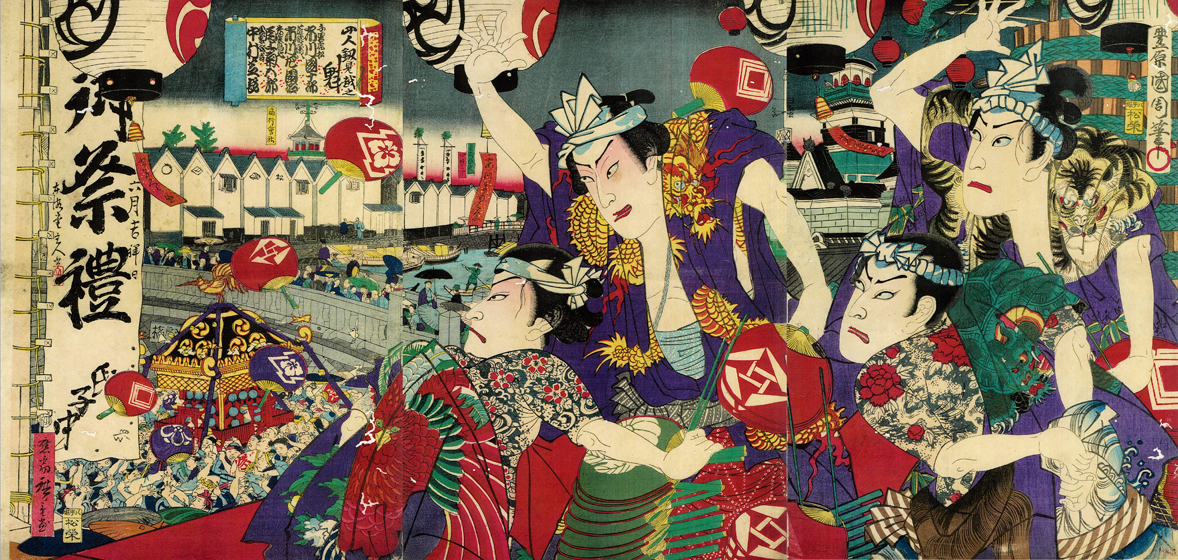
Exhibition of All 12 Pieces in the Seminal Ōkubi-e Series
This exhibition features all 12 of the key works in the Gusokuya Ōkubi-e Series, a seminal series of works by Kunichika. The exhibition includes many early works and they are preserved in good condition. The exhibition also includes nikuhitsu-ga. One such painting is “Cherry-blossom Viewing on the Sumida River Embankment”, which was exhibited at the 1893 Chicago World Fair. Another is “Courtesan and Cuckoo”, which Kunichika painted while sojourning in Iwatsuki and which is the first bijinga hand drawing he released.
Various Episodes of Kunichika
Kunichika was also known for embodying the openhearted, jovial qualities associated with people born and bred in the capital Edo. Many colorful episodes occurred throughout in his life: He got into a drunken brawl with Kawanabe Kyōsai, and the fight was broken up by Yōshū Chikanobu; after falling out with Ichikawa Danjūrō XI, he drew Ichikawa with protruding eyes; he was the second person to be declared bankrupt in Tokyo; and he moved house 117 times, of which he wisecracked that he could never best Hokusai in painting but that he could best him in moving house.
Collaboration with Seikado Bunko Art Museum
In conjunction with this exhibition, Seikado Bunko Art Museum is running a series on Toyohara Kunichika from January 25 to March 23, 2025. During this period, our two museums are engaging in a number of collaborations. For example, visitors who visit one museum can get a discount on entrance fee to the other museum, and we have carried out joint research into exhibits prior to the exhibition. The outcomes of the research have been utilized in some of the exhibition content.
Admission
| Adult | 1200円 |
| University and High school students | 800円 |
| Junior High School Students and below (under 15 years old) | FREE |
Calendar
■CLOSED
休館日
3,10,17,25-28
2025 / 2
3,10,17,25-28
| SUN | MON | TUE | WED | THU | FRI | SAT |
|---|
休館日
3,10,17,24,27-31
2025 / 03
3,10,17,24,27-31
| SUN | MON | TUE | WED | THU | FRI | SAT |
|---|
Edo Gourmet Dishes
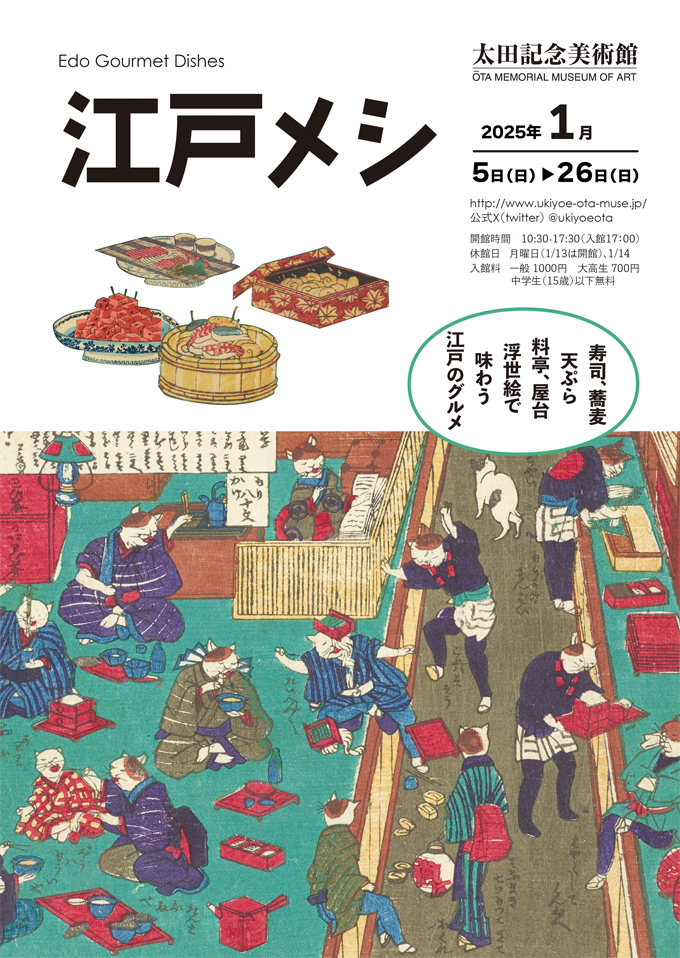
2025, January 5th-26th
We anticipate extreme congestion on Friday, January 24th, Saturday, January 25th, and Sunday, January 26th, as these are the final days of the exhibition. There is a possibility that you may need to wait several tens of minutes for entry. We kindly ask for your understanding and patience when visiting.
Opening Hours : 10:30 a.m. – 5:30 p.m. (Last Admission: 5:00 p.m.)
Admission : Adult ¥1000 / University and High school students ¥700 / Junior High School Students and below(under 15 years old) FREE
The Edo period was an era of significant development in the Japanese food culture. Today, Japanese dishes, such as sushi, soba, and tempura, enjoy great popularity, but their roots can be traced back to the Edo period. At that time, these Japanese foods were enjoyed by common people as easily accessible fast food. Moreover, during the Edo period, seasonings essential for flavoring dishes, such as miso, vinegar, and soy sauce, became widely distributed. The people of Edo not only cooked at home; they also bought side dishes from nearby shops, visited food stalls, and dined at restaurants, savoring a variety of delicious cuisines.
Ukiyo-e, which is based on the lives of common people, depicts a wide variety of dishes, ingredients, and dining scenes. This exhibition will present the charm of “Edo Gourmet Dishes” through 90 works of ukiyo-e by popular artists, such as Hokusai, Hiroshige, and Kuniyoshi.
Sushi, soba noodles, and tempura: “Edo Gourmet Dishes” in ukiyo-e
Sushi, soba noodles, and tempura, which have their roots in the Edo period, are popular Japanese foods. Their popularity has spread widely as fast foods that are easily enjoyed by common people. Here, we introduce “Edo Gourmet Dishes” and their ingredients and seasonings.
Hokusai, Hiroshige, and Kuniyoshi: Popular artists who depicted “Edo Gourmet Dishes”
Although Hokusai and Hiroshige are famous for their landscapes, and Kuniyoshi is famous for warrior pictures and caricatures, they also excelled in capturing the lives of the Edo people in their works. Please pay attention to the various ways “Edo Gourmet Dishes” are expressed, particularly in terms of differences in the famous masterpieces by Hokusai, Hiroshige, and Kuniyoshi.
Restaurants, food stalls, and home: “Edo Gourmet Dishes” enjoyed at various places
The Edo people not only cooked; they also bought prepared dishes from nearby stores and enjoyed eating out at food stalls. People also held banquets in fancy restaurants. Here, we introduce dining scenes depicting “Edo Gourmet Dishes” enjoyed at various places.
Admission
| Adult | 1000 yen |
| University and High school students | 700 yen |
| Junior High School Students and below (under 15 years old) | Free |
Calendar
■CLOSED
休館日
1-4,6,14,20,27-31
2025 / 1
1-4,6,14,20,27-31
| SUN | MON | TUE | WED | THU | FRI | SAT |
|---|
HIROSHIGE BLUE
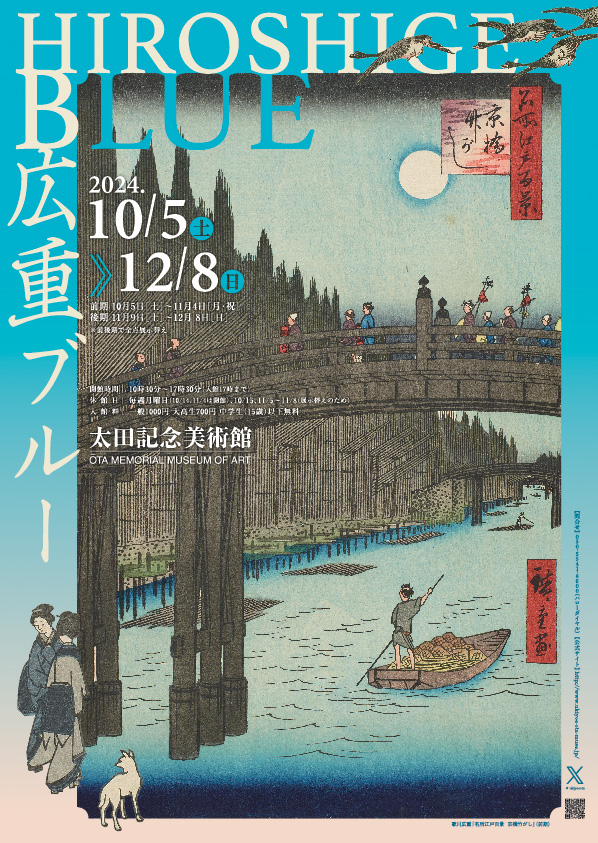
2024, October 5th-December 8th
1st Term October 5th-November 4th
2nd Term November 9th-December 8th
Will be closed on October 7, 15, 21, 28, November5-8, 11, 18, 25, December 2.
Opening Hours : 10:30 a.m. – 5:30 p.m. (Last Admission: 5:00 p.m.)
Admission : Adult ¥1000 / University and High school students ¥700 / Junior High School Students and below(under 15 years old) FREE
Utagawa Hiroshige (1797-1858) was a master of landscape paintings. His works are still popular today, especially the beautiful deep blues of the sky and sea. Those were painted with a blue ink called “Bero-ai (prussian blue)” which was used for ukiyo-e since around 1830. Many artists were inspired by Bero-ai’s beauty and used it to draw landscapes. Hiroshige, in his mid-30s at the time, was one such artist. Once Hiroshige discovered landscape paintings through his encounter with Bero-ai, he gained popularity by delicately drawing the ever-changing sky and water surface. Since then, he continued to produce poetic masterpieces until he passed away, establishing his position in the ukiyo-e world. The exhibition will mainly present Hiroshige’s masterpieces using Bero-ai to bring out the charm of “Hiroshige Blue,” which received worldwide acclaim.
Highlight of Exhibition 1 New era through Bero-ai – masterpieces of landscape paintings
We will introduce some of the famous works colored in beautiful blue from Hiroshige’s first seller of landscape pictures “Famous Places in Edo,” to “Fifty-three Stations of the Tōkaidō Road” which made him a star, to the masterpiece of his later years “One Hundred Famous Views of Edo.”
Highlight of Exhibition 2 The blue era of the ukiyo-e world
Bero-ai reproduces vivid blue, which fascinated many ukiyo-e artists, such as Katsushika Hokusai, Keisai Eisen, and Utagawa Kuniyoshi. The exhibition will also present some works produced in the background of the Bero-ai trend including Hokusai’s landscape painting masterpiece “Thirty-Six Views of Mt. Fuji.”
Highlight of Exhibition 3 Works before the appearance of Bero-ai
During his training, Hiroshige mainly drew pictures of beautiful women, kabuki actors, and warriors. This section introduces his work before he became popular for landscape paintings. What kind of artist would Hiroshige have been if “Bero-ai (prussian blue)” never appeared? It may be fun to view exhibitions with this caveat in mind.
Admission
| Adult | 1000円 |
| University and High school students | 700円 |
| Junior High School Students and below (under 15 years old) | FREE |
Calendar
■CLOSED
休館日
1-4,7,15,21,28
2024 / 10
1-4,7,15,21,28
| SUN | MON | TUE | WED | THU | FRI | SAT |
|---|
休館日
5-8,11,18,25
2024 / 11
5-8,11,18,25
| SUN | MON | TUE | WED | THU | FRI | SAT |
|---|
プレスの方へ
本展のプレスリリースのダウンロード、掲載や取材のお申込みはこちらから。
Ukiyo-e Haunted House
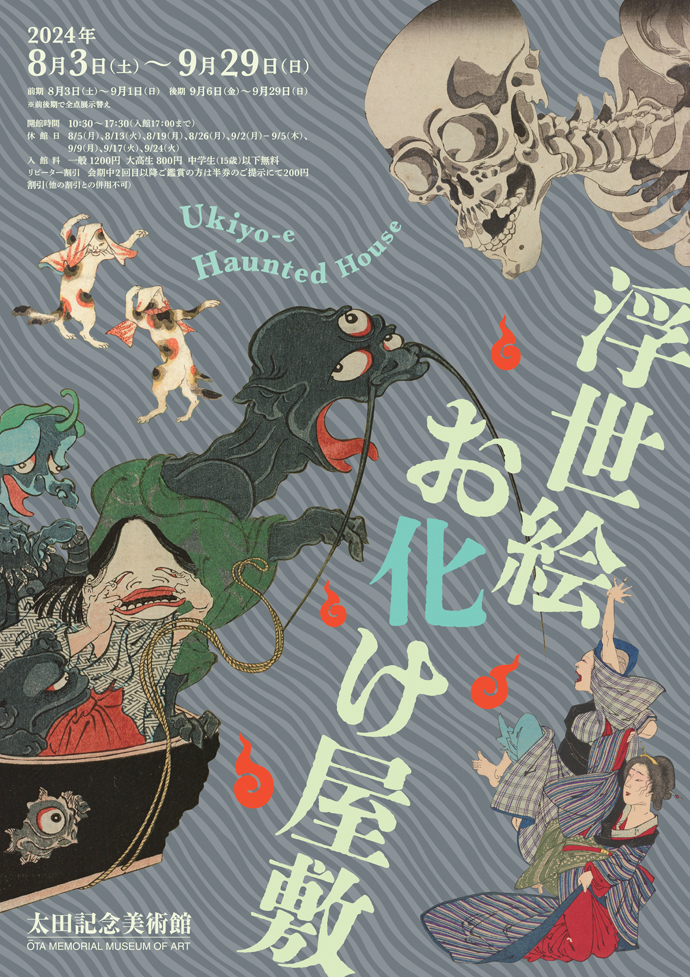
2024, August 2nd-29th
1st August 3rd-September
2nd Term September 6th-29th
Will be closed on August 5, 13, 19, 26, September 2-5, 9, 17, 24.
Opening Hours : 10:30 a.m. – 5:30 p.m. (Last Admission: 5:00 p.m.)
Admission : Adult ¥1200 / University and High school students ¥800 / Junior High School Students and below(under 15 years old) FREE
A wide variety of ghosts are depicted in ukiyo-e, from eerie specters lurking in dilapidated houses to vengeful spirits glaring at viewers with terrifying expressions. While some frighten us, others make us laugh with their humorous appearance. This exhibition features a large collection of ukiyo-e masterpieces by popular artists like Utagawa Kunisada, Utagawa Kuniyoshi and Tsukioka Yoshitoshi, showcasing various types of specters and ghosts. (Please note that we will swap out all the works between the first and second terms)
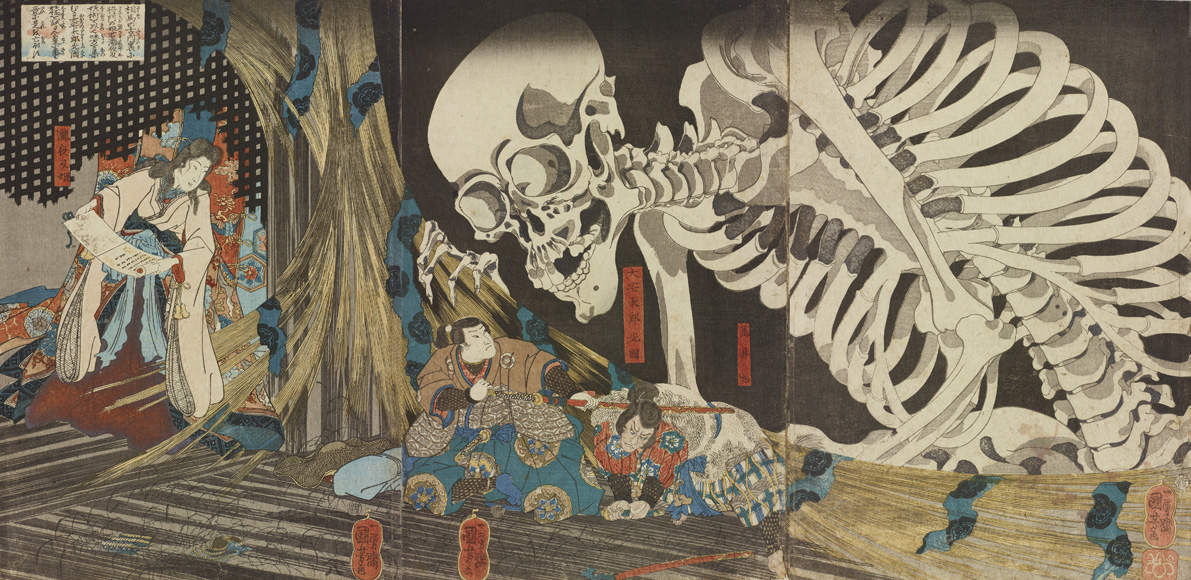
① Ghost and Specters by Popular Ukiyo-e Artists
In this exhibition, you can enjoy a large number of ghost ukiyo-e masterpieces by popular artists. A highlight is Utagawa Kuniyoshi’s “Takiyasha-hime Summoning a Skeleton at the Haunted Old Palace at Sōma” (on display during the second term), one of the most famous ghost ukiyo-e prints.
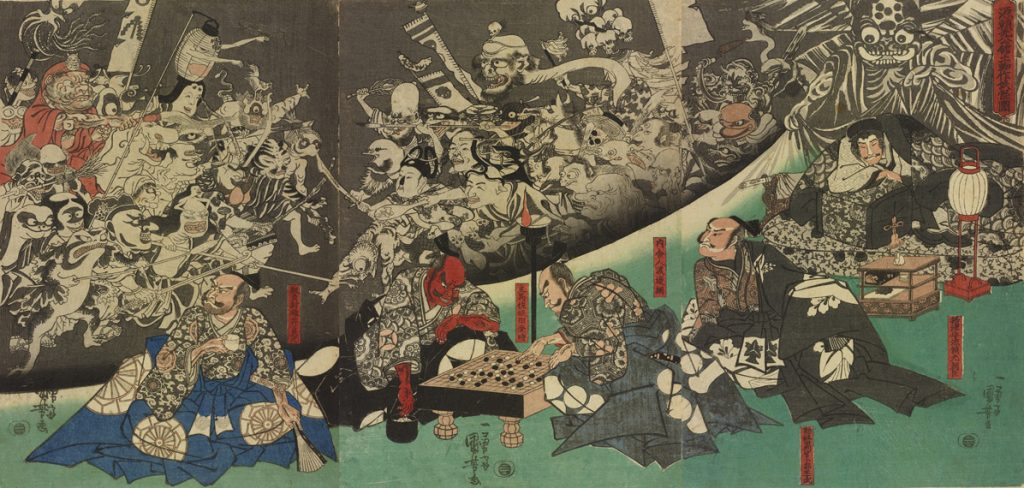

② Cute and Humorous Ghosts
The exhibition also features a lighter side, with depictions of cute and humorous ghosts, such as haunted cats dancing playfully, kappa (water imps) with human-like expressions, and even specters resembling stuffed animals.
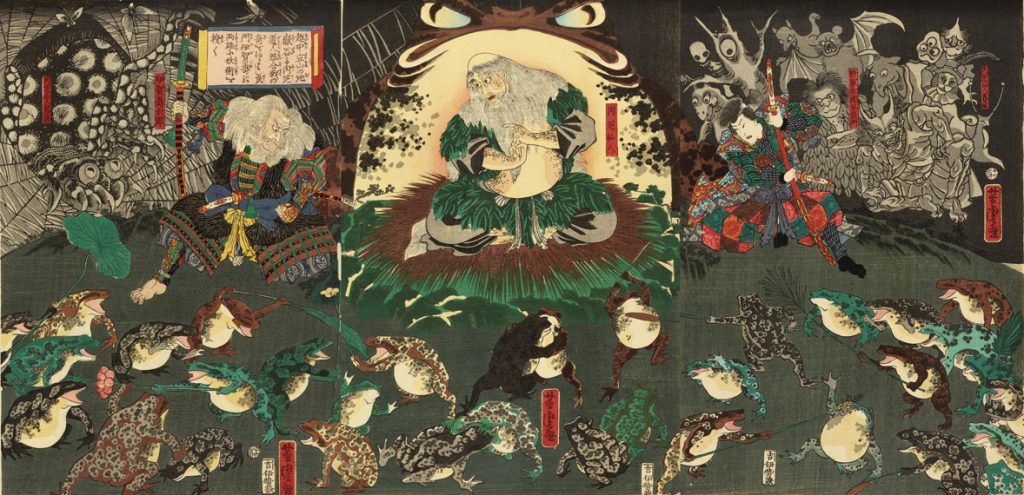
③ Approximately 20% of the Exhibits Showcased for the First Time.
36 pieces of the 174 works on display are new acquisitions, showcased for the first time. Whether you’re a first-time visitor or a returning guest, we hope you enjoy encountering this variety of ghosts.
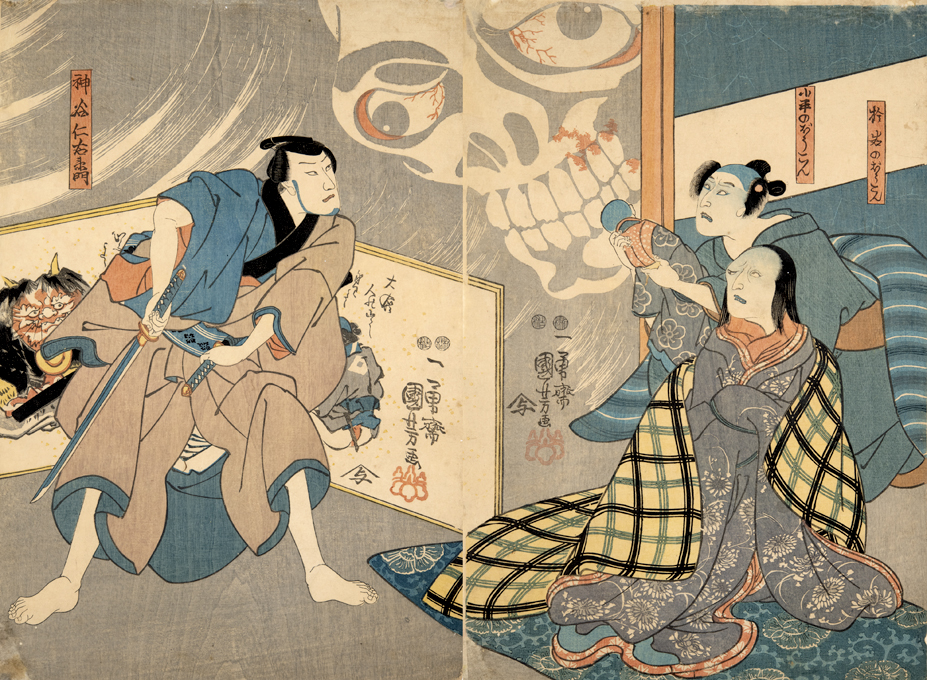
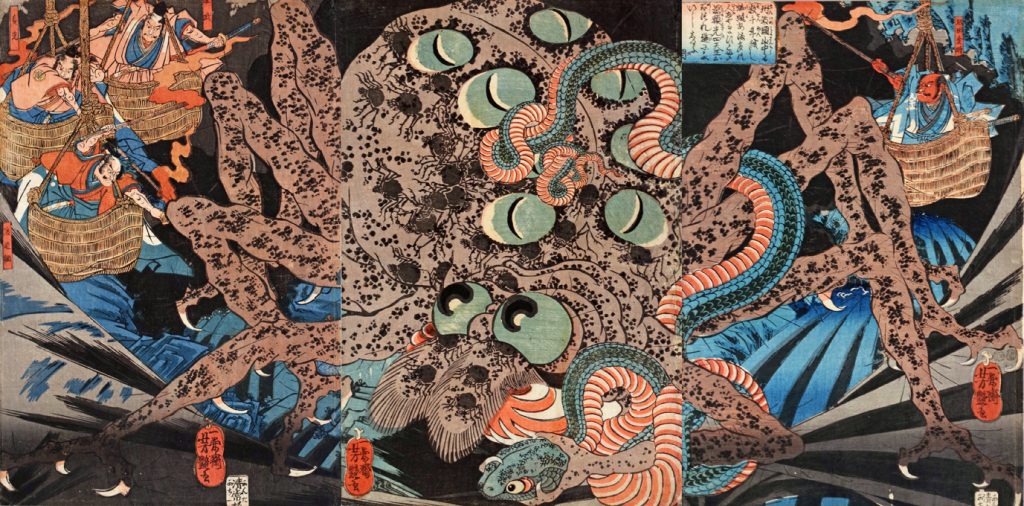
Admission
| Adult | 1200 yen |
| University and High school students | 800 yen |
| Junior High School Students and below (under 15 years old) | Free |
Calendar
■CLOSED
休館日
1,2,5,13,19,26
2024 / 8
1,2,5,13,19,26
| SUN | MON | TUE | WED | THU | FRI | SAT |
|---|
休館日
2-5,9,17,24,30
2024 / 9
2-5,9,17,24,30
| SUN | MON | TUE | WED | THU | FRI | SAT |
|---|
